On our first return trip to Japan since leaving a year ago, we wanted to spend some time outside, but we didn’t want to carry a full complement of hiking/camping gear. Instead, we settled for a unique cycle route that connects Japan’s main island of Honshu to the island of Shikoku, passing over six smaller islands in the Seto Inland Sea.
The Shimanami Kaidō (しまなみ海道) is an expressway with an integrated cycle lane connecting Onomichi, Hiroshima, and Imabari, Ehime. The 70km route is famed for its scenic views and several long bridges connecting the islands.
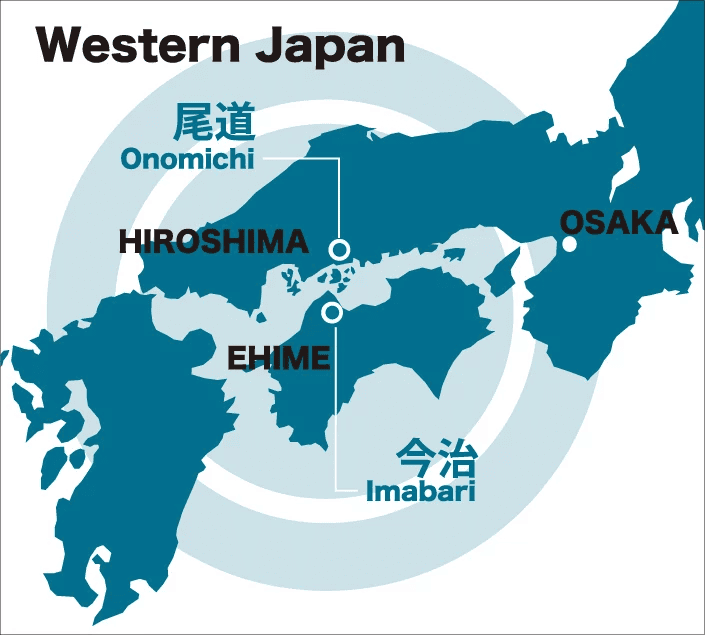
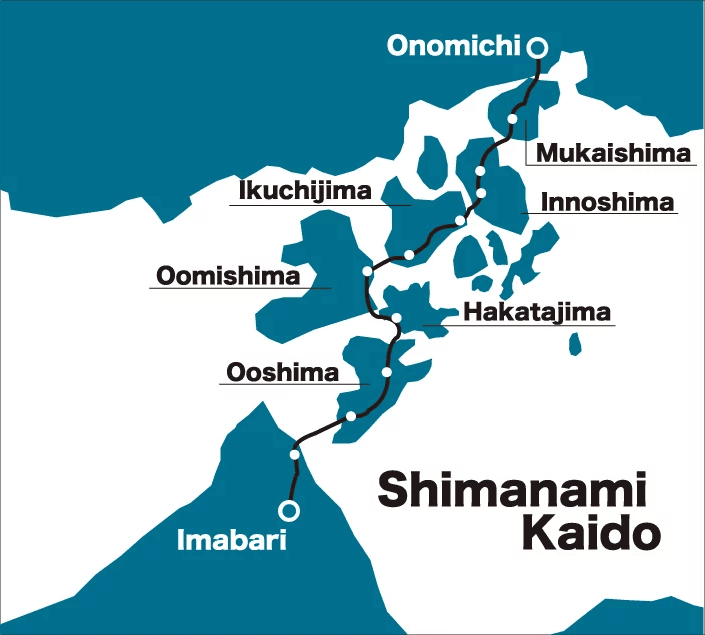
We split the trip over two days, staying overnight at the start point and about two-thirds of the way through. You can complete the whole route in one day, but you wouldn’t have much time to pause and enjoy the sights along the way.
You can cycle the route in either direction, but we choose to start at Onomichi since it’s easily accessible via the Shinkansen train from Tokyo in about 4.5 hours.
Onomichi City (尾道市)
We arrived in Onomichi the evening before and stayed overnight at urashima INN-GANGI. We used the convenient Sagawa Express service to send our bags between each night’s accommodation, meaning we could cycle without carrying anything heavy.
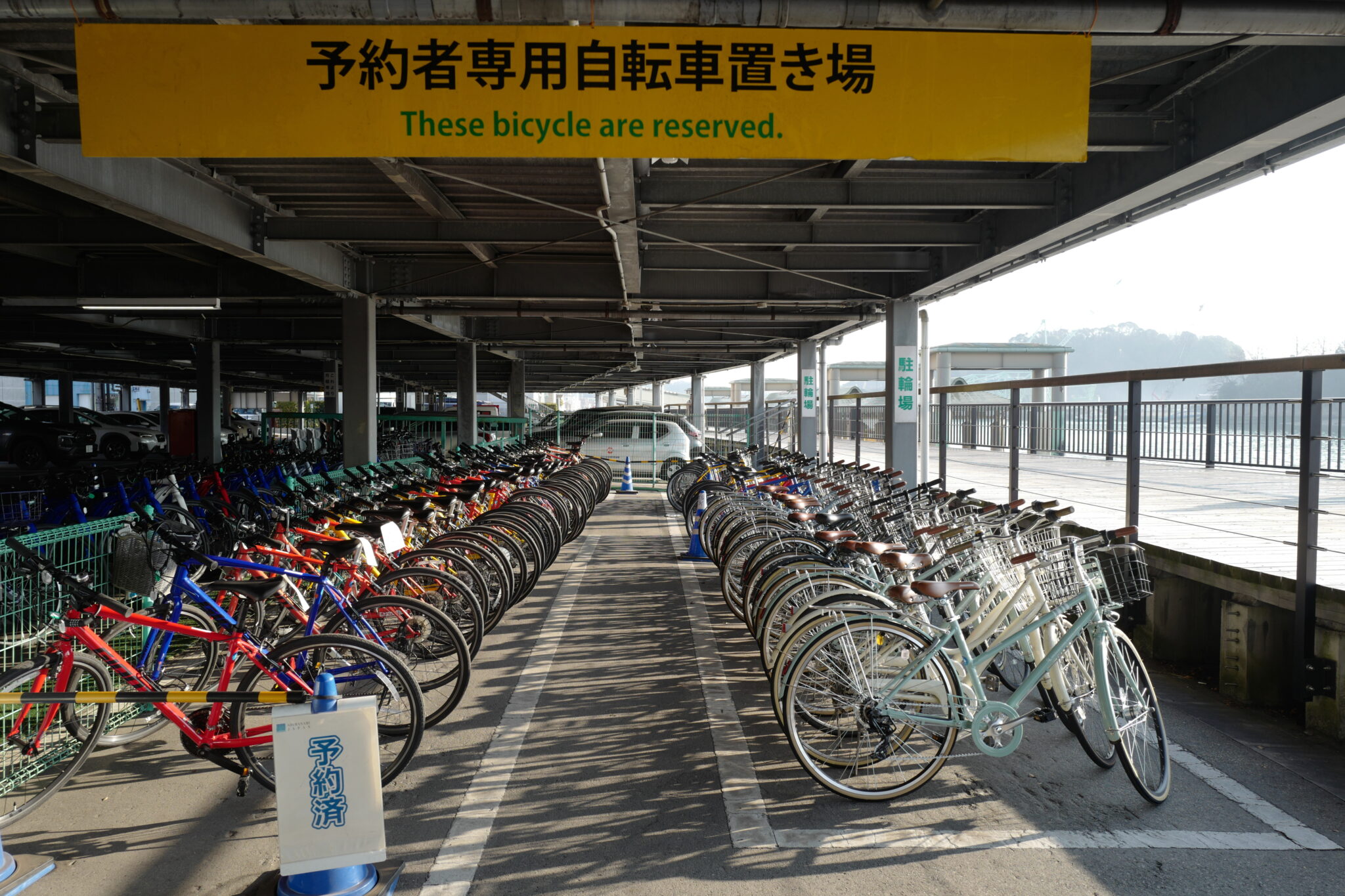
You can reserve bicycles in advance from several places, but we picked the official rental provider with 10 cycle terminals along the route and numerous options. We picked our bikes up at 9 am, and the process was straightforward and fast.
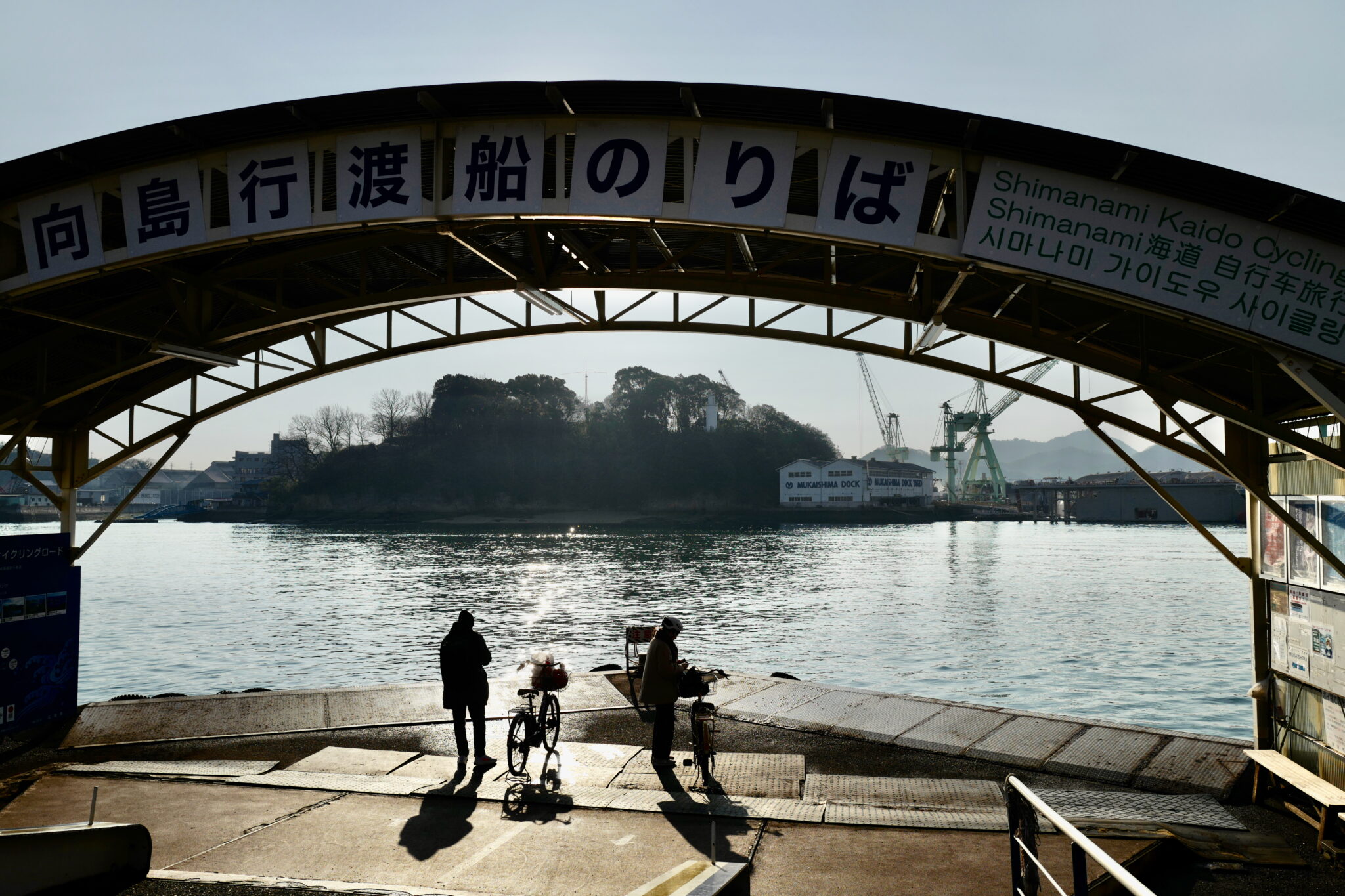
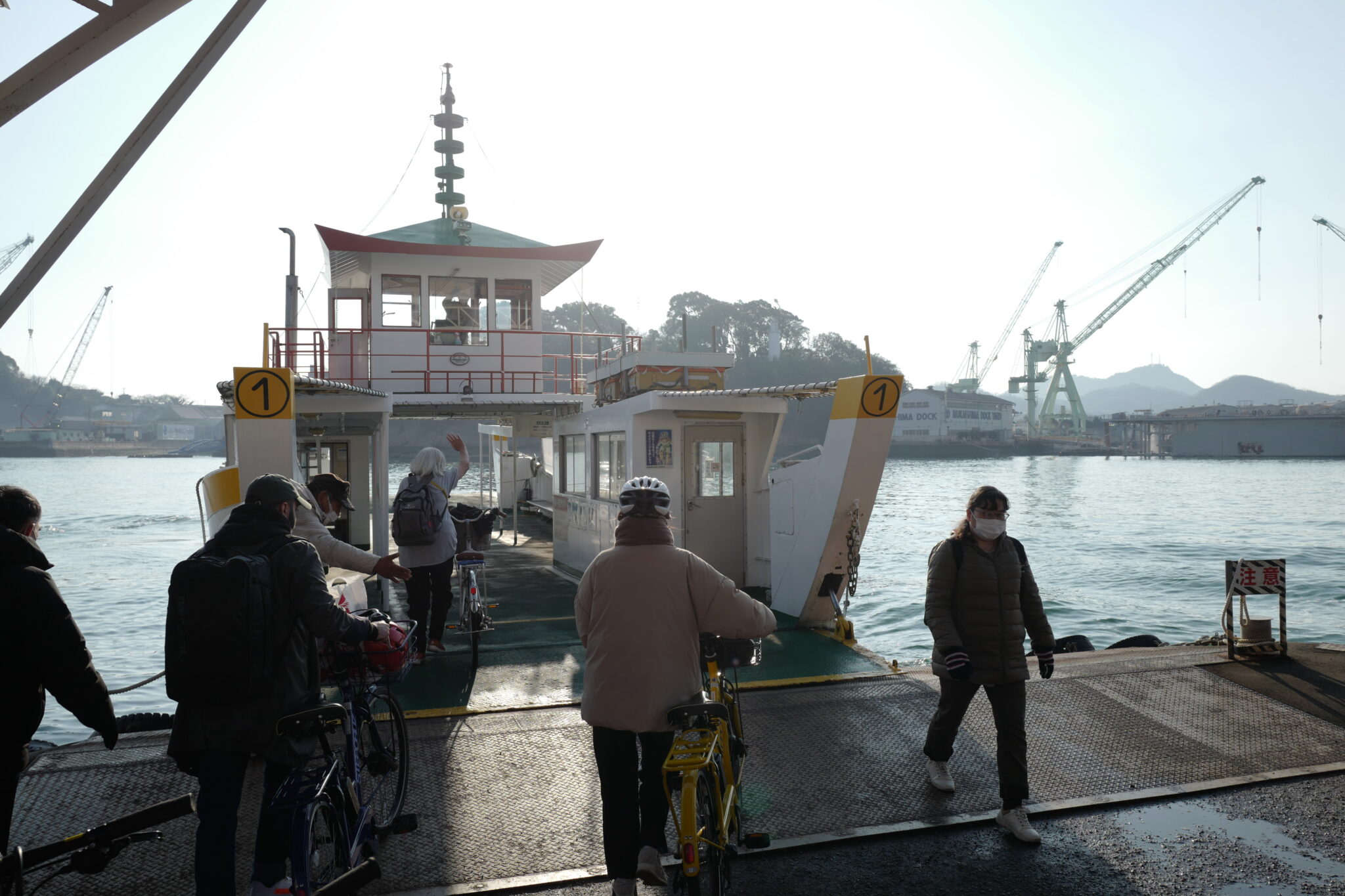
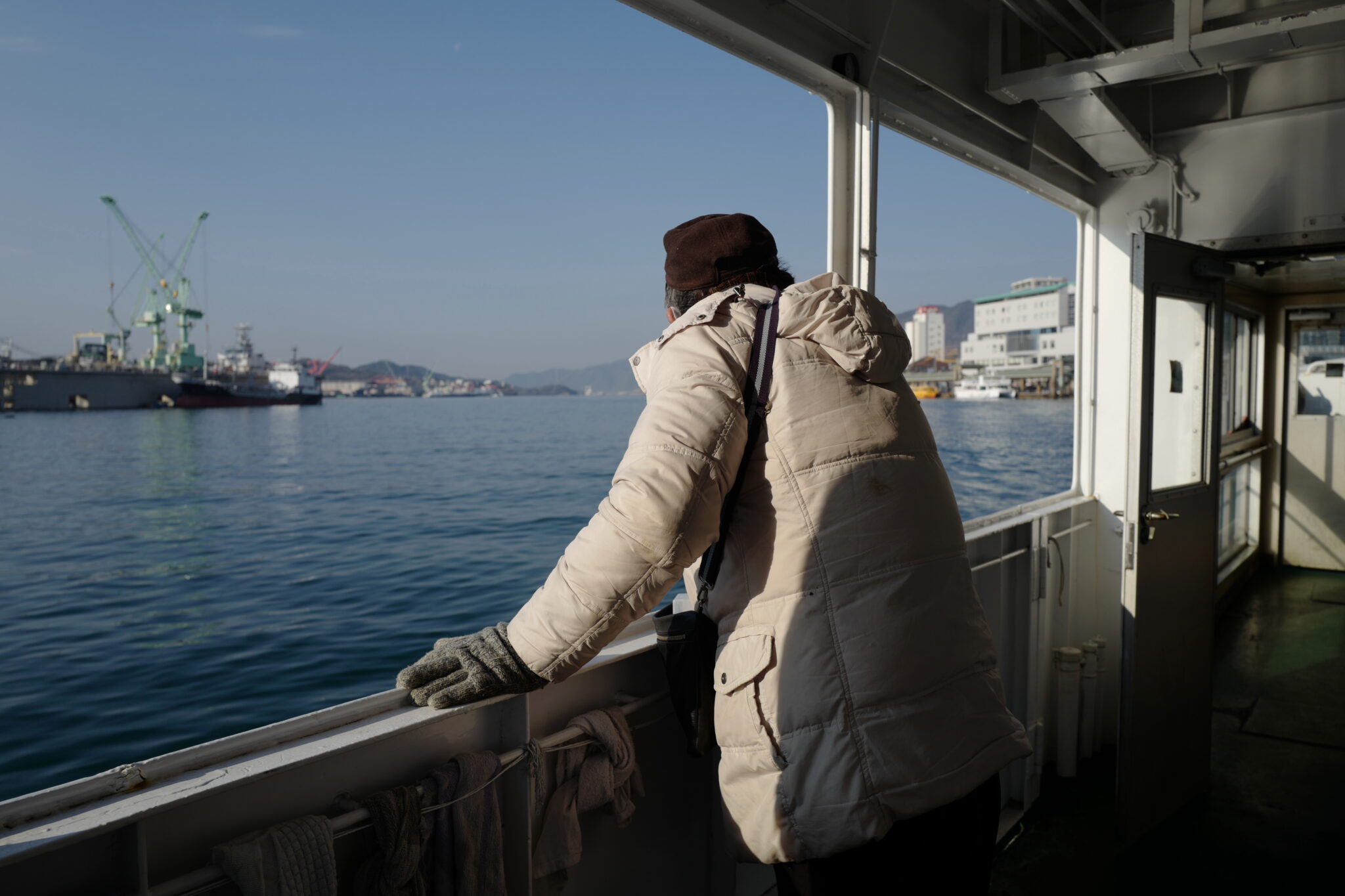
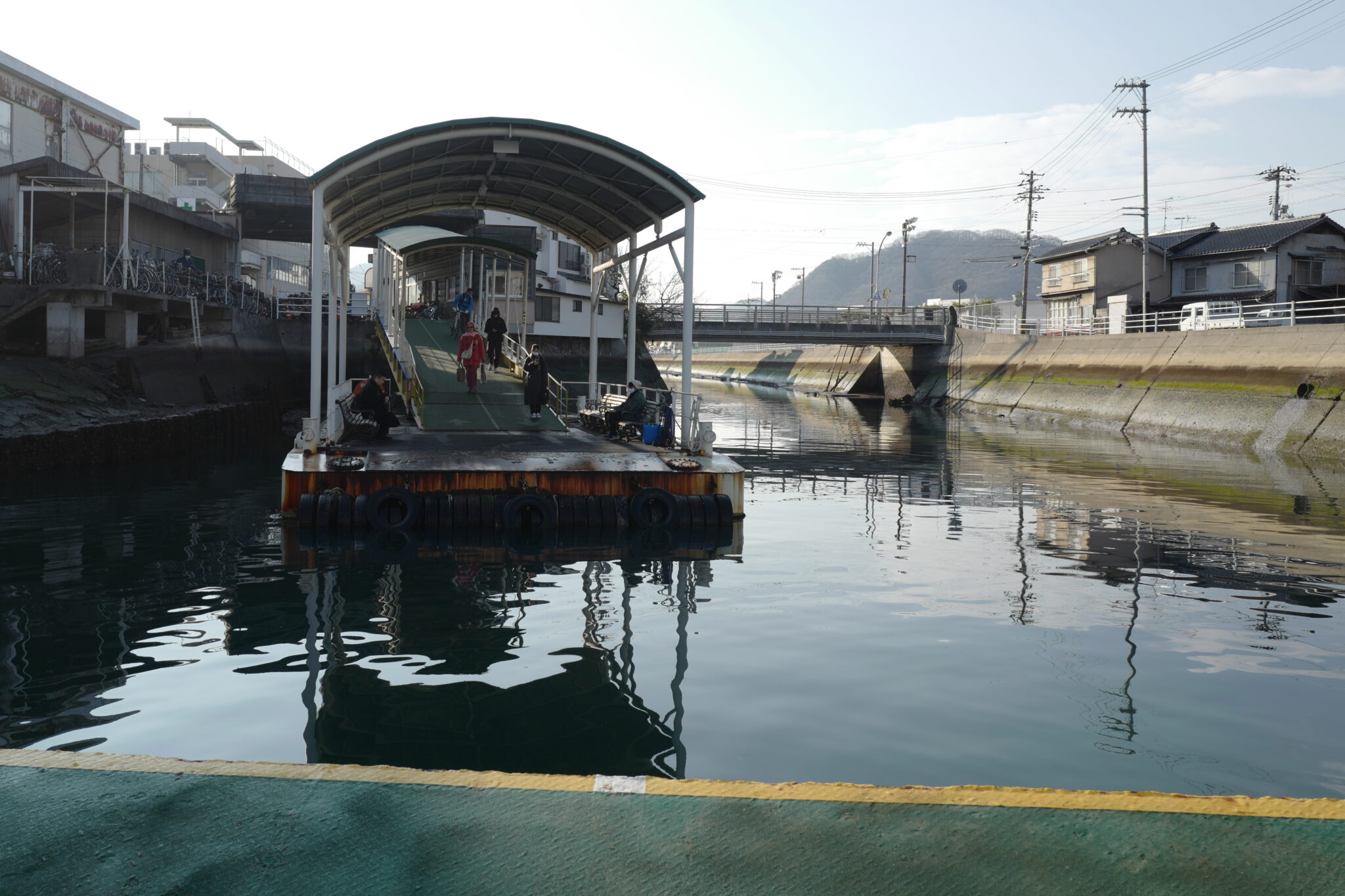
Right beside the rental terminal is a small ferry that takes you across to the first island of Mukashima in about 10 minutes at a nominal cost of 110 yen/person + bike. There were only two other people with bicycles on the ferry, and we soon lost them and had the road to ourselves the entire way (due to being the low season).
Mukashima Island (向島)
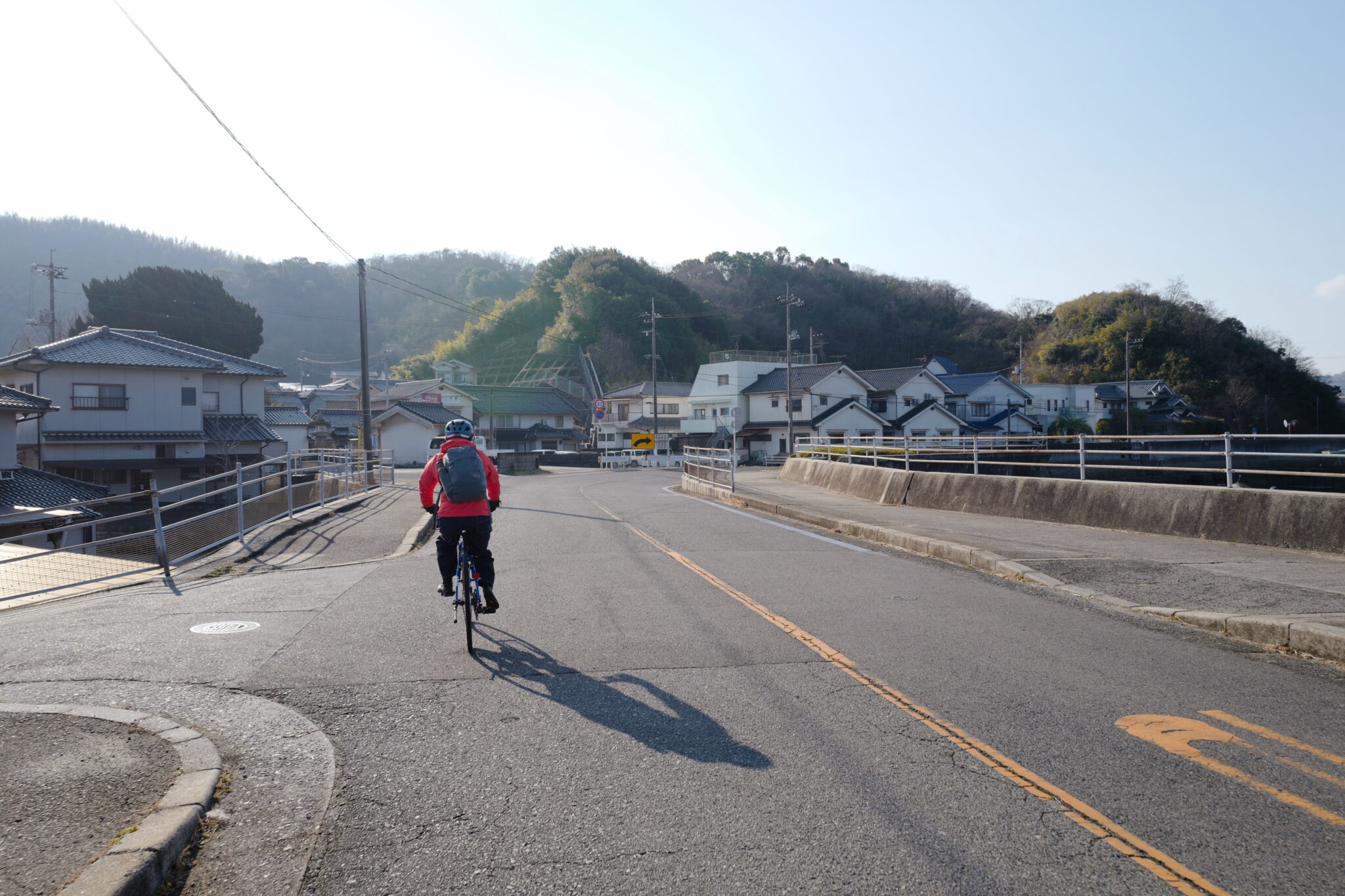
There is a blue line painted on the road and many signs that make the route easy to follow. We set off at a fast pace, which gradually slowed during the day as the saddle sore set in!
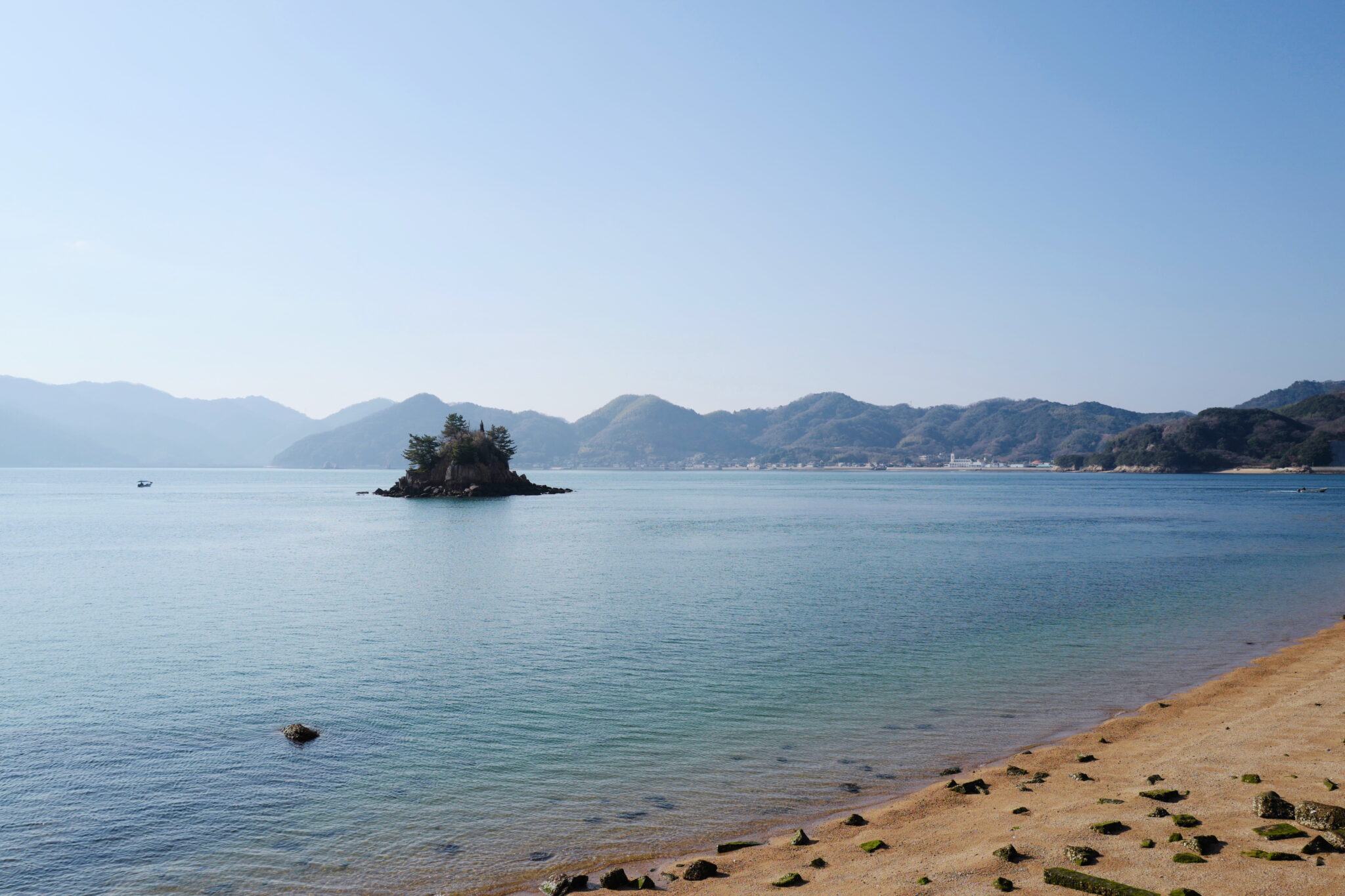
We got lucky with the weather. Bright, clear skies followed us on both days, providing gorgeous views out over the many islands that dot the Seto Inland Sea.
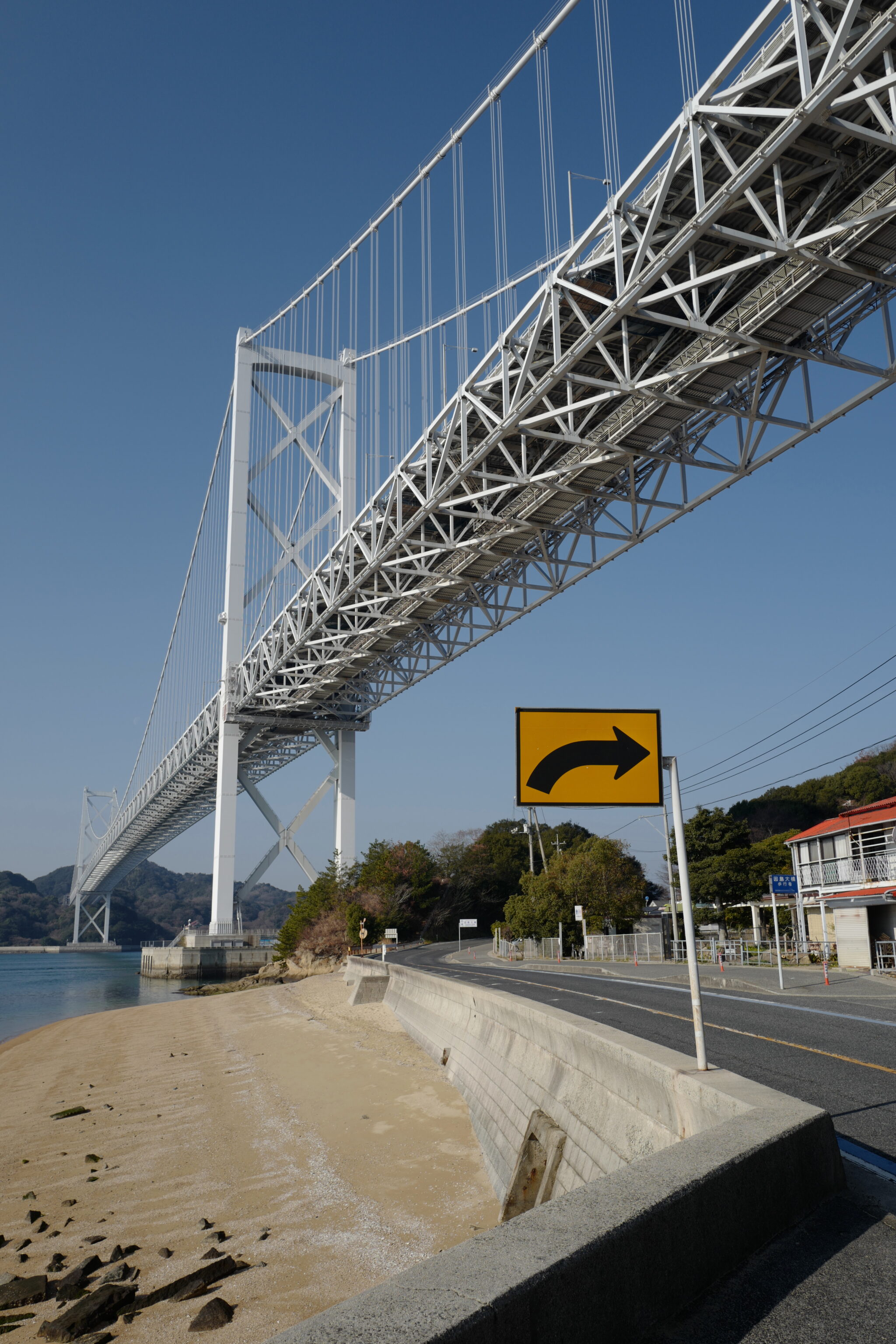
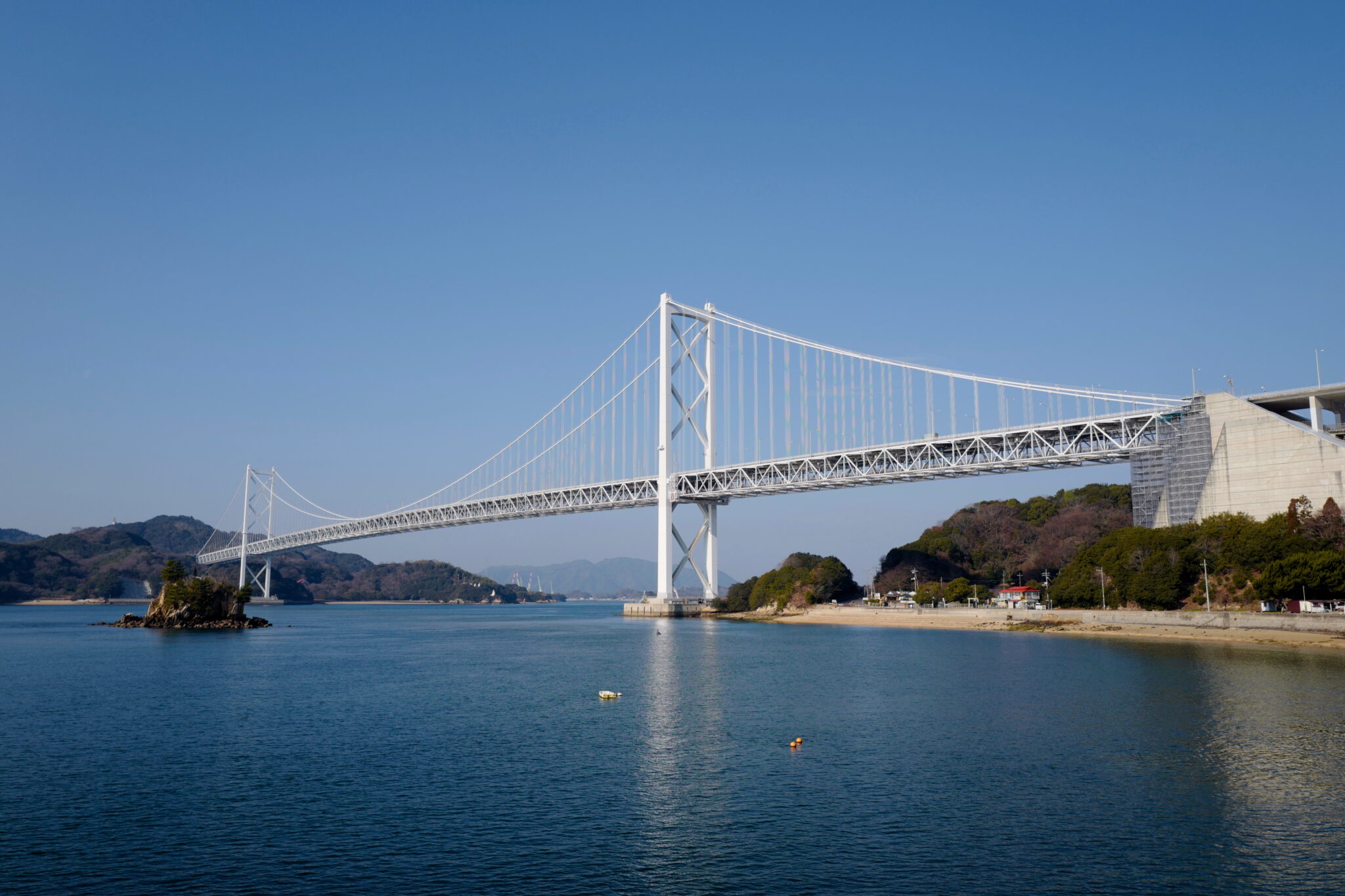
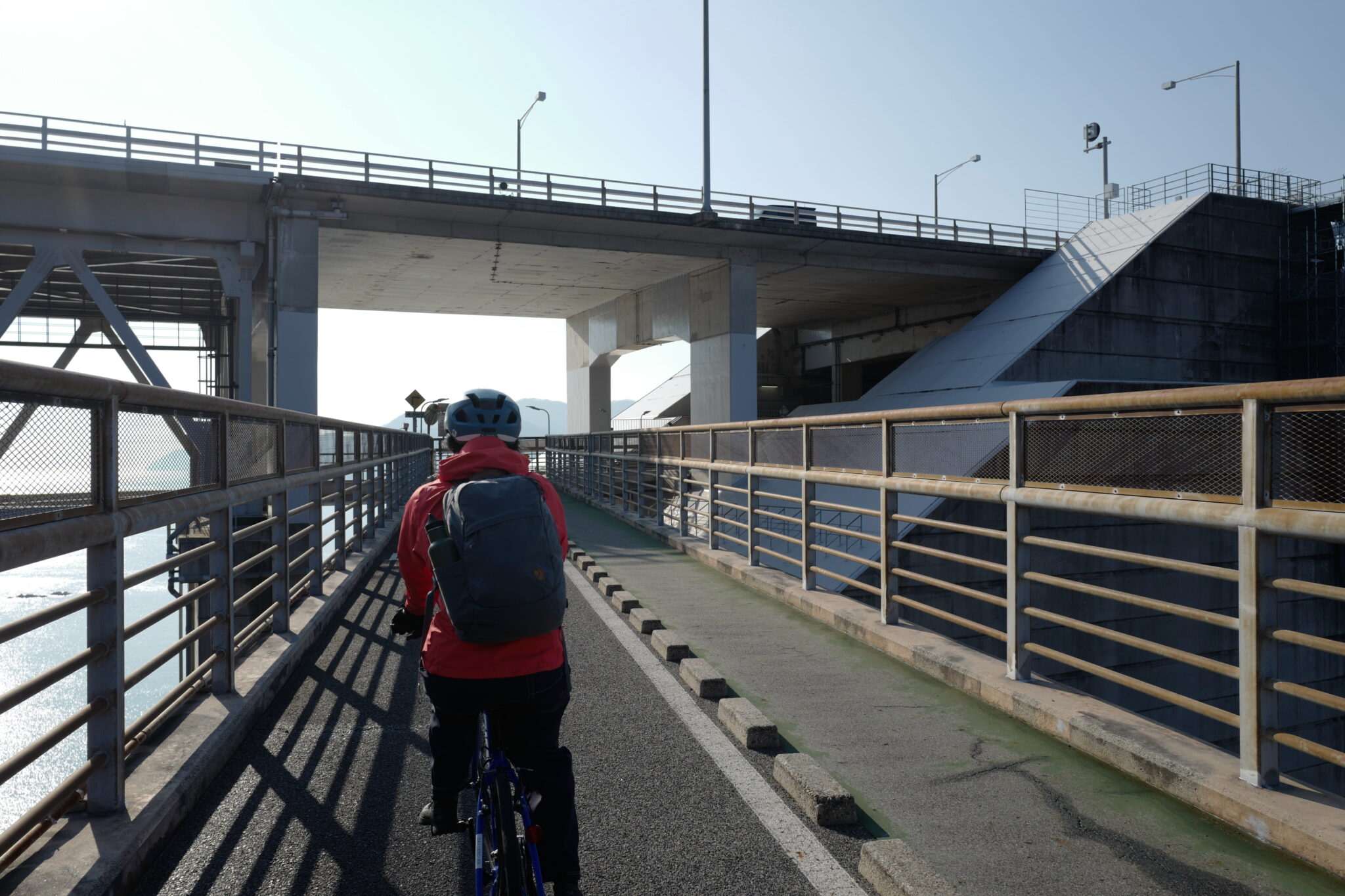
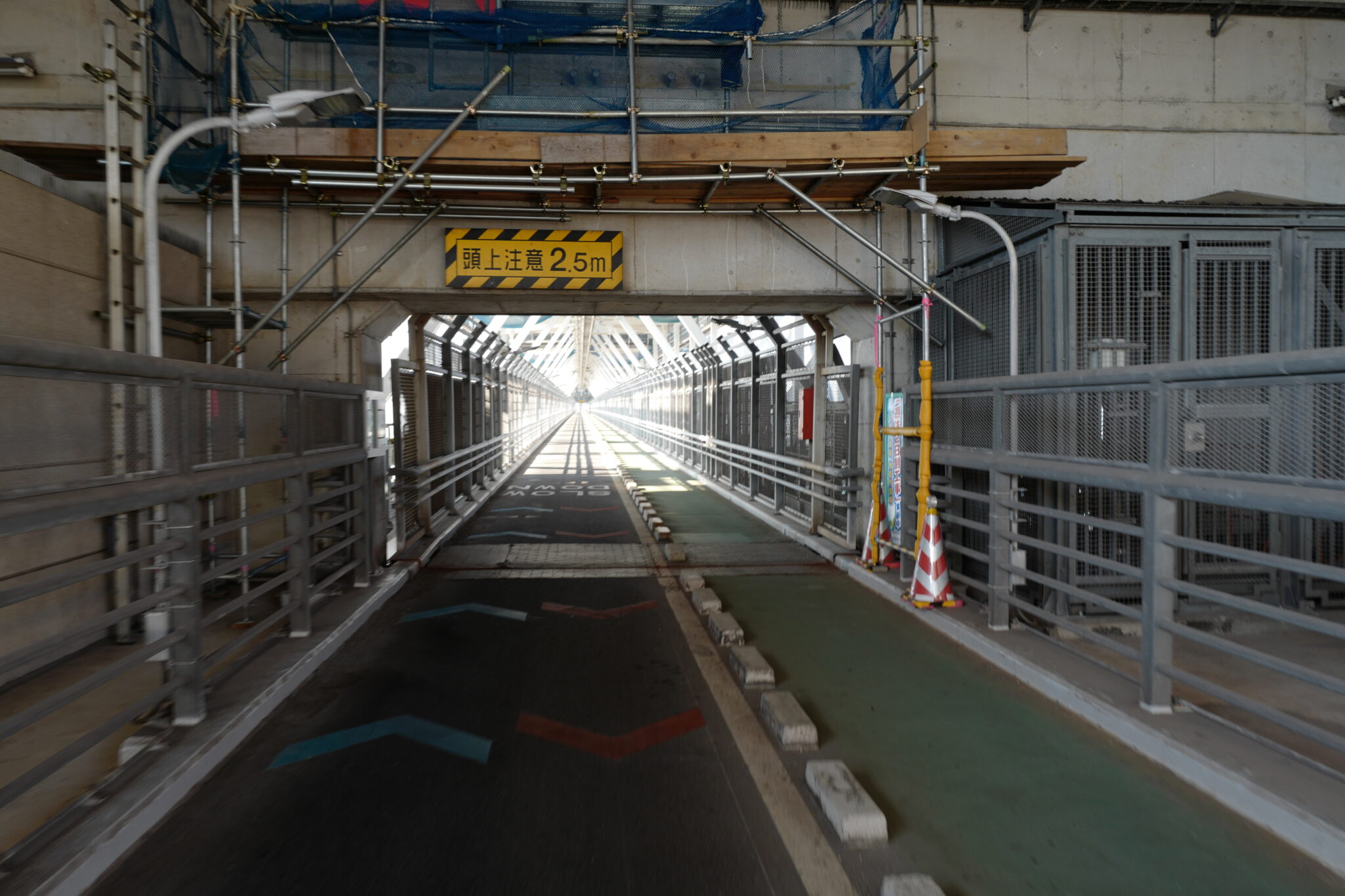
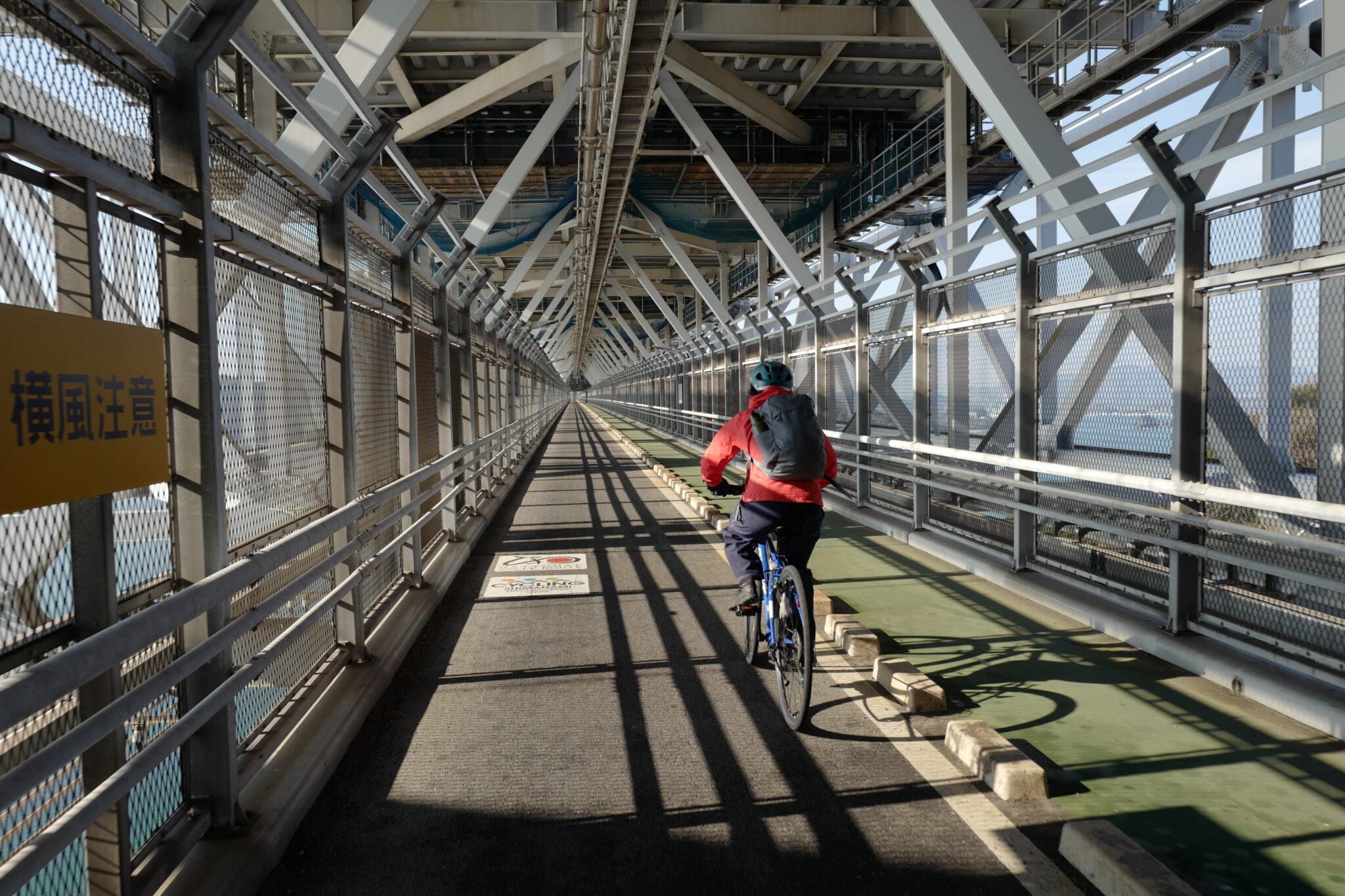
Rounding the Tachibana Coast, we got a look at the first enormous bridge we’d cross. The government has invested a huge amount in building dedicated cycle paths that climb up to the road level of each bridge; once up there, you are separated from the traffic, making it very safe.
Innoshima Island (因島)
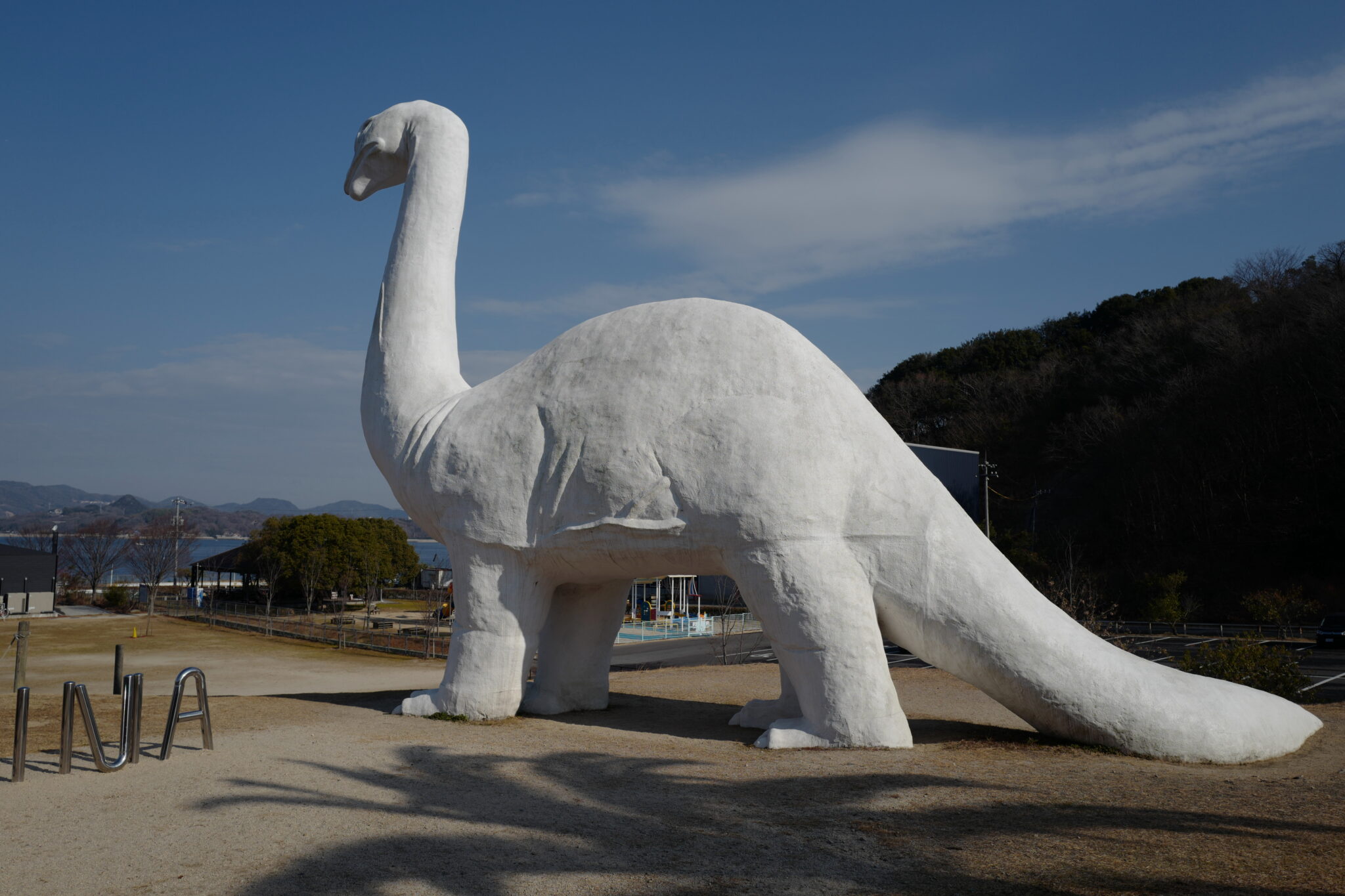
An exhilarating ride down from Innoshima Bridge drops you just above a park, where a huge sculpture of a diplodocus is looking out to sea; why, I have no idea!
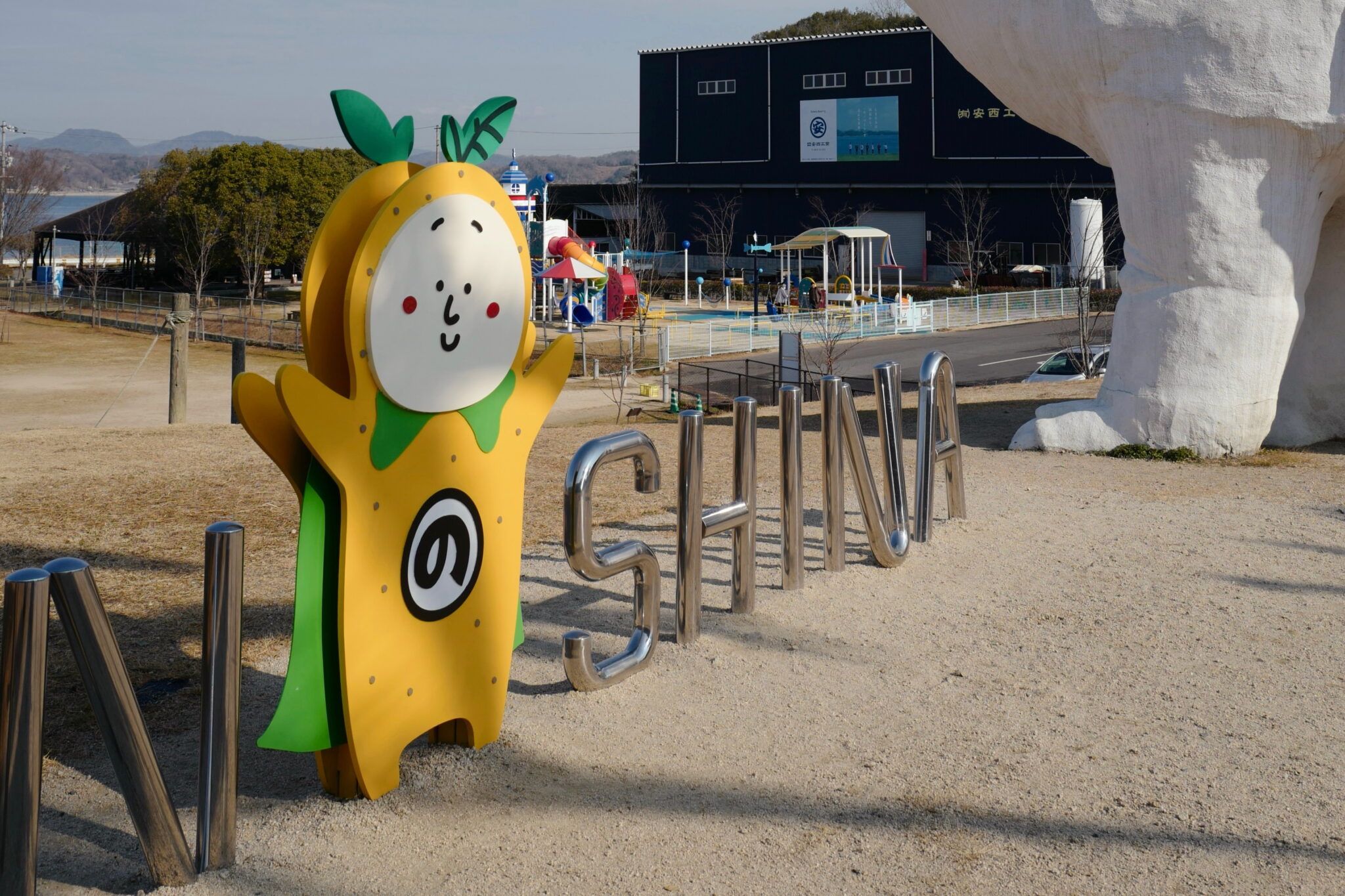
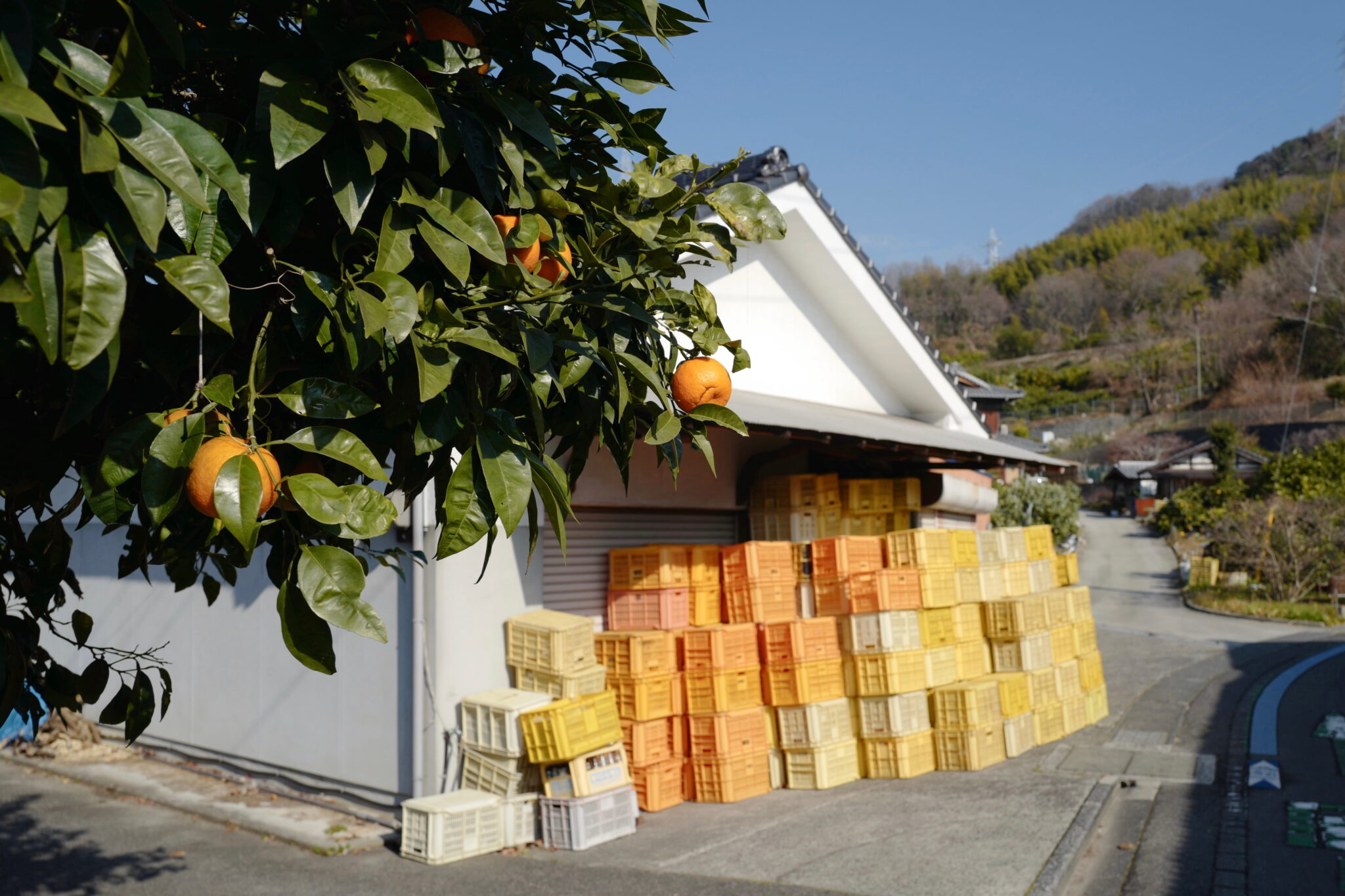
Hassa-kun, a little yellow chap with a leek sprouting from his head, is the local mascot styled after the Hassaku (八朔) citrus fruit cultivated here in the late 19th century. It is a hybrid between pomelo and mandarin, and you’ll spot it growing all over the island.
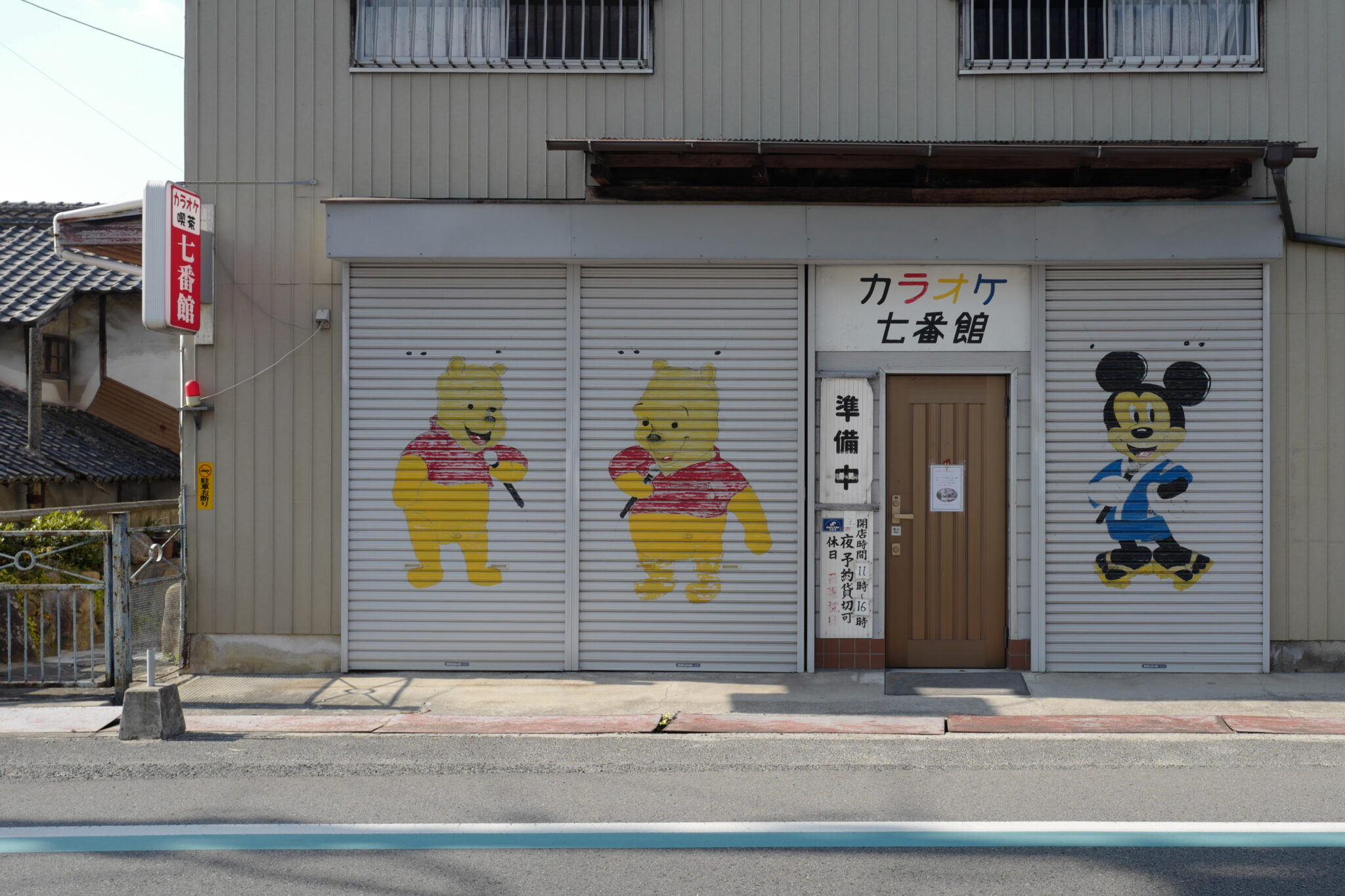
Innoshima boomed at the beginning of the 20th century as a shipbuilding center. The town around the port of Habu used to provide accommodation, food, and entertainment to the thousands of ship workers.
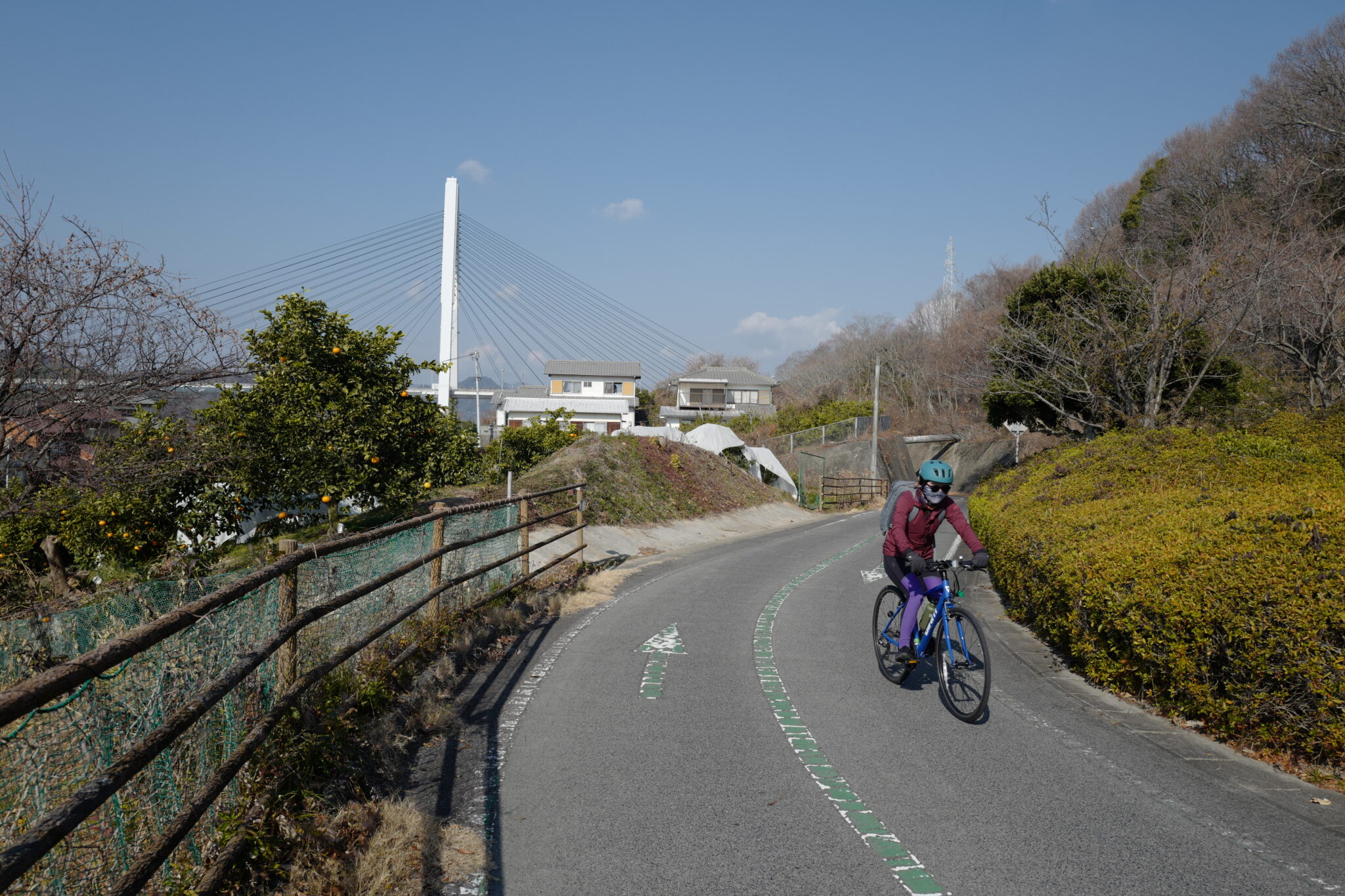
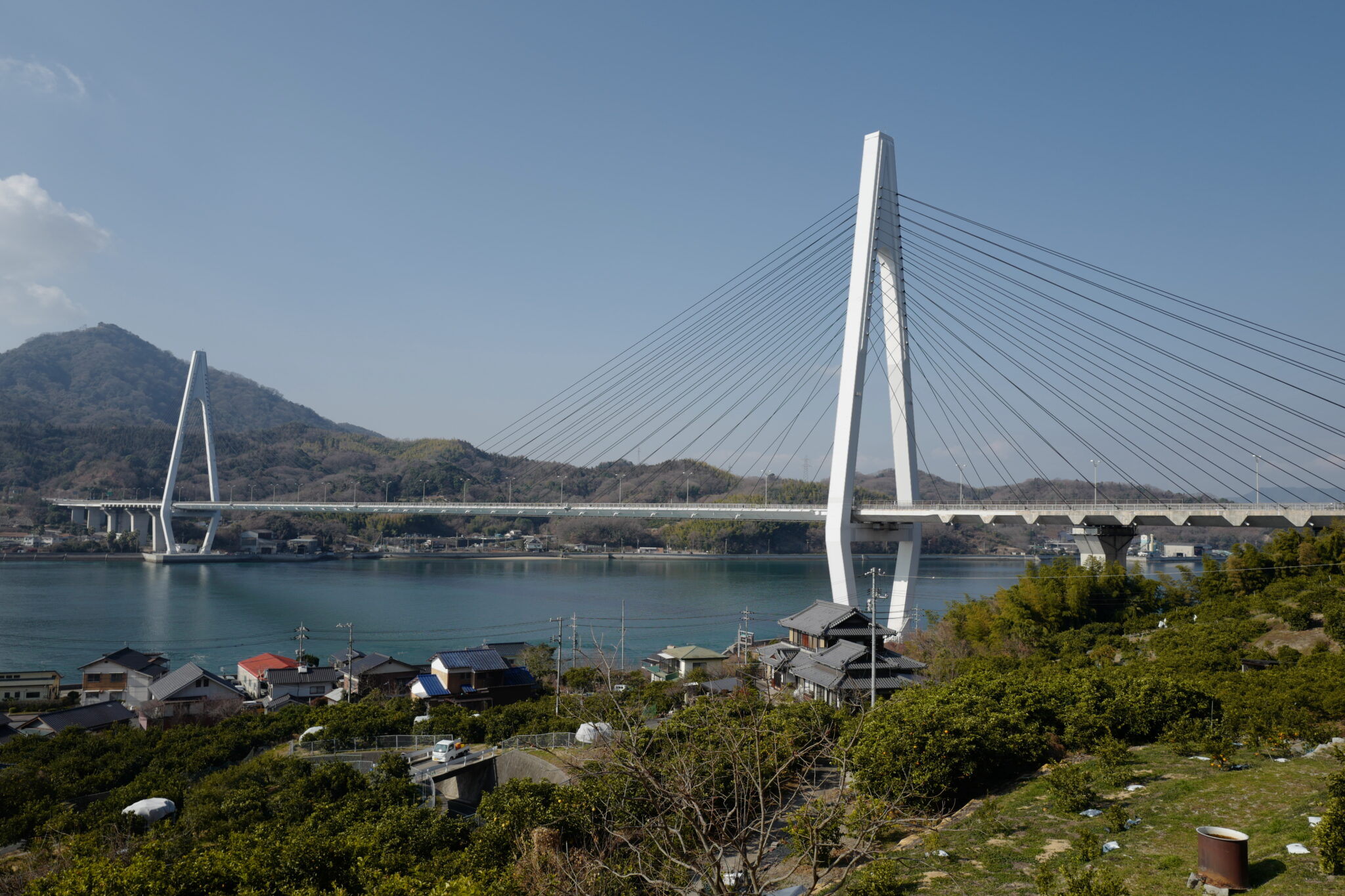
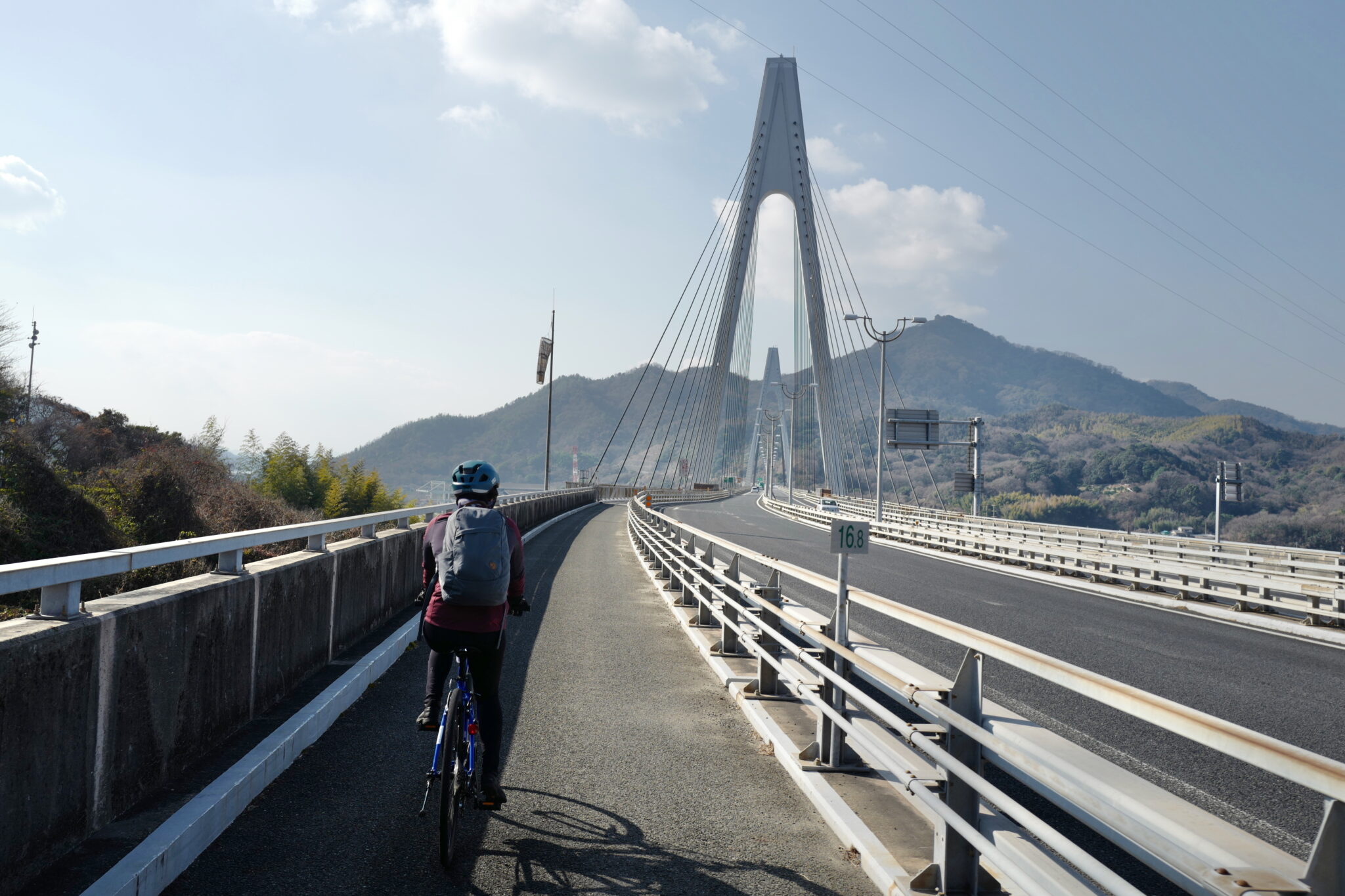
Before long, we crossed Ikuchi Bridge, the longest cable-stayed bridge in the world, when it was opened. Part of me marveled at the human ingenuity in linking all the islands with these impressive structures, yet it has obviously involved carving up large chunks of the natural landscape.
Ikuchijima Island (生口島)
Ikuchijima Island is home to the port town of Setoda (瀬戸田町), which is a popular stop along the route due to its abundance of restaurants and several sights worth seeing.
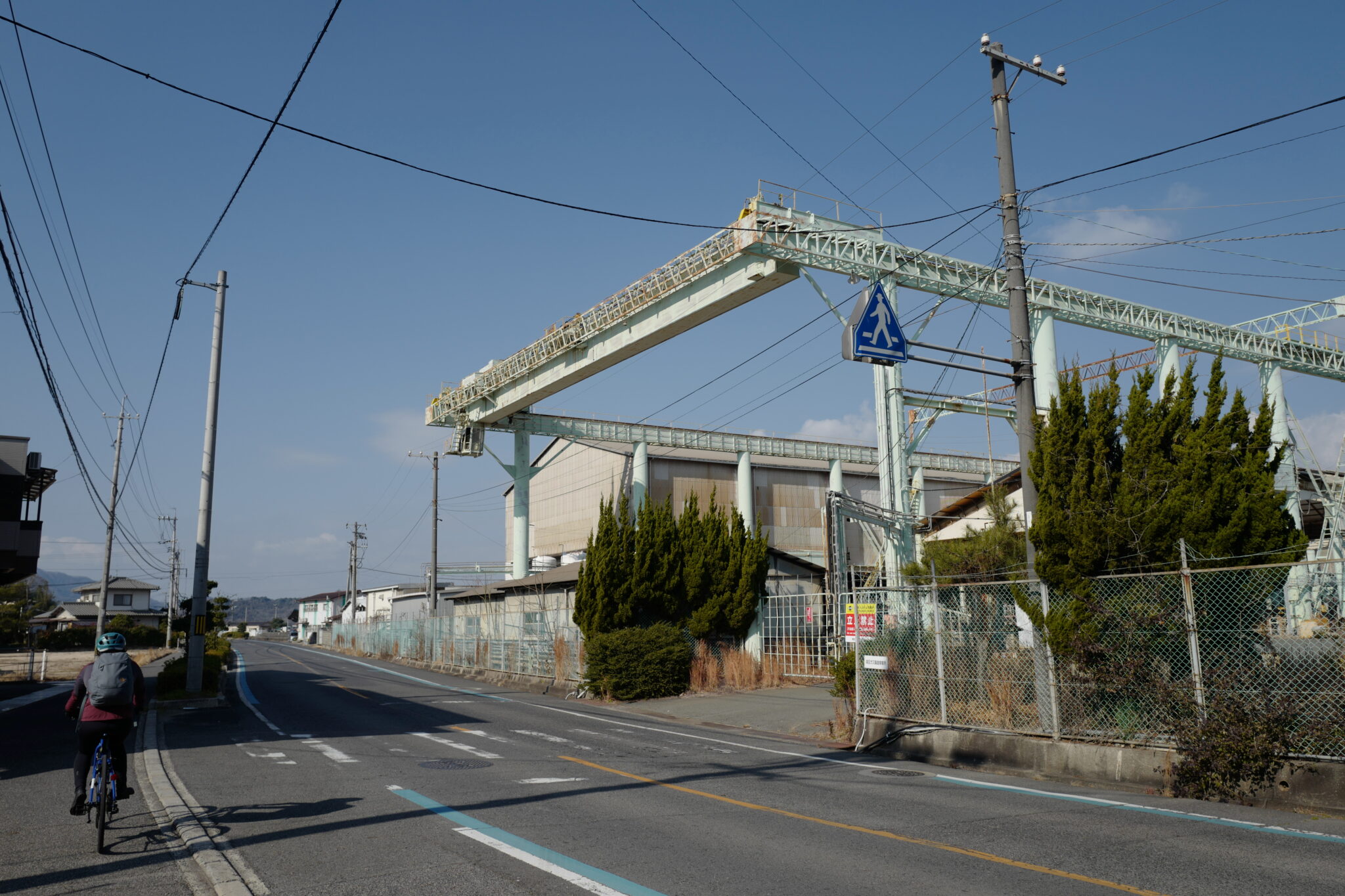
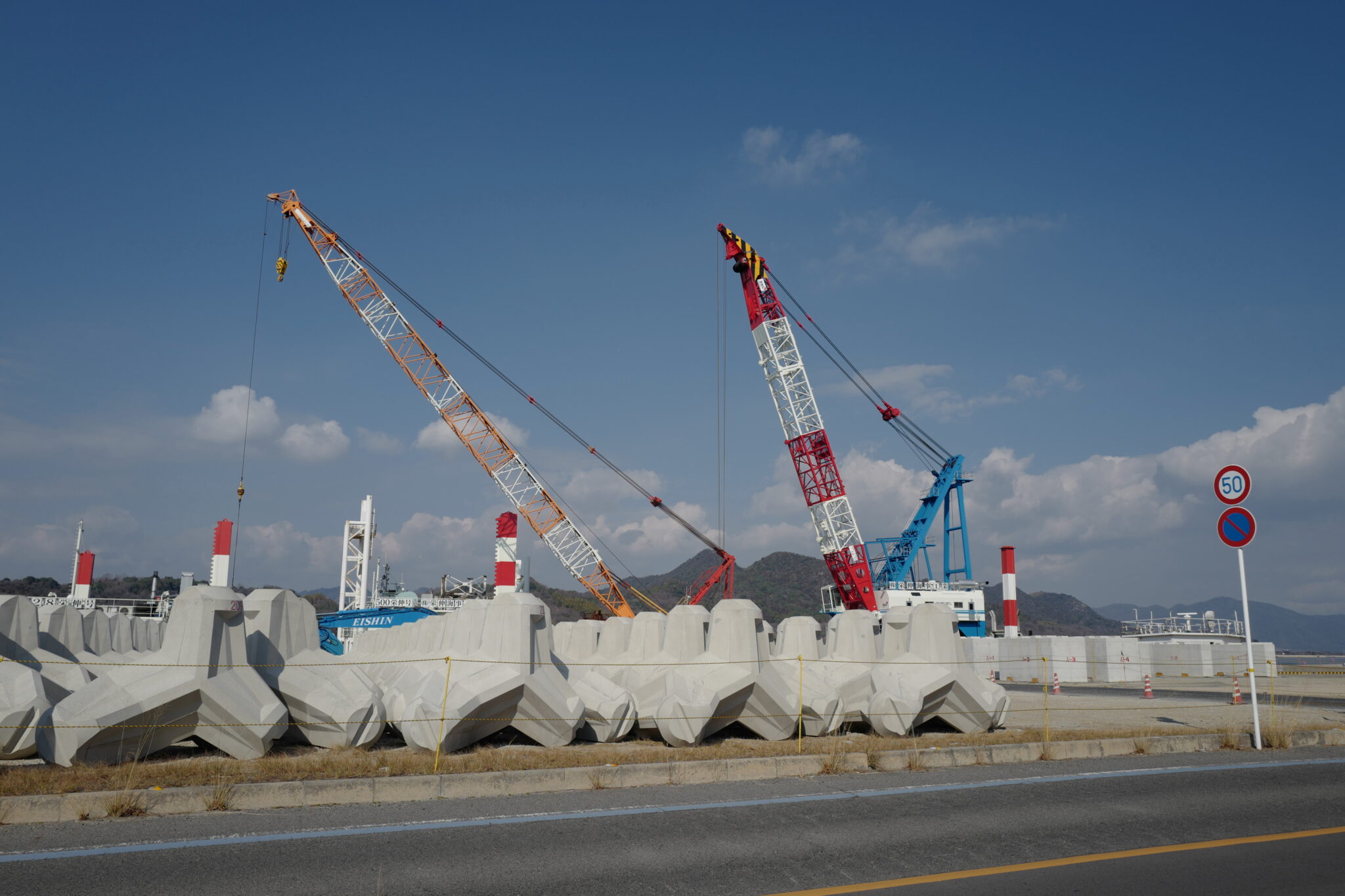
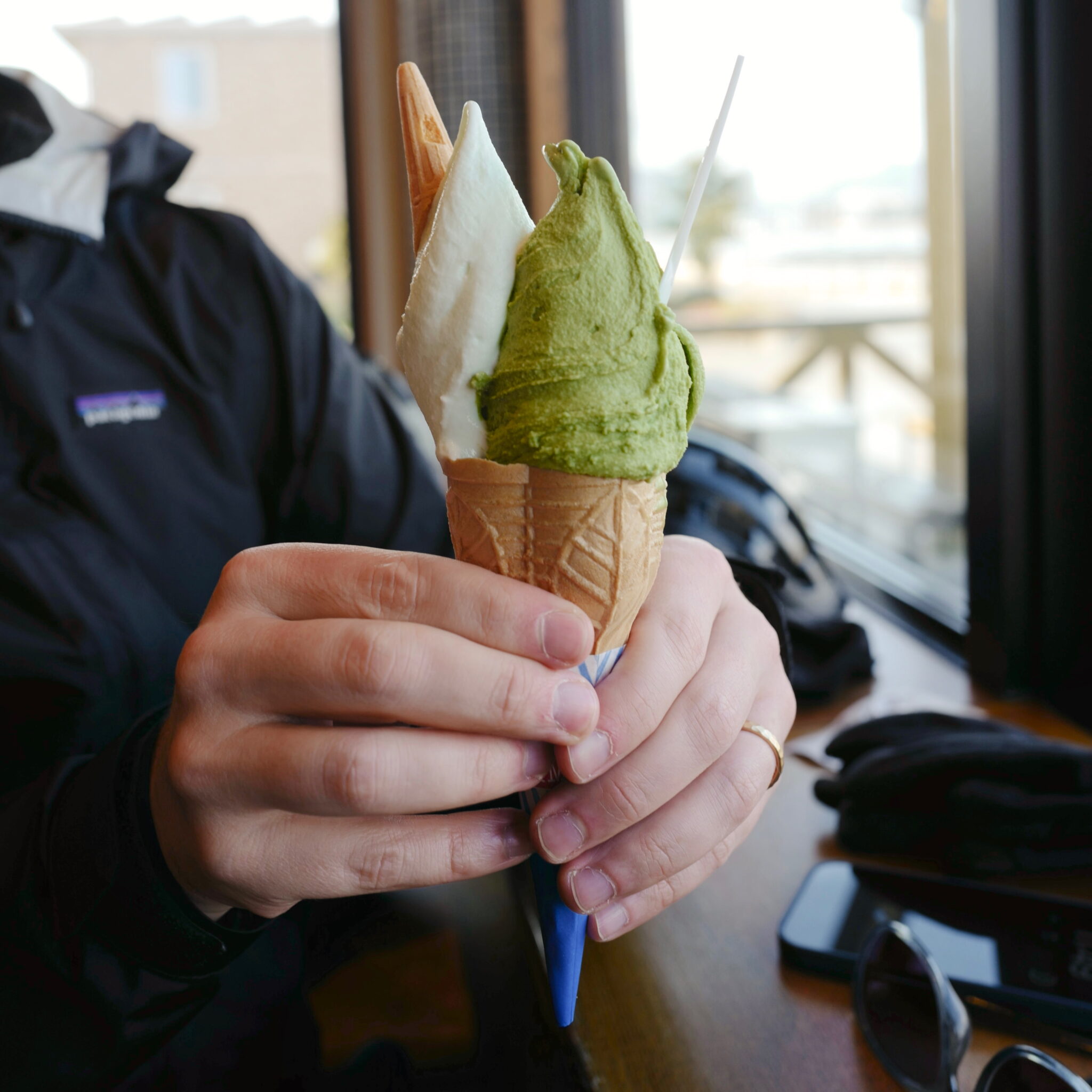
Our first stop was Dolce Ice Cream, well known for its sorbets made of local fruits and sea salt. It was almost midday, so it was a good spot to catch our breath and relax.
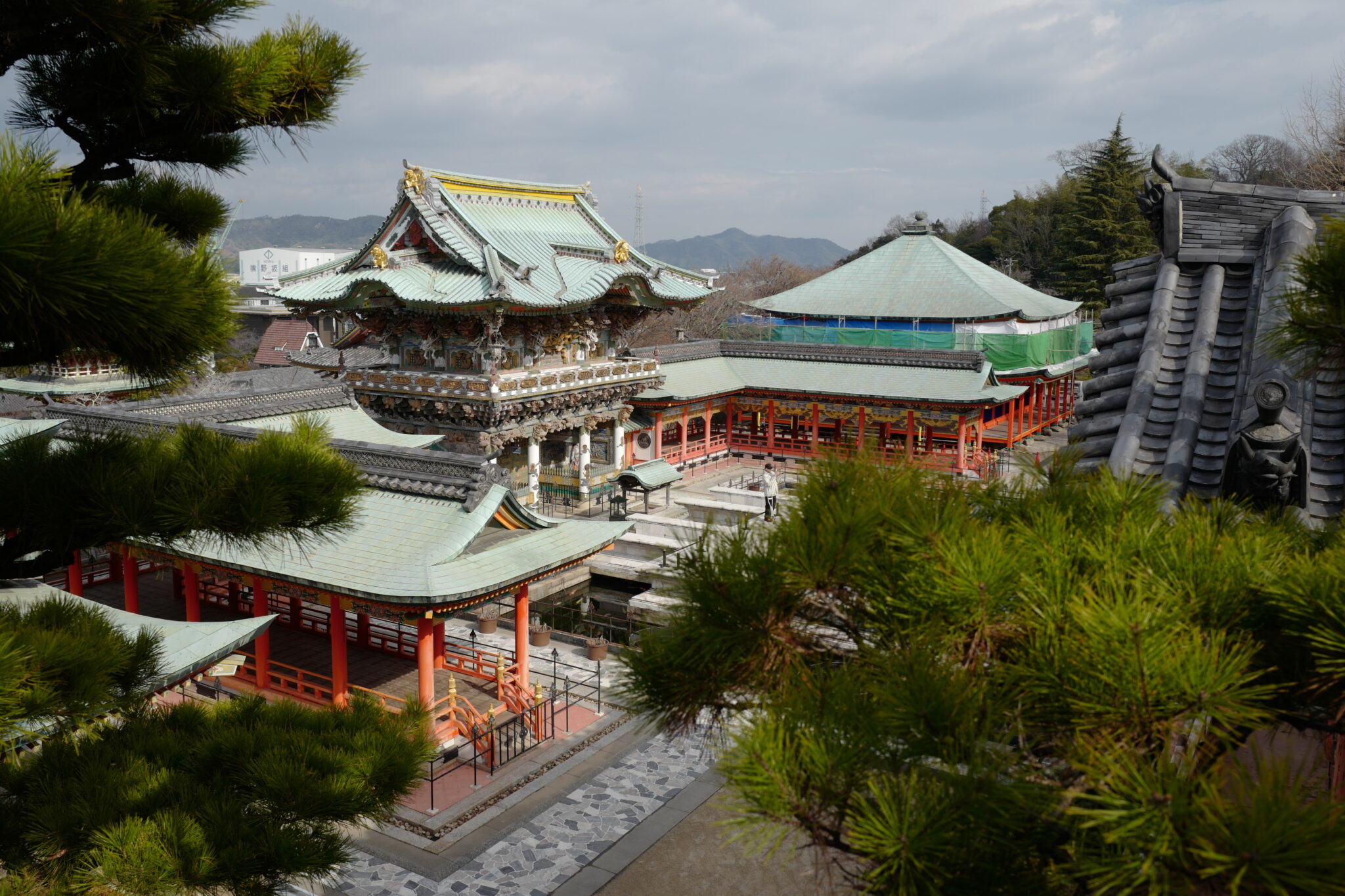
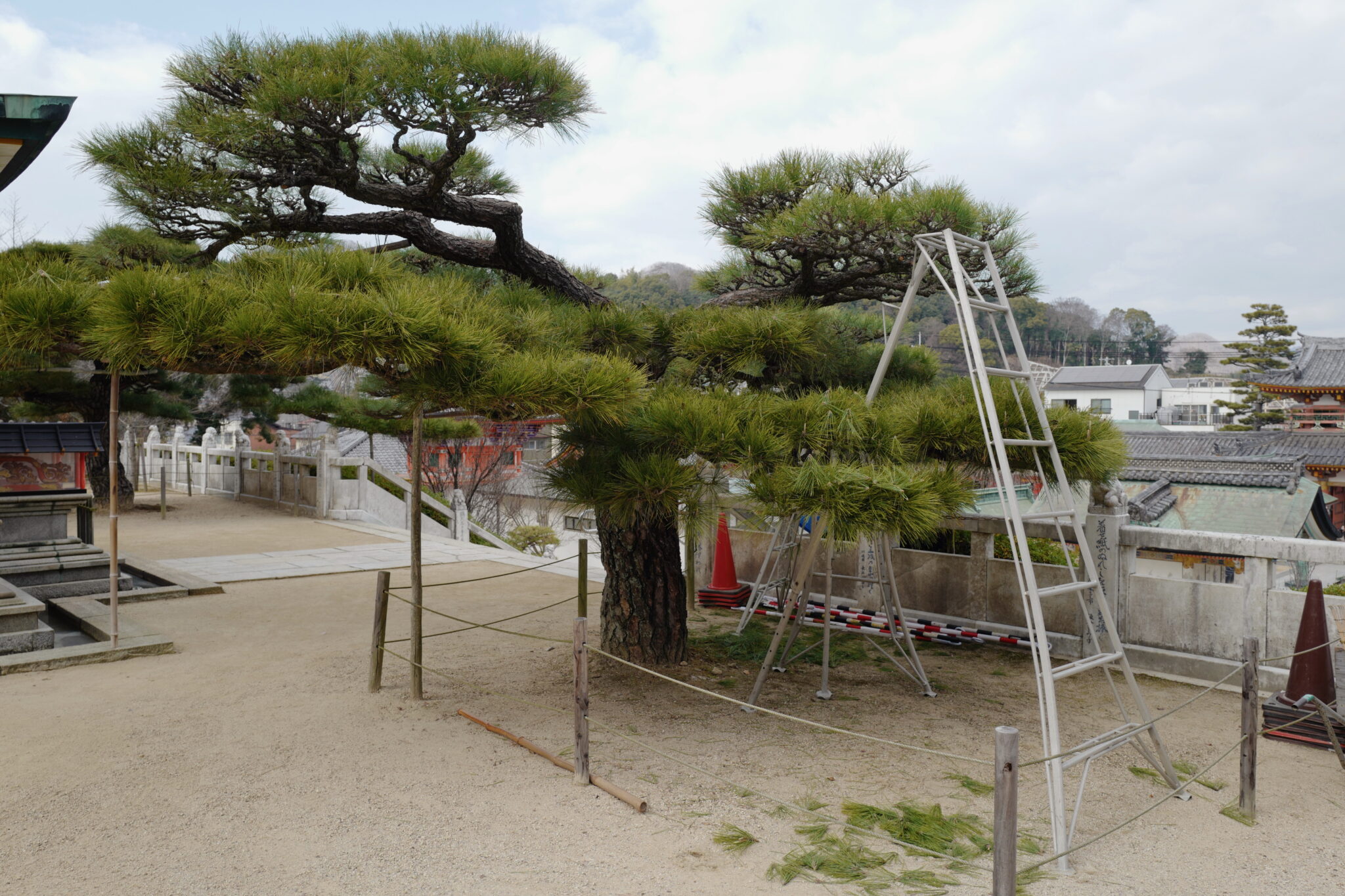
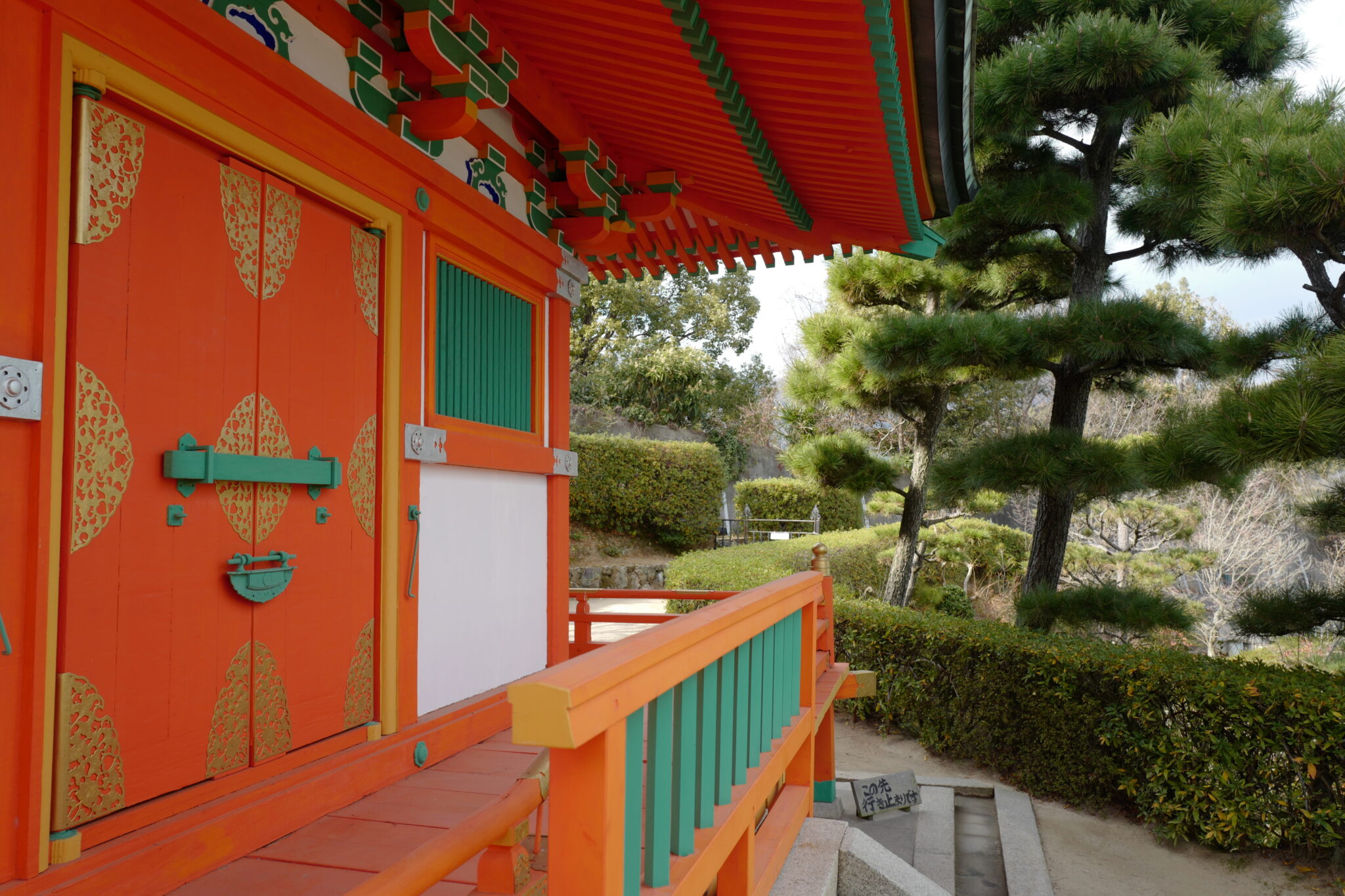
Founded by a rich industrialist Kōzō Kanamoto in 1936 in honour of his deceased mother, many of the Kōsan-ji Temple structures are modelled upon the country’s most famous historic temples and shrines.
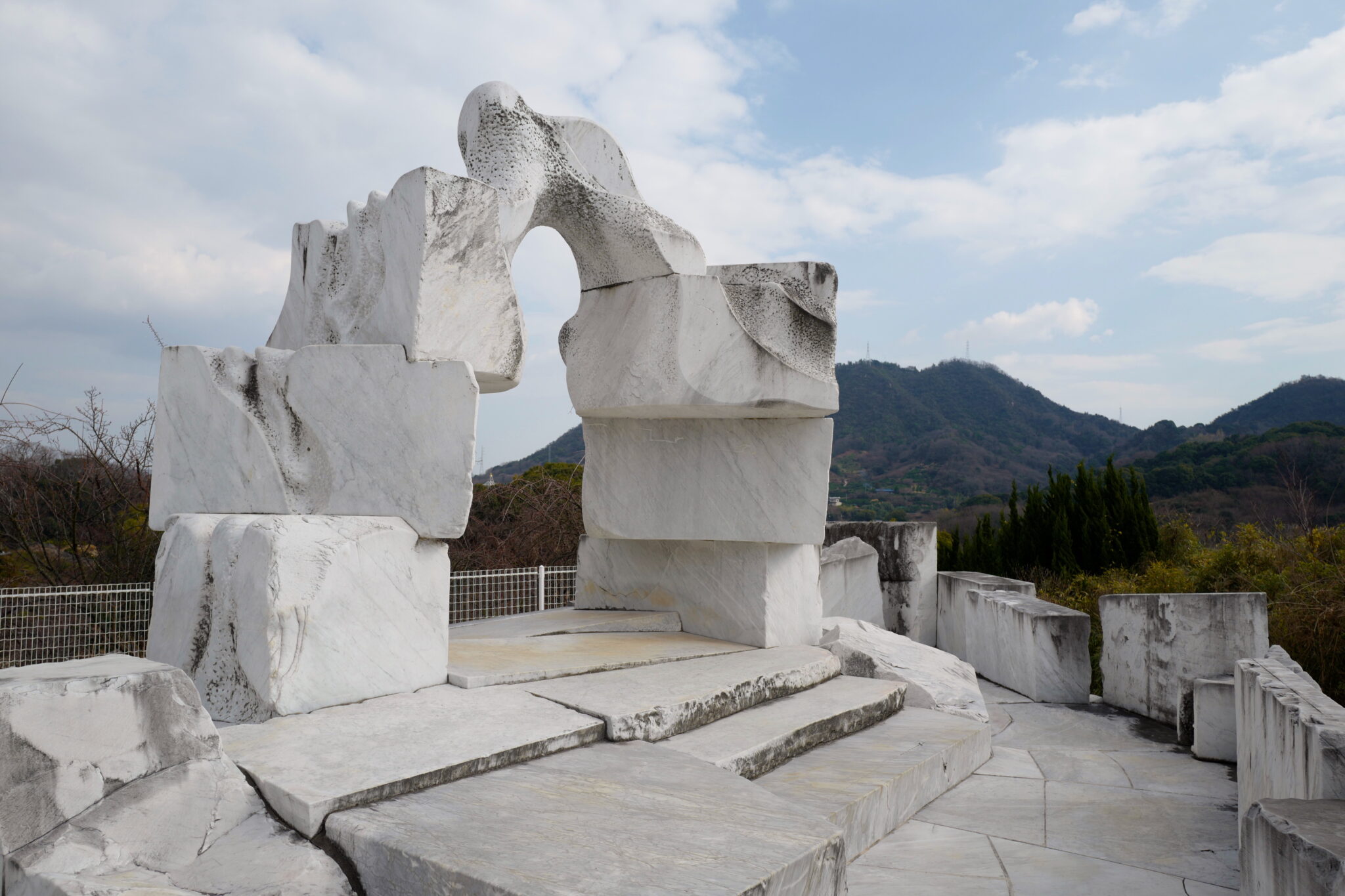
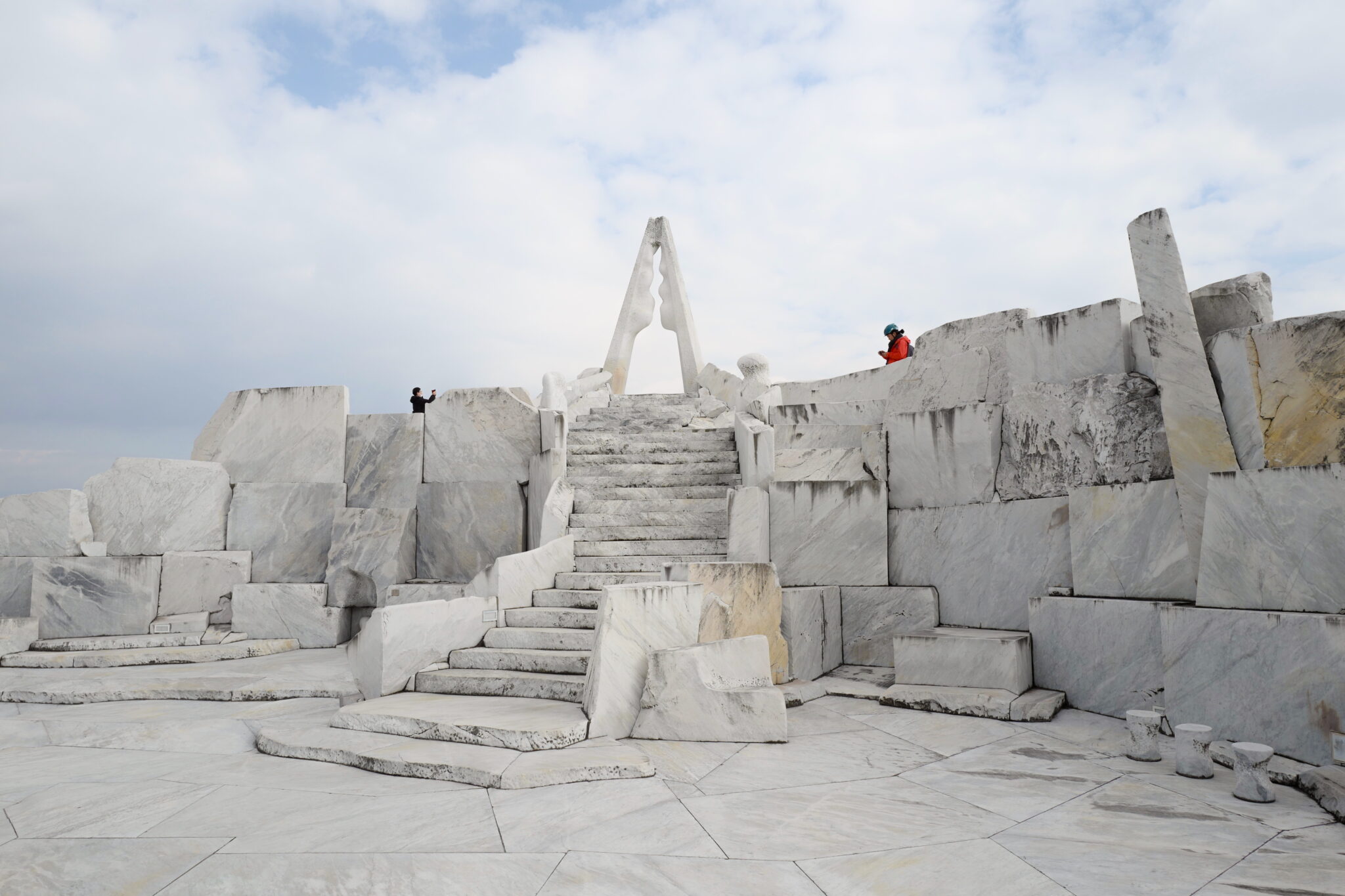
Above the temple is a monument landscaped with 5,000 square meters of Carrara marble, weighing some 3,000 tons. The whole thing felt a bit tacky, like a Buddhist Disneyland.
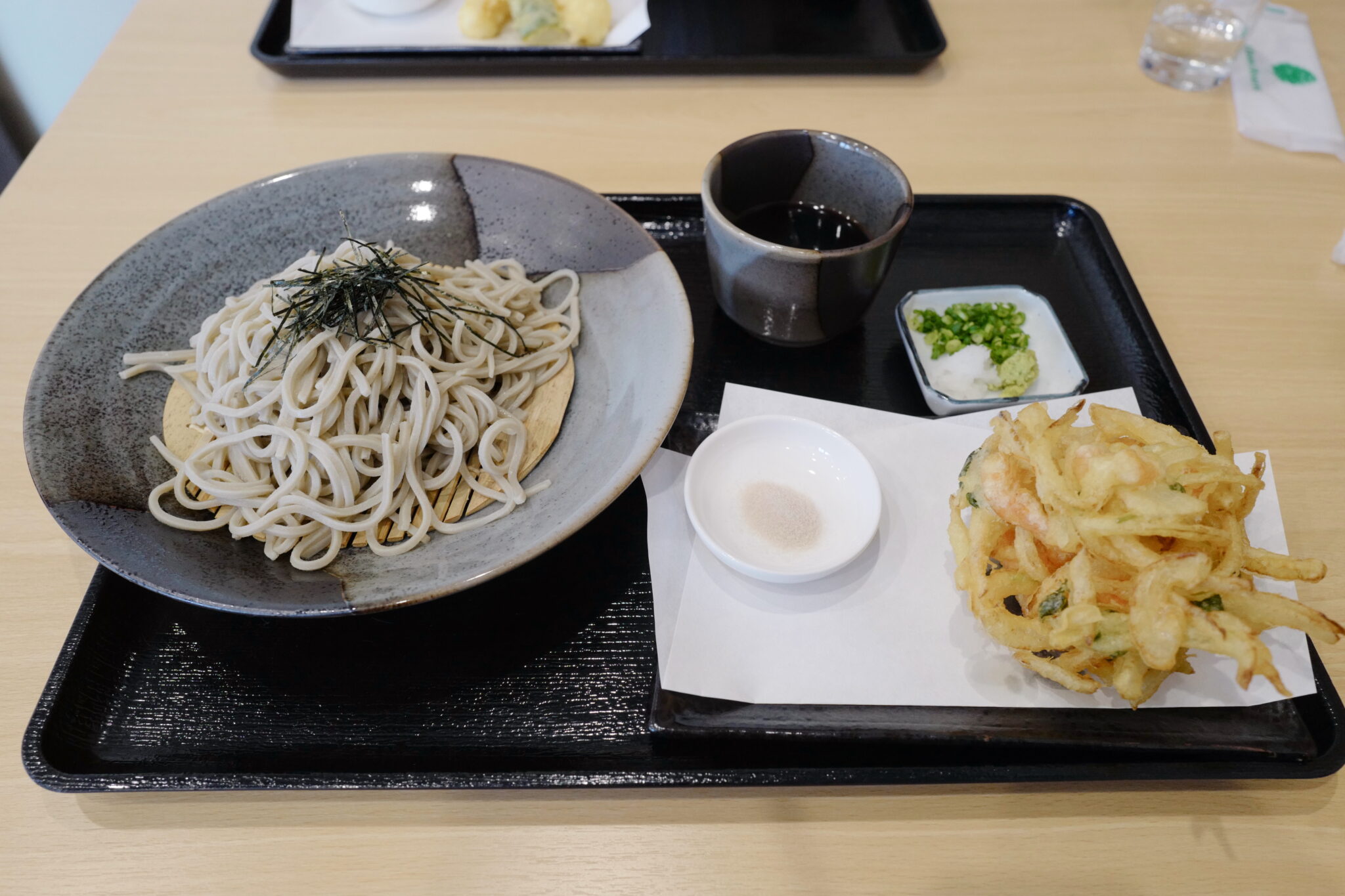
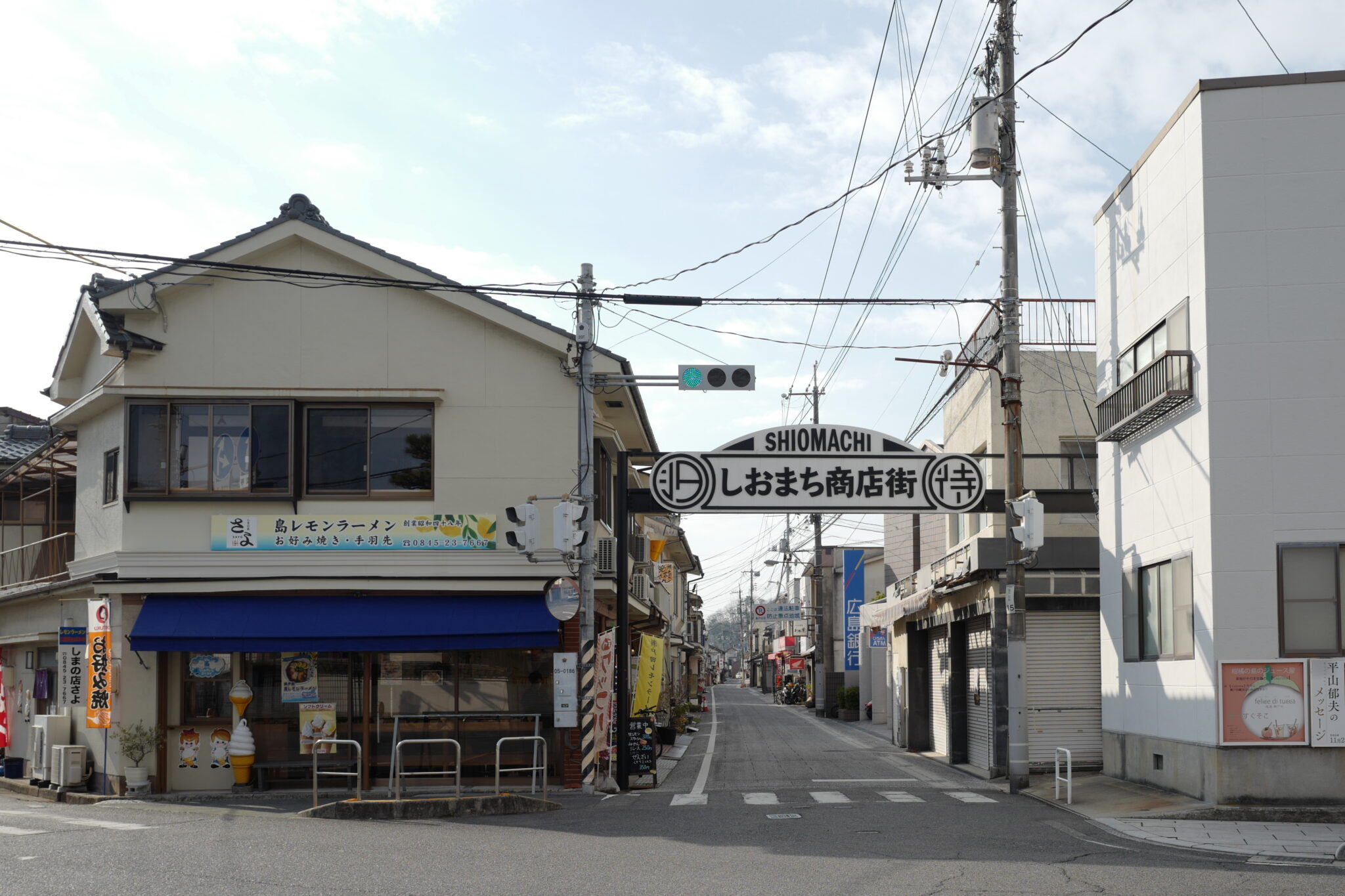
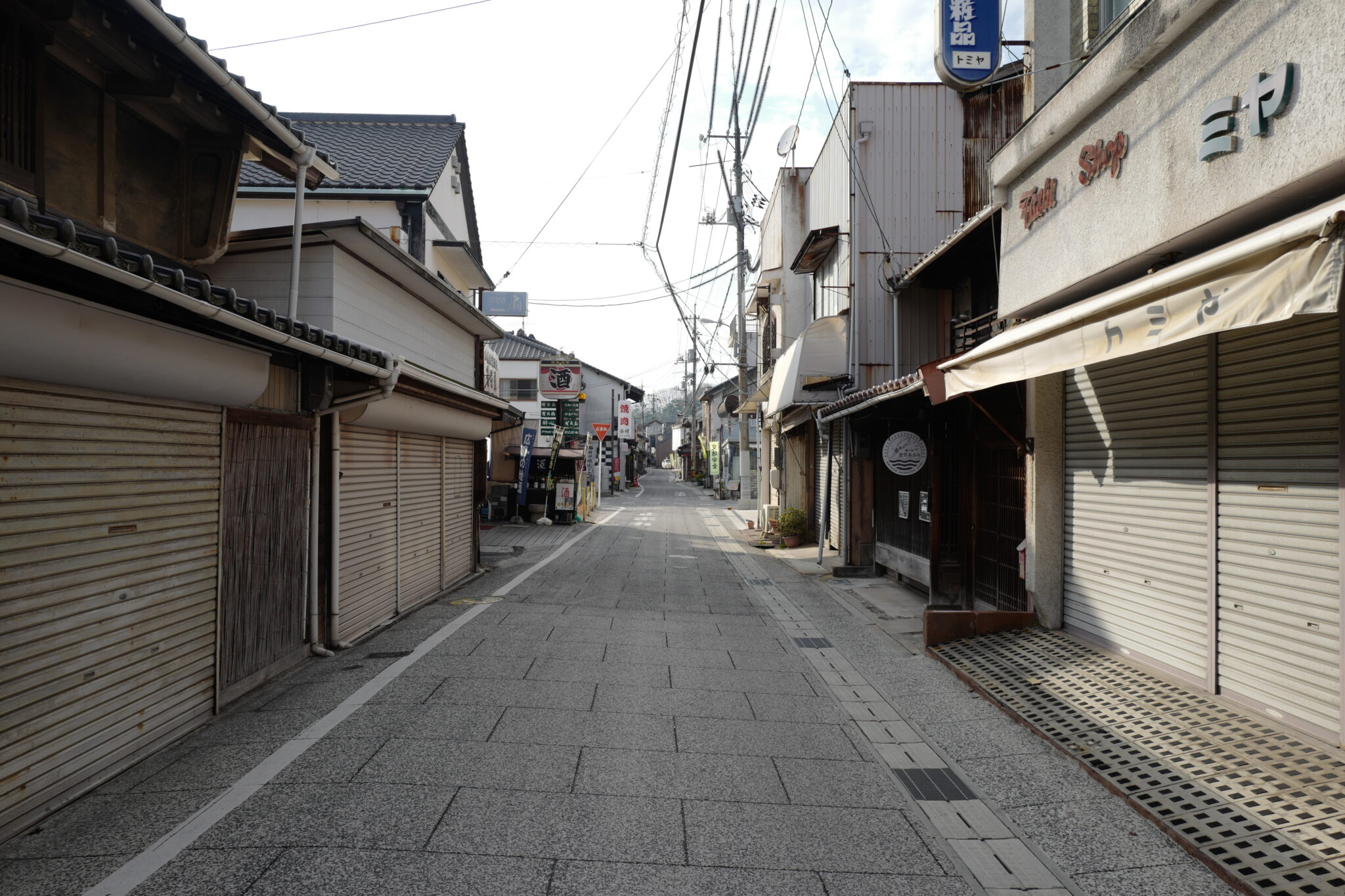
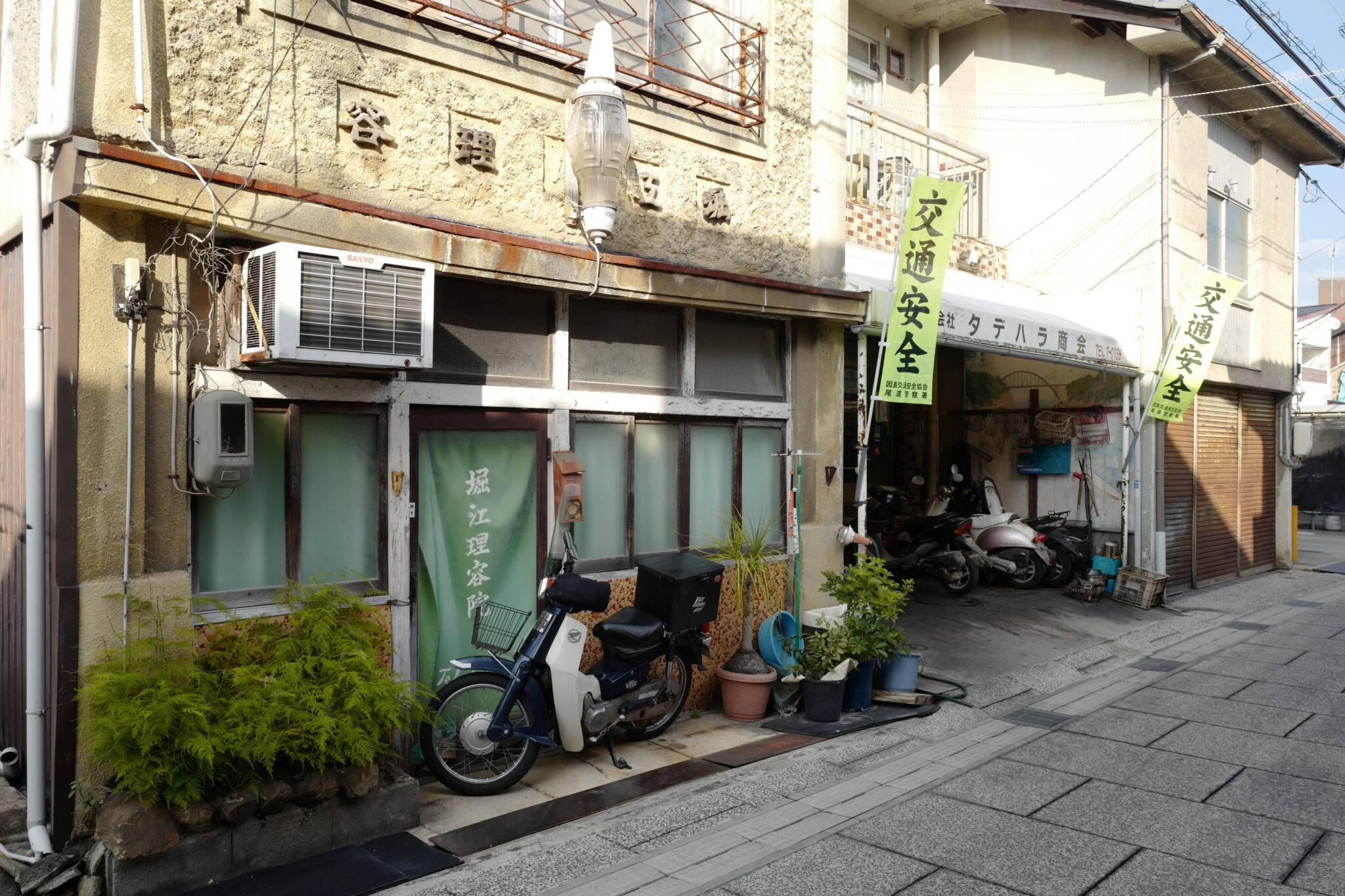
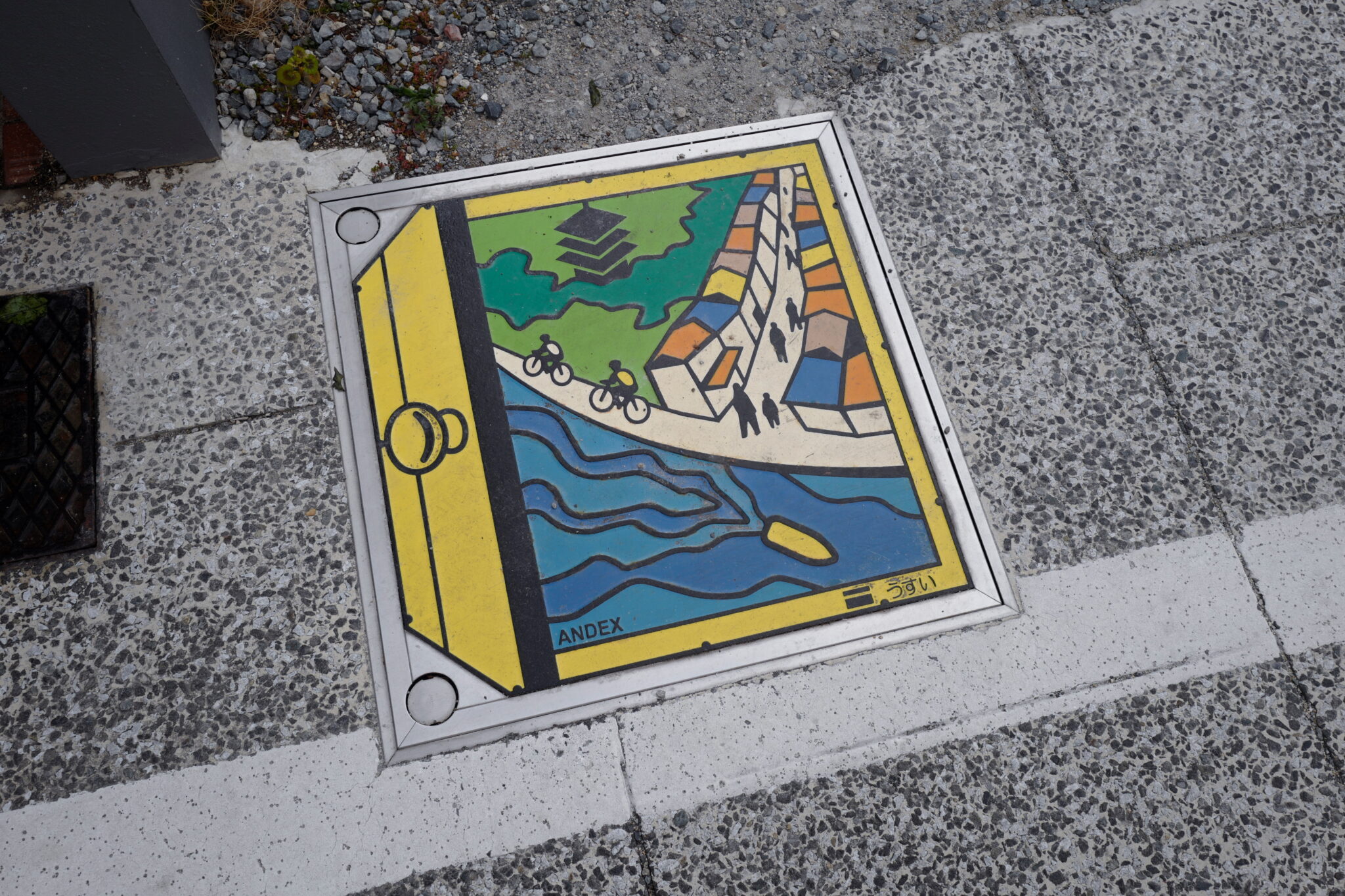
After a fantastic lunch, we cycled along Shiomachi shopping street, which stretches 600 meters from Kosan-ji Temple to Setoda Port. Sadly, most of the businesses here have long shuttered, emblematic of much of rural Japan, but you can still feel echoes of the past in what must have once been a vibrant town.
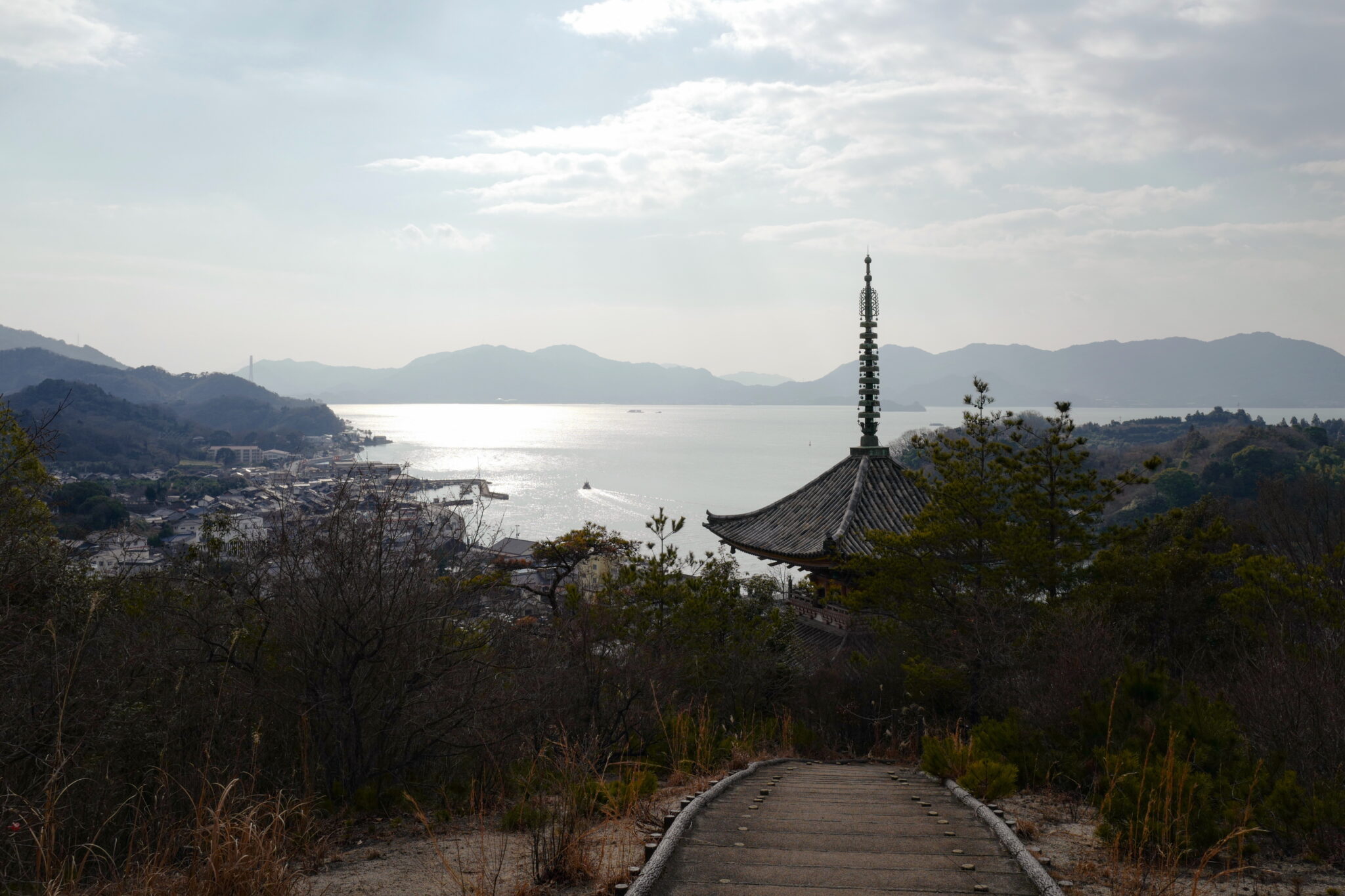
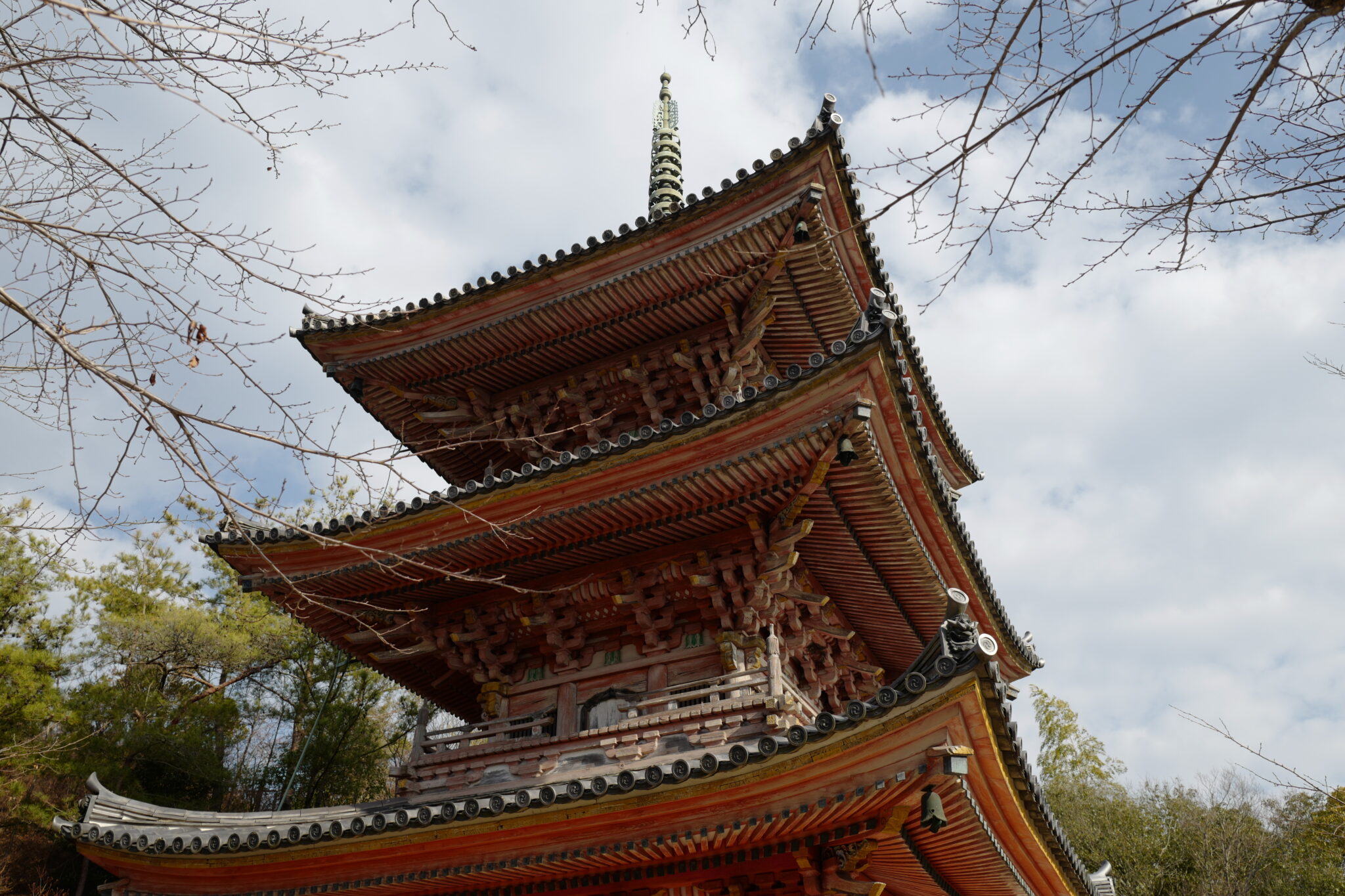
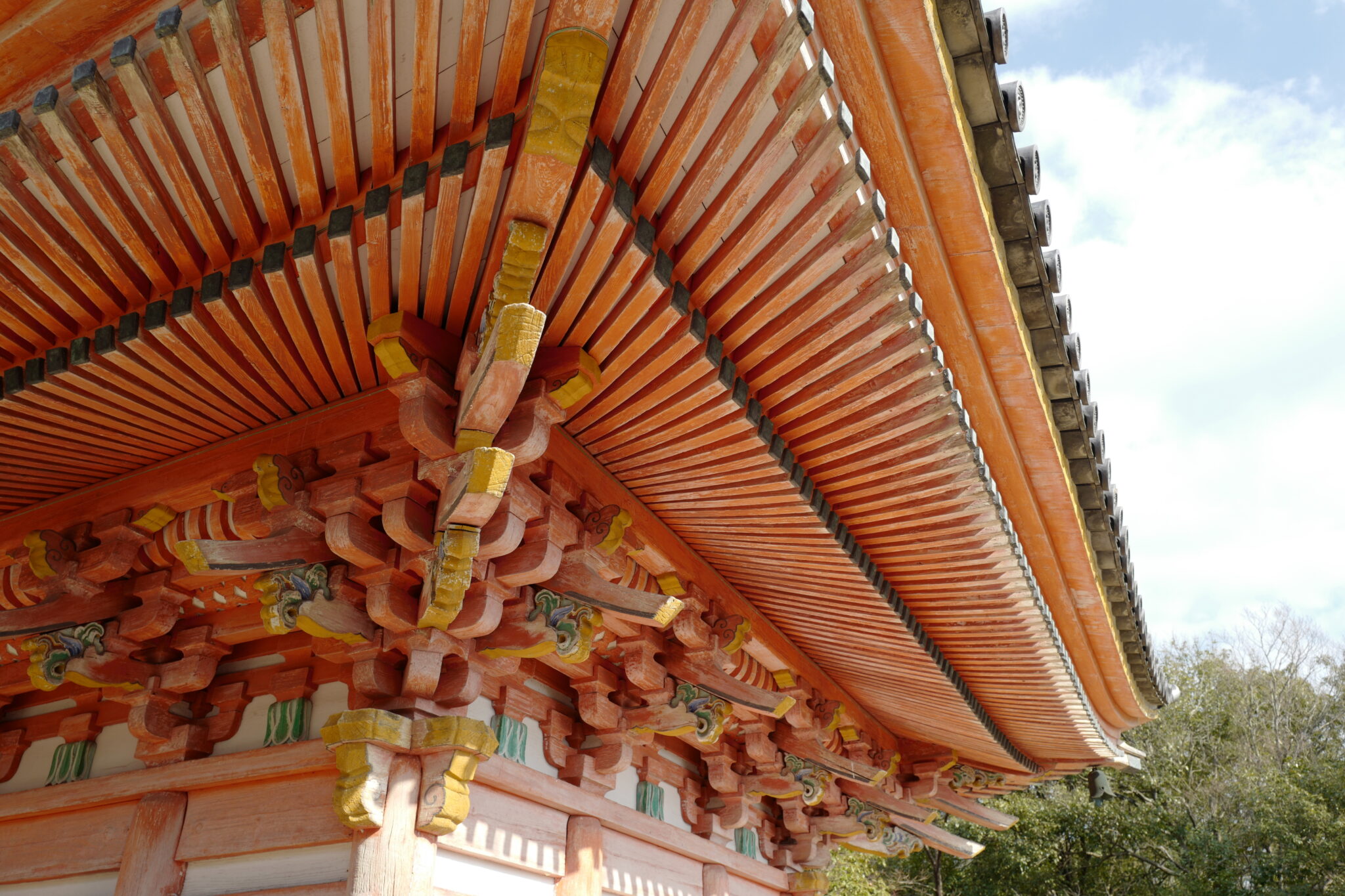
A gentle walk up the hill behind the shopping street leads to Kojoji Temple, a three-story pagoda built in 1432 overlooking the port and designated a national treasure. This was far more interesting than the previous temple complex.
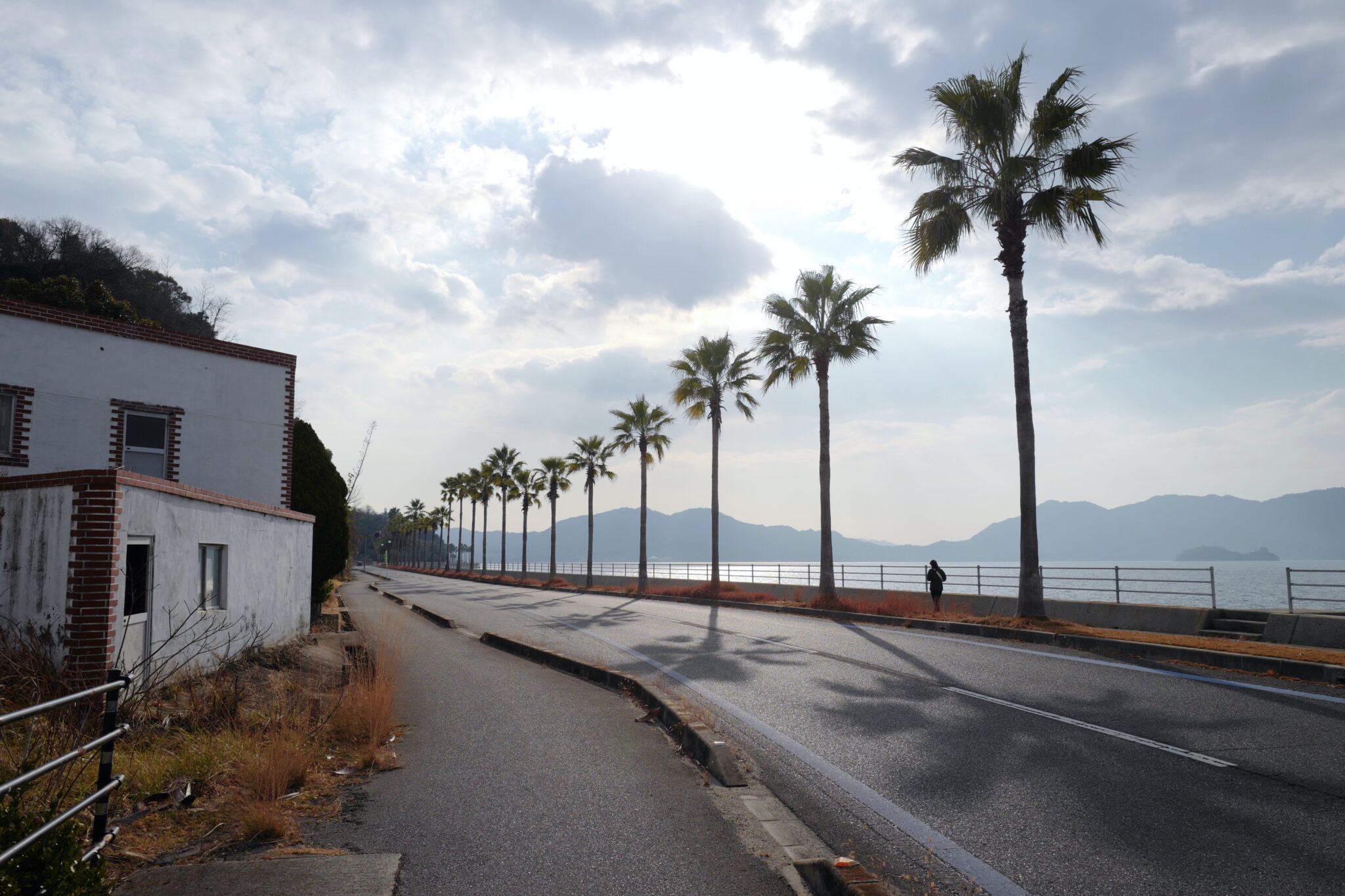
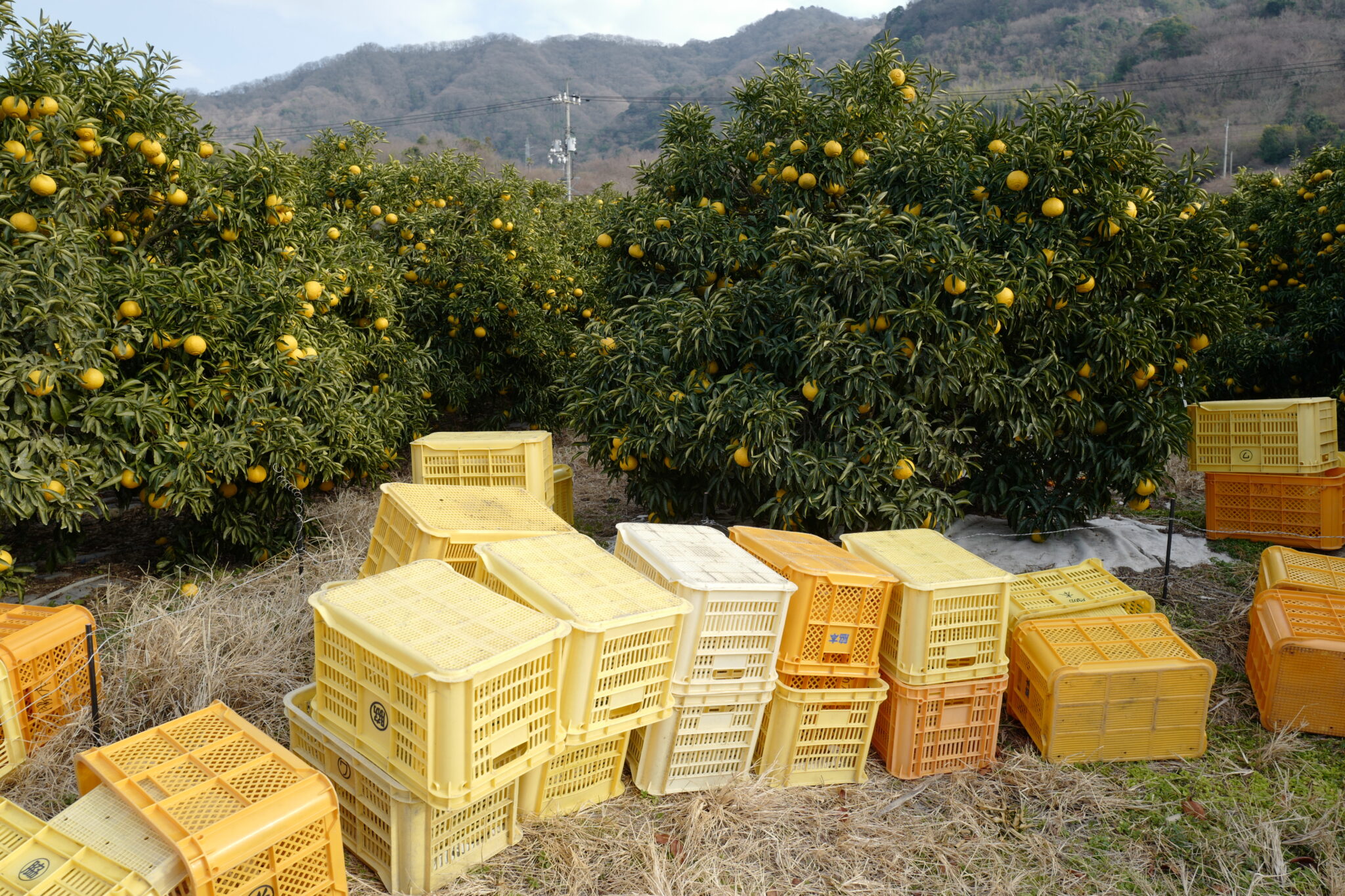
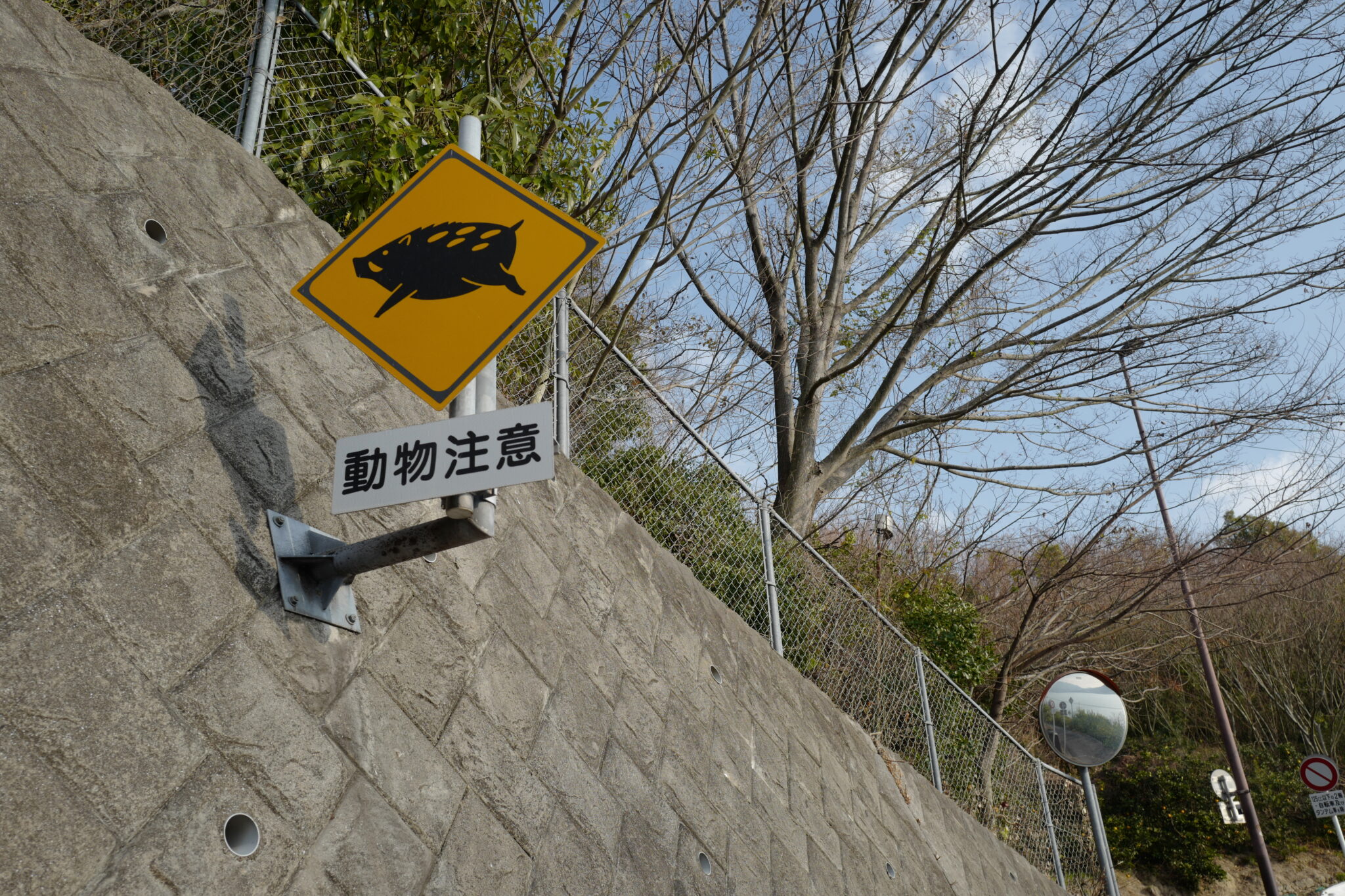

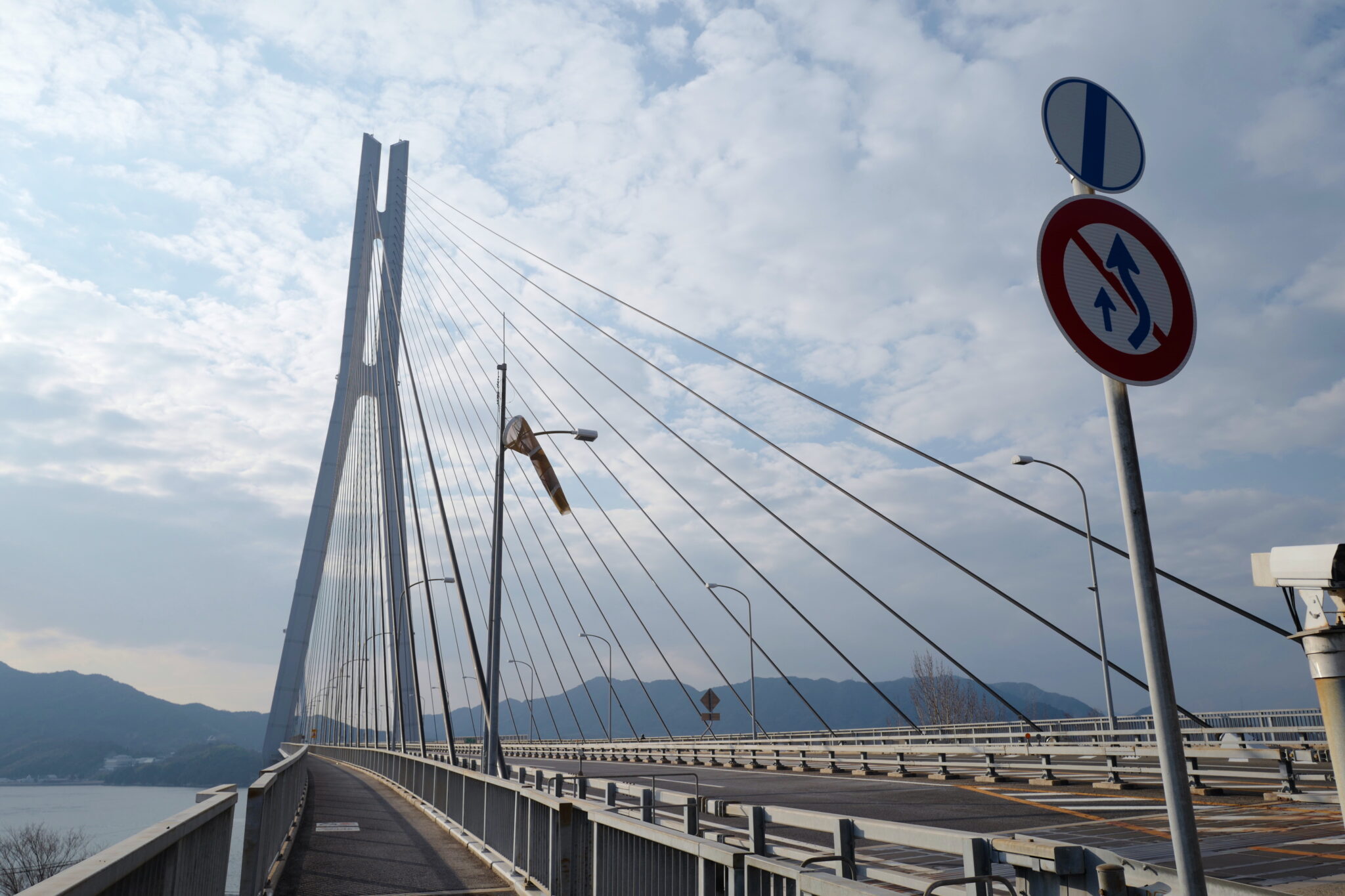
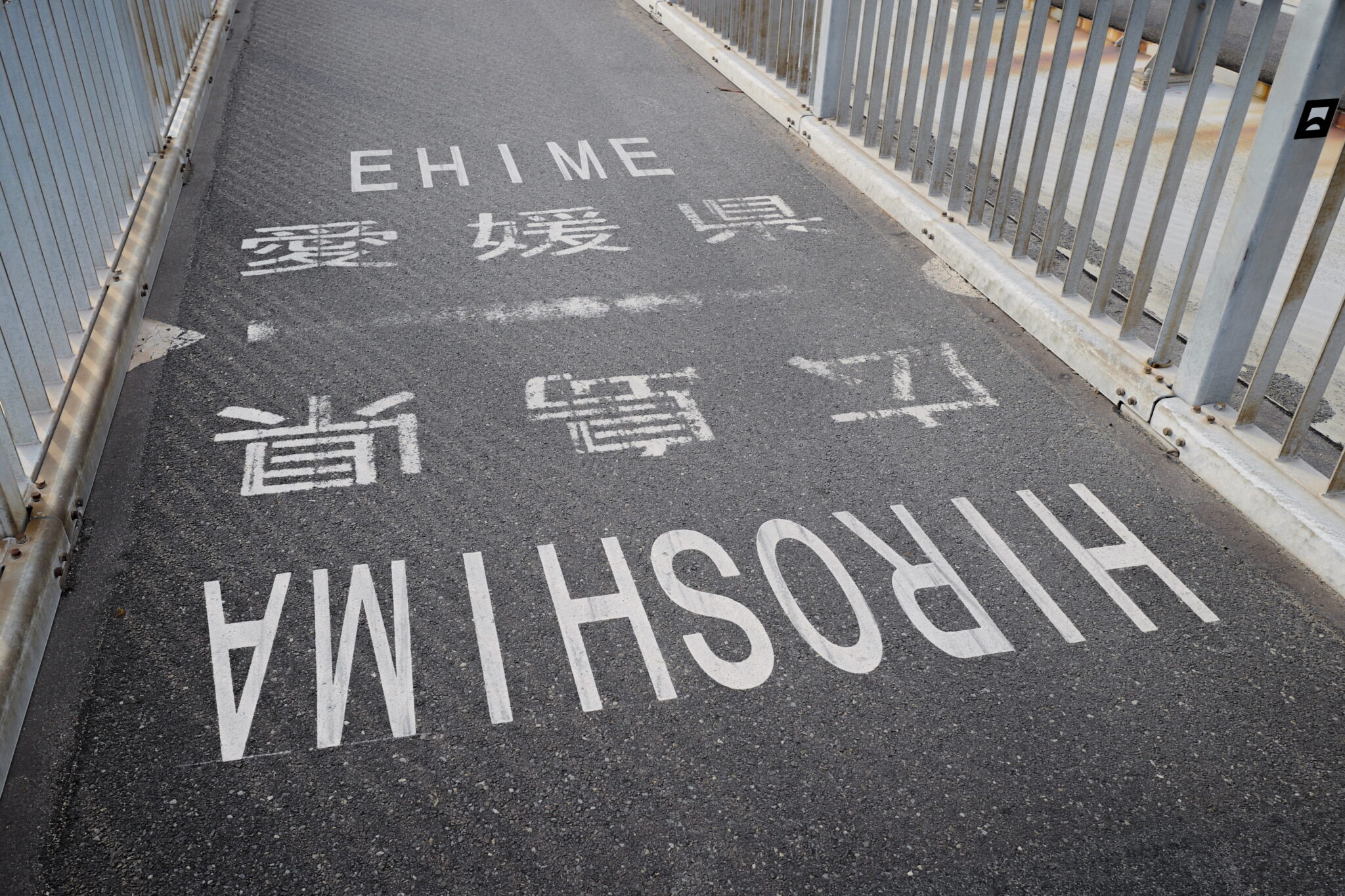
Ōmishima Island (大三島)
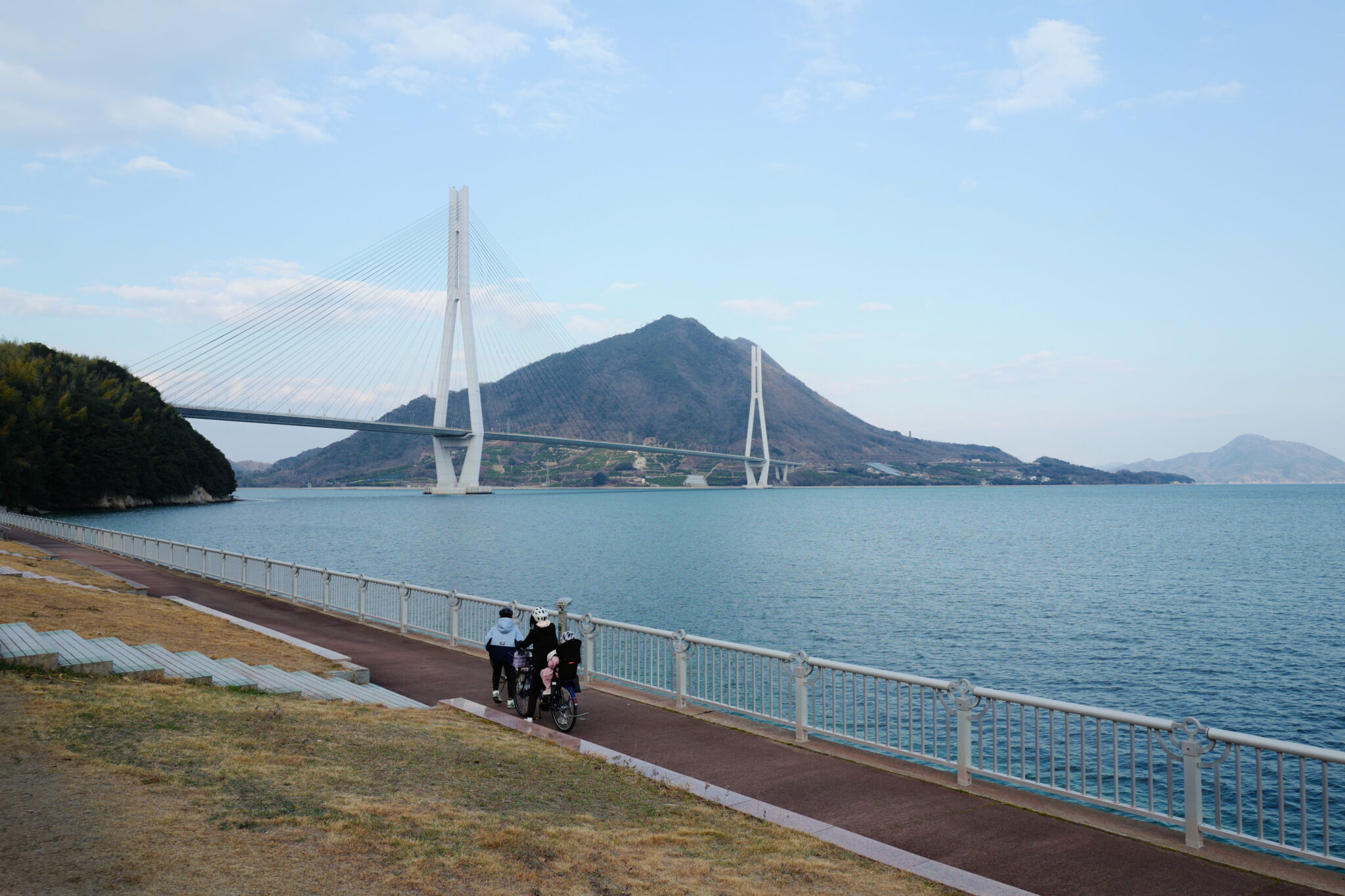
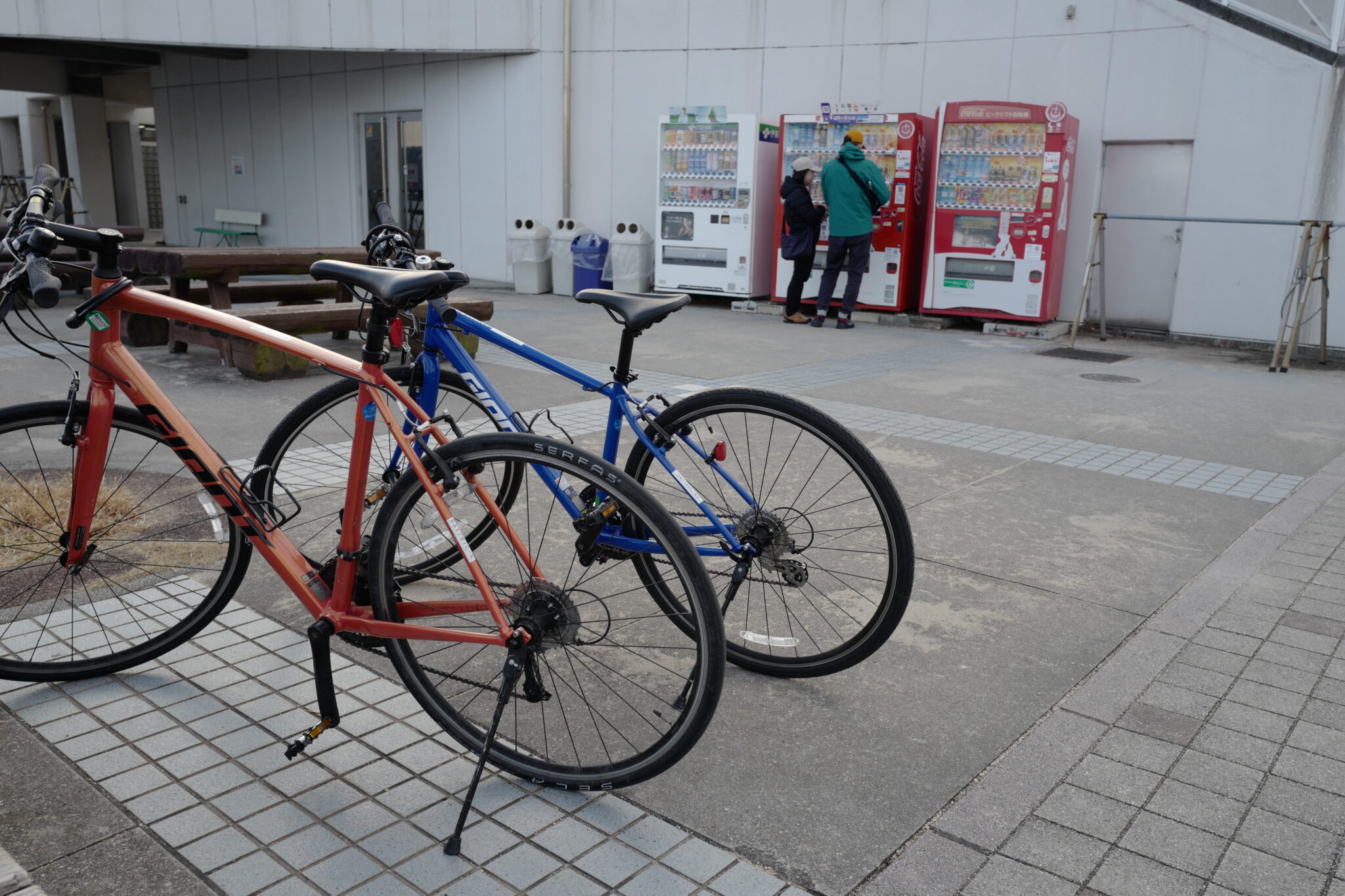
After crossing into Ehime Prefecture, we stopped at a michi-no-eki roadside park to rest our legs and drink some tea while looking back at Tatar Bridge. It was almost 4 pm, and most of the facilities were closing for the day.
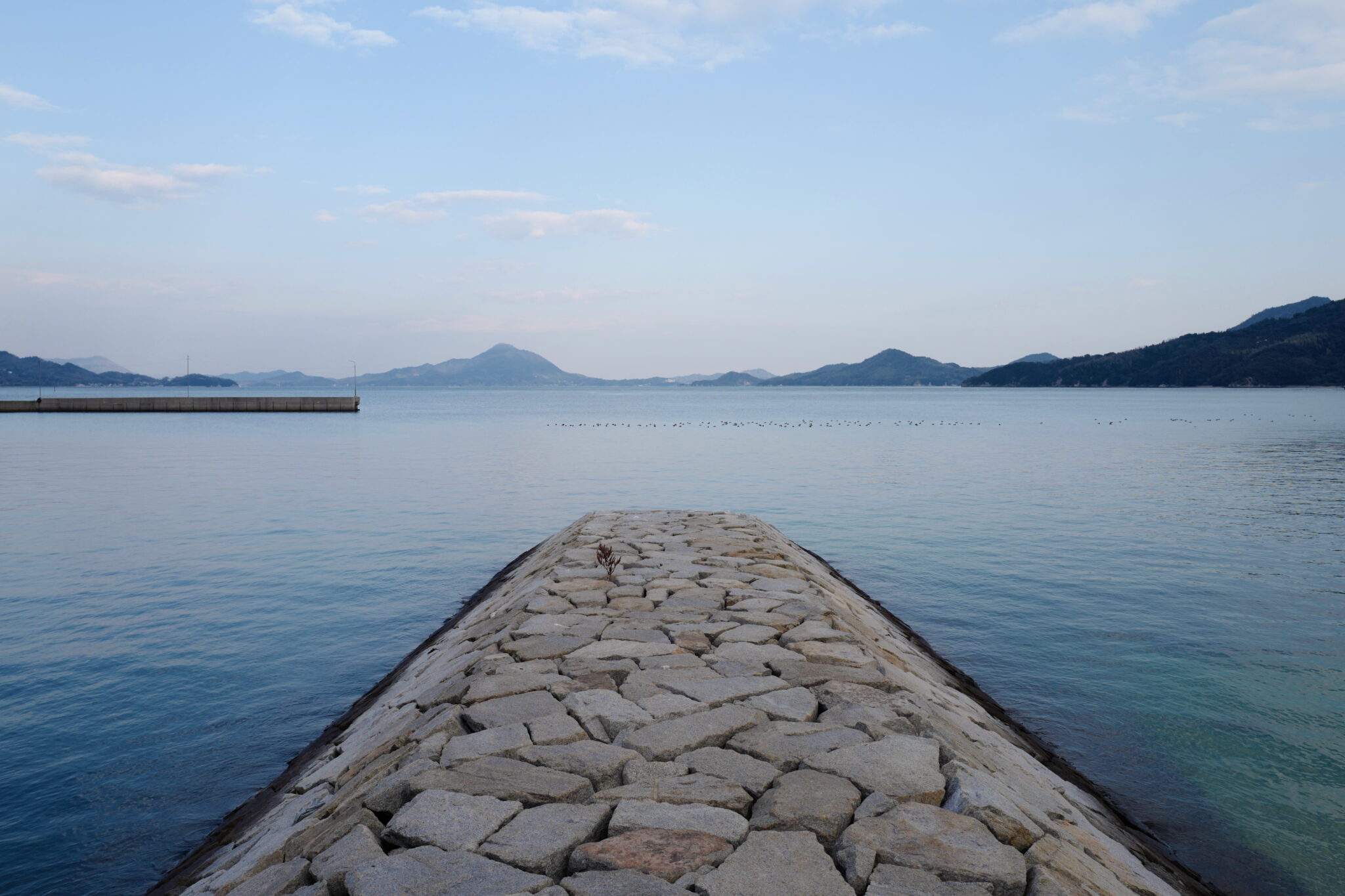
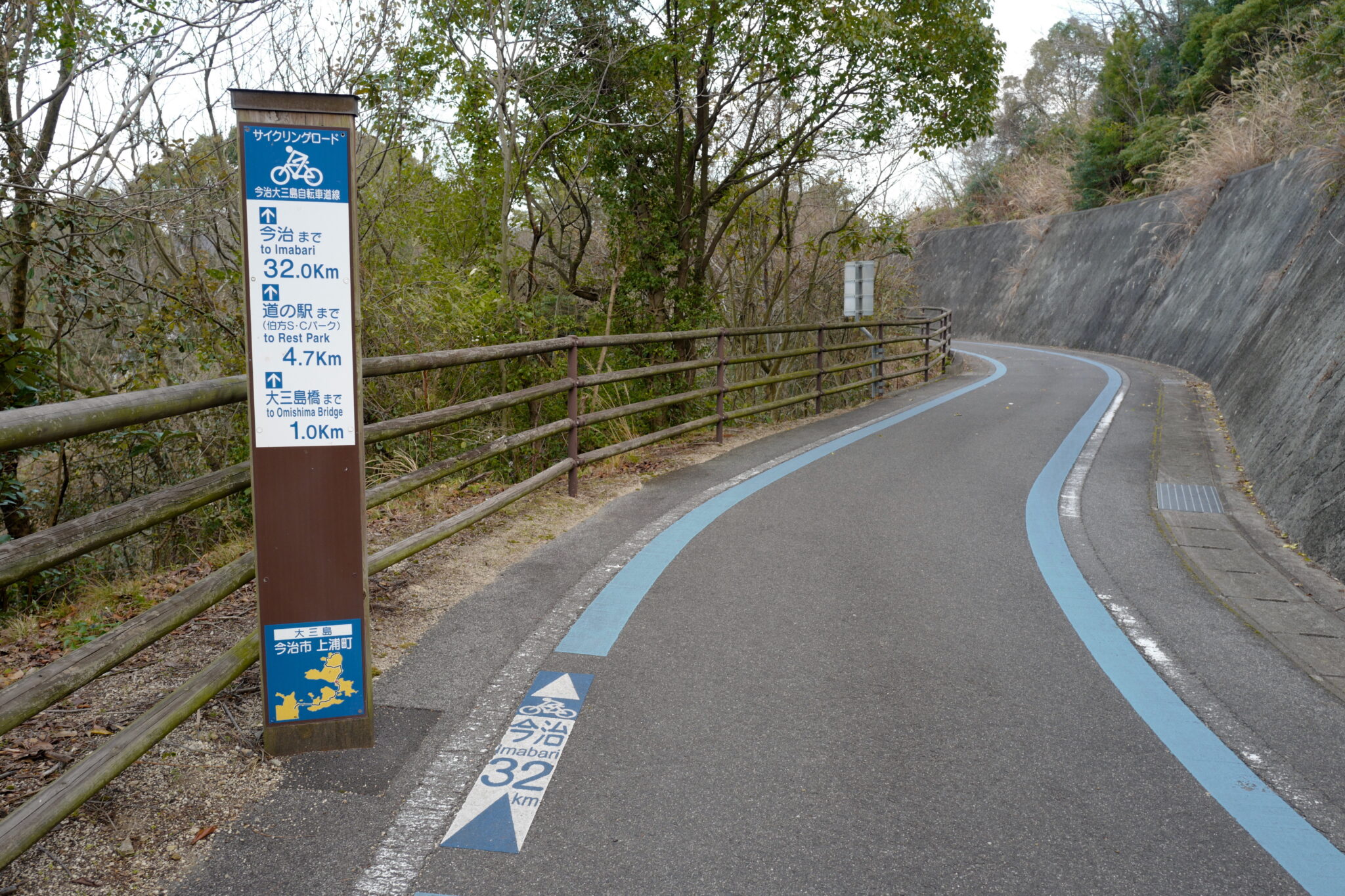
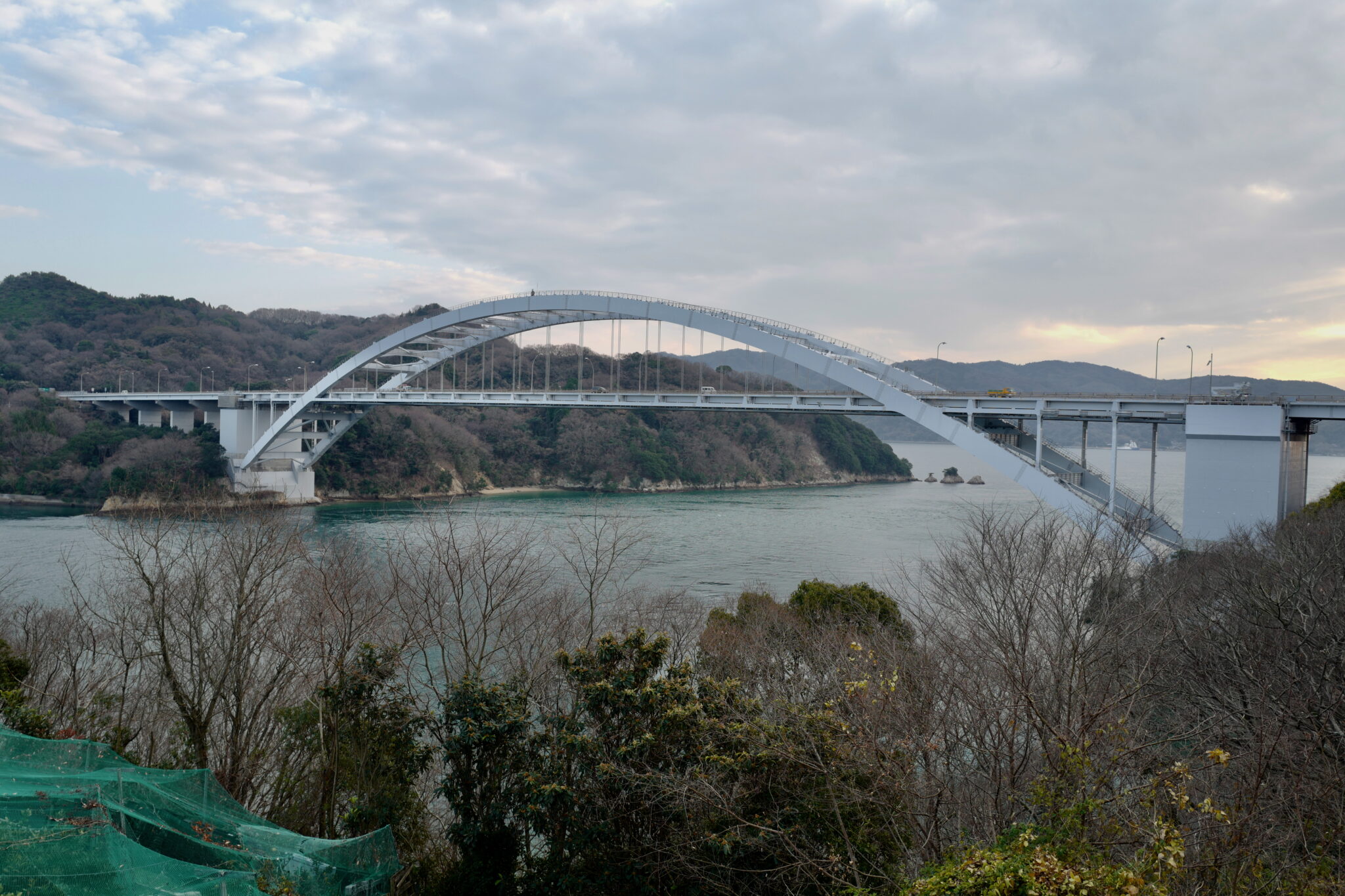
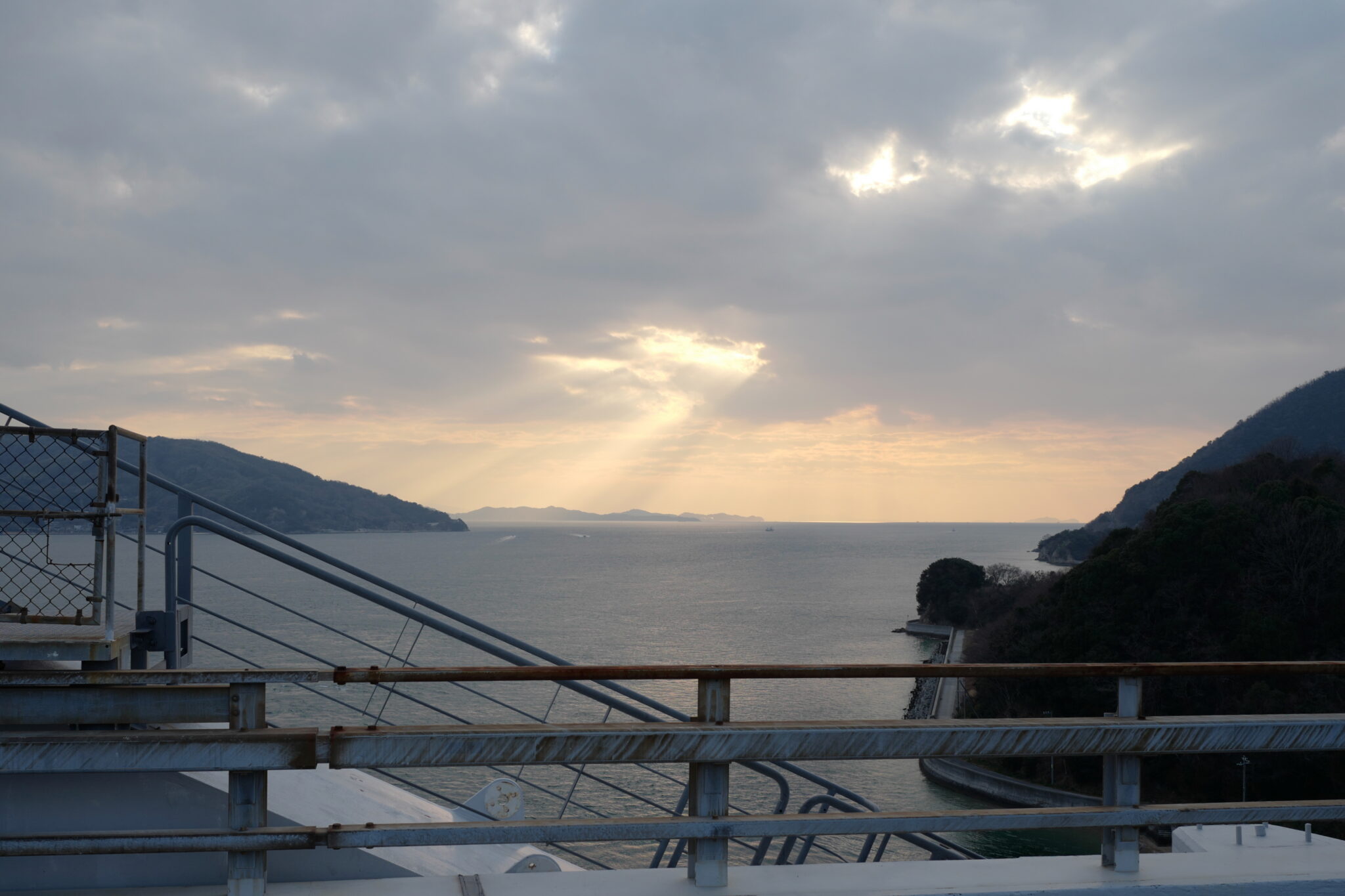
Despite being the largest island in the chain, we didn’t spend much time on Omishima. However, it boasts some interesting places like Ōyamazumi Shrine (大山祇神社) and the Toyo Ito Museum of Architecture (今治市伊東豊雄建築ミュージアム) off the Blue Line.
Hakatajima Island
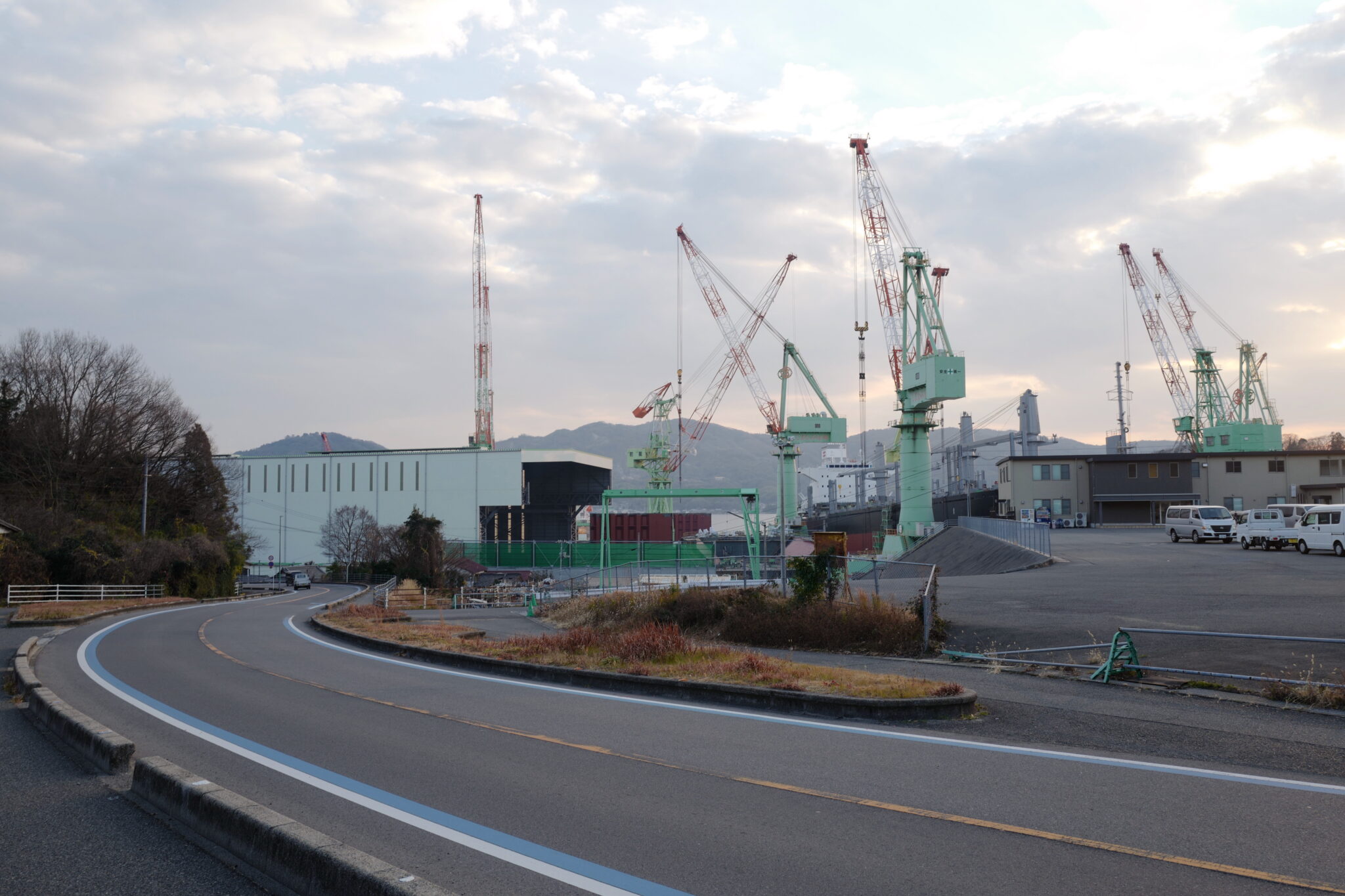
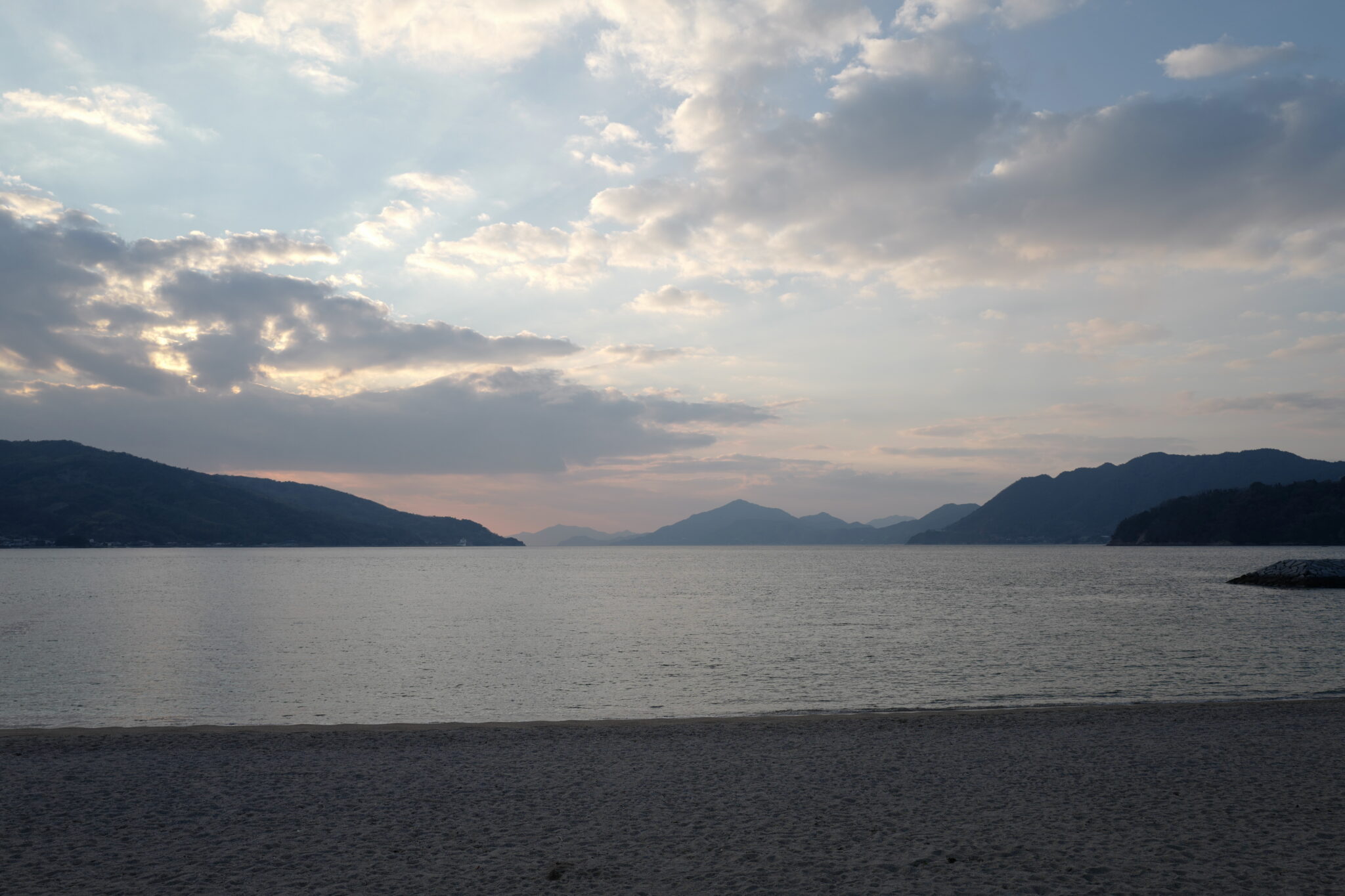
Hakatajima, like neighboring Omishima, is only barely touched by the Blue Line route, skirting its western side for approximately 3 km. However, as sunset fell, we continued a short distance past its southern tip to our accommodation for the night.
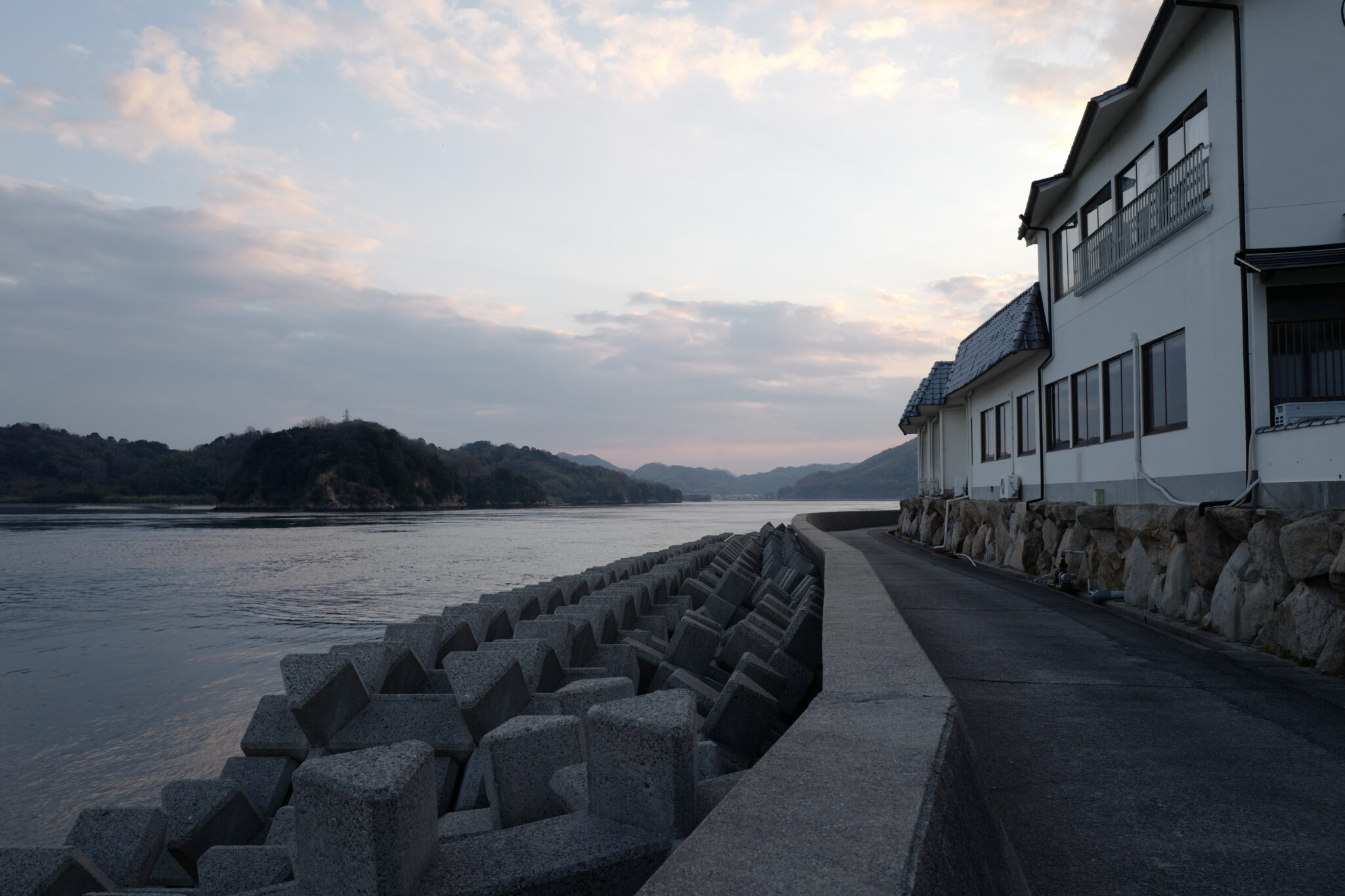
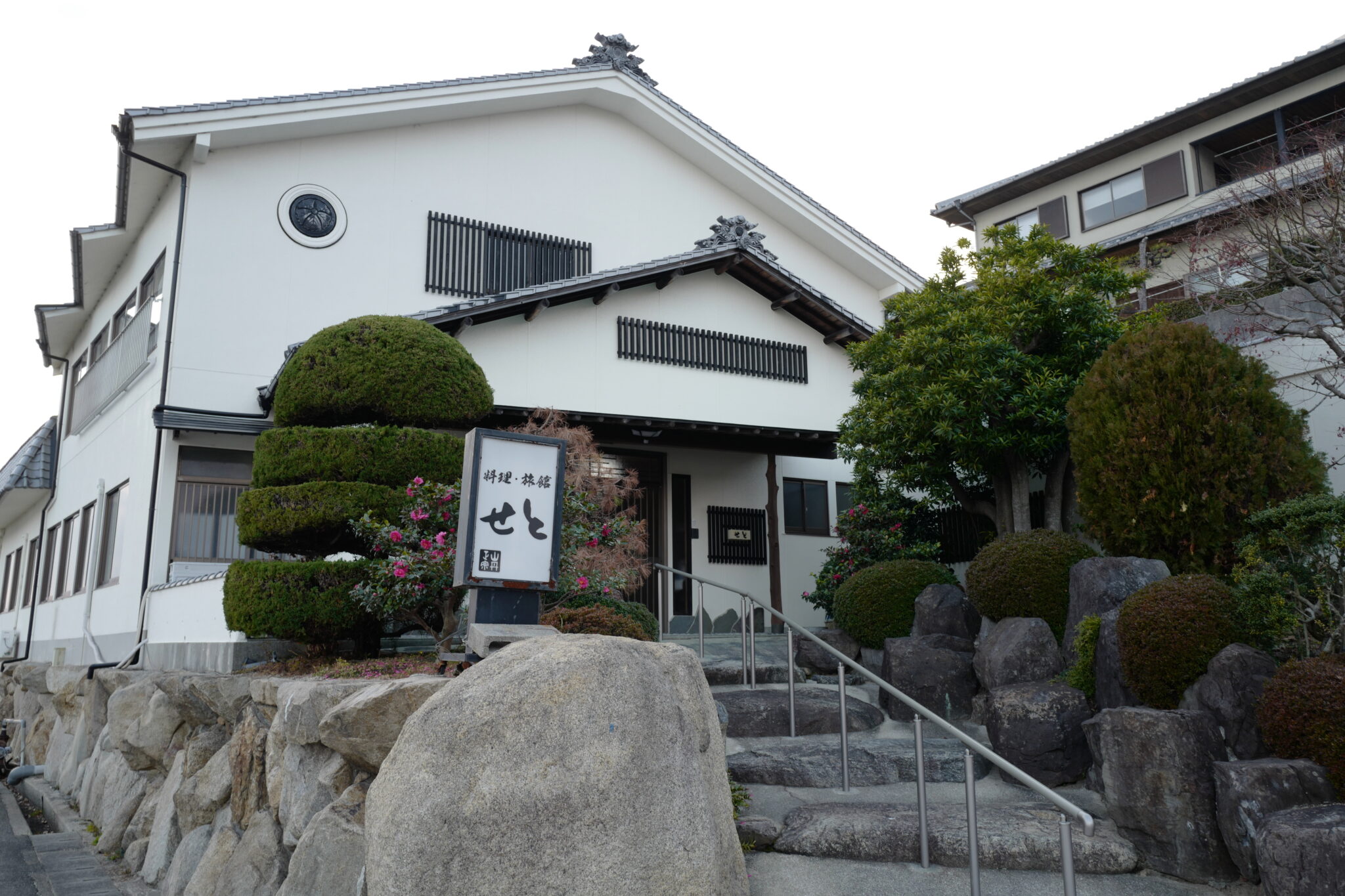
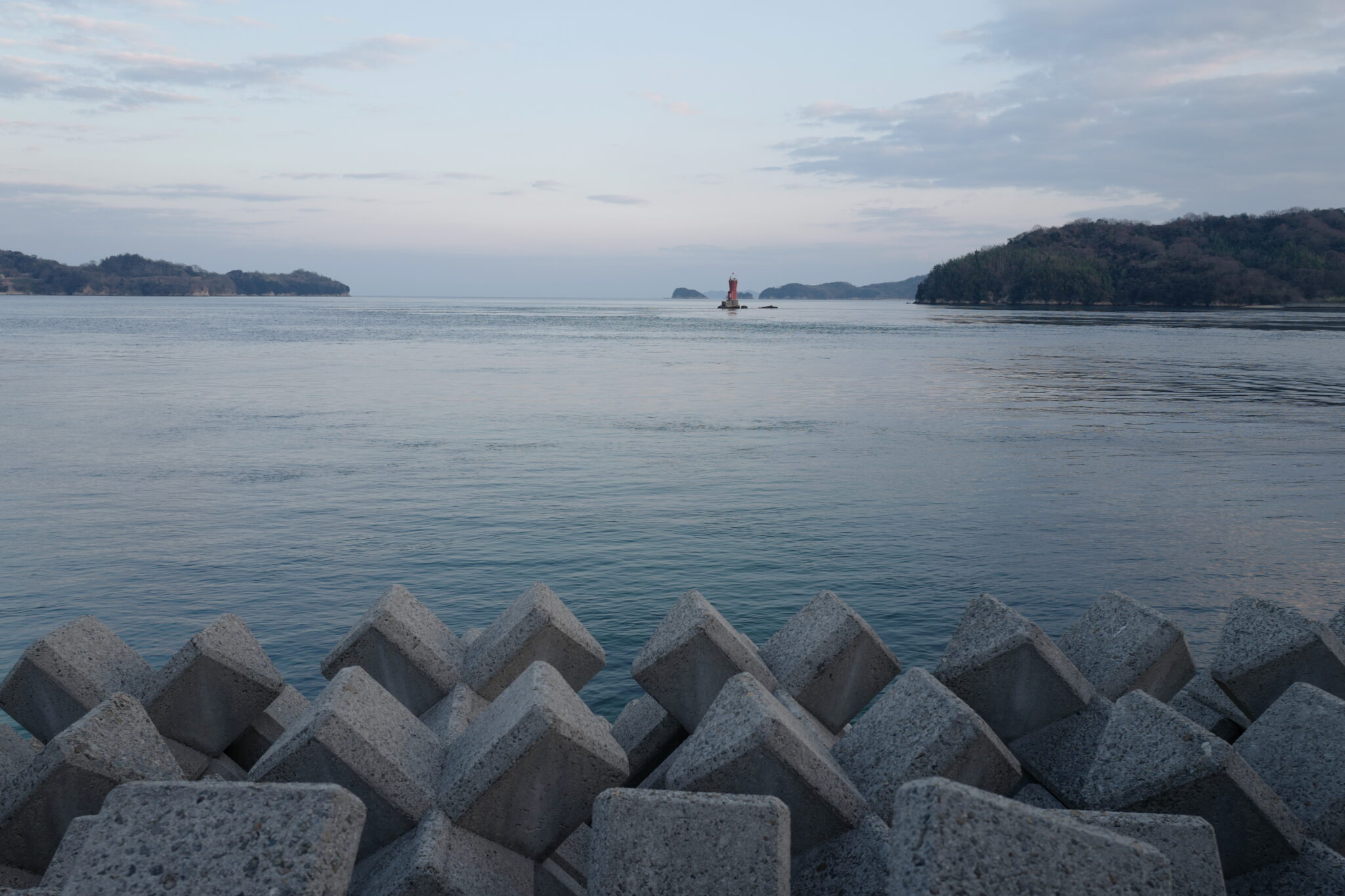
We were the only guests at Ryokan Seto that night, but it was a really unforgettable spot. We had brilliant views from our room, a steaming hot bath, and a delicious meal of fresh seafood to follow.
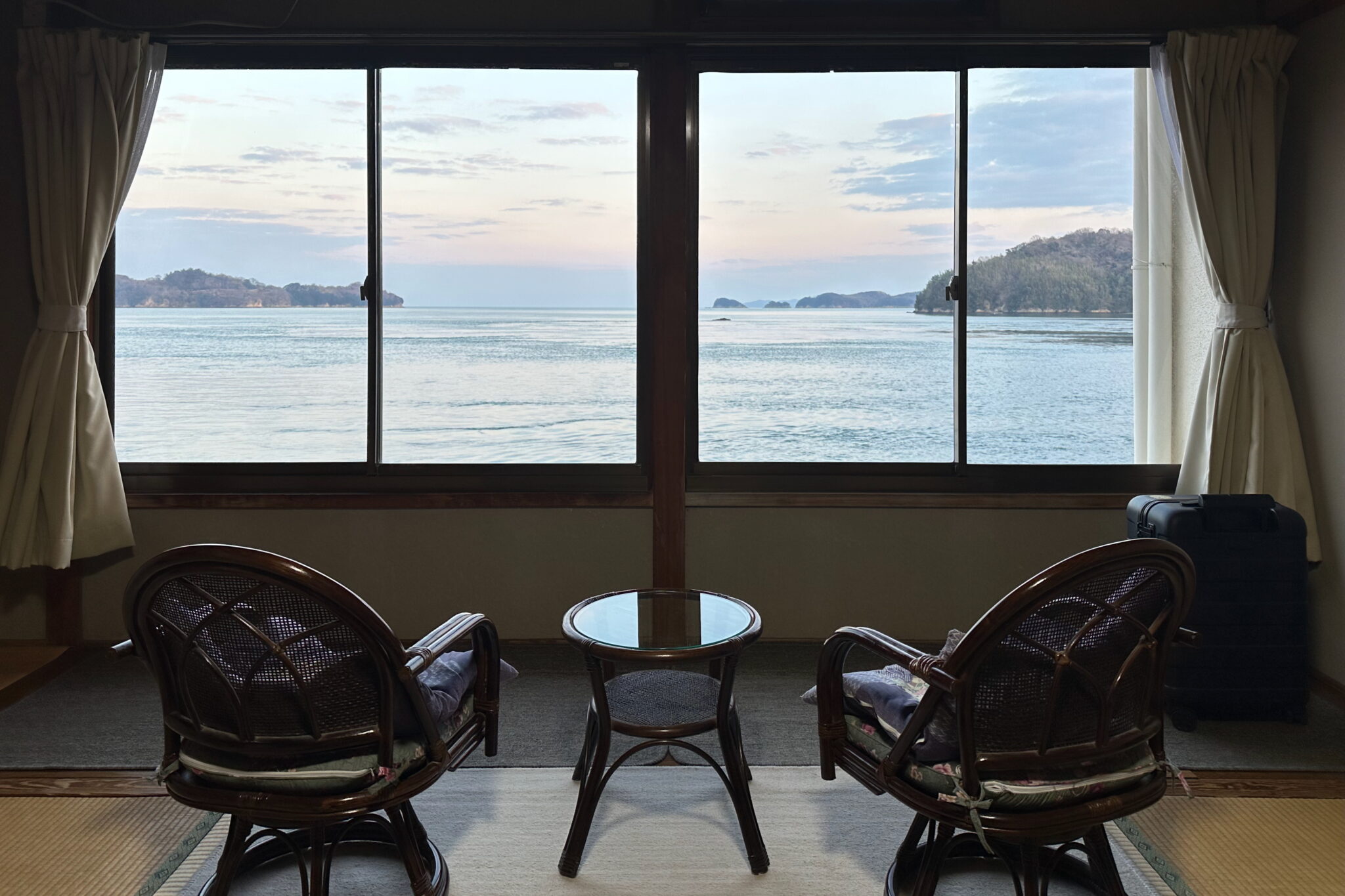
Photos of celebrity guests on the wall from the 1980s showed that the ryokan was perhaps past its glory days. However, the proprietor, who appeared to be managing it alone, exemplified Japanese hospitality, and I hope she can keep it going somehow.
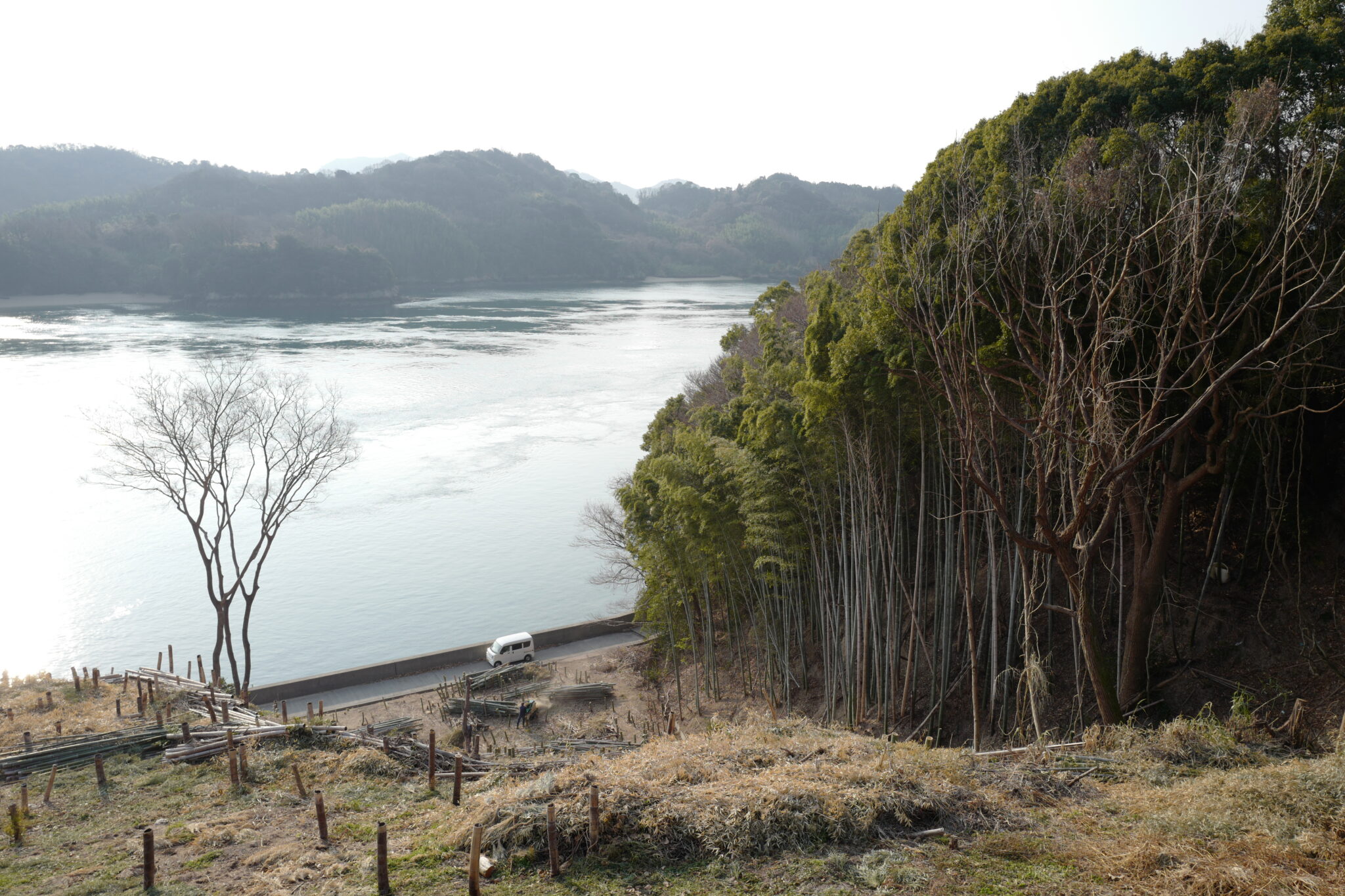
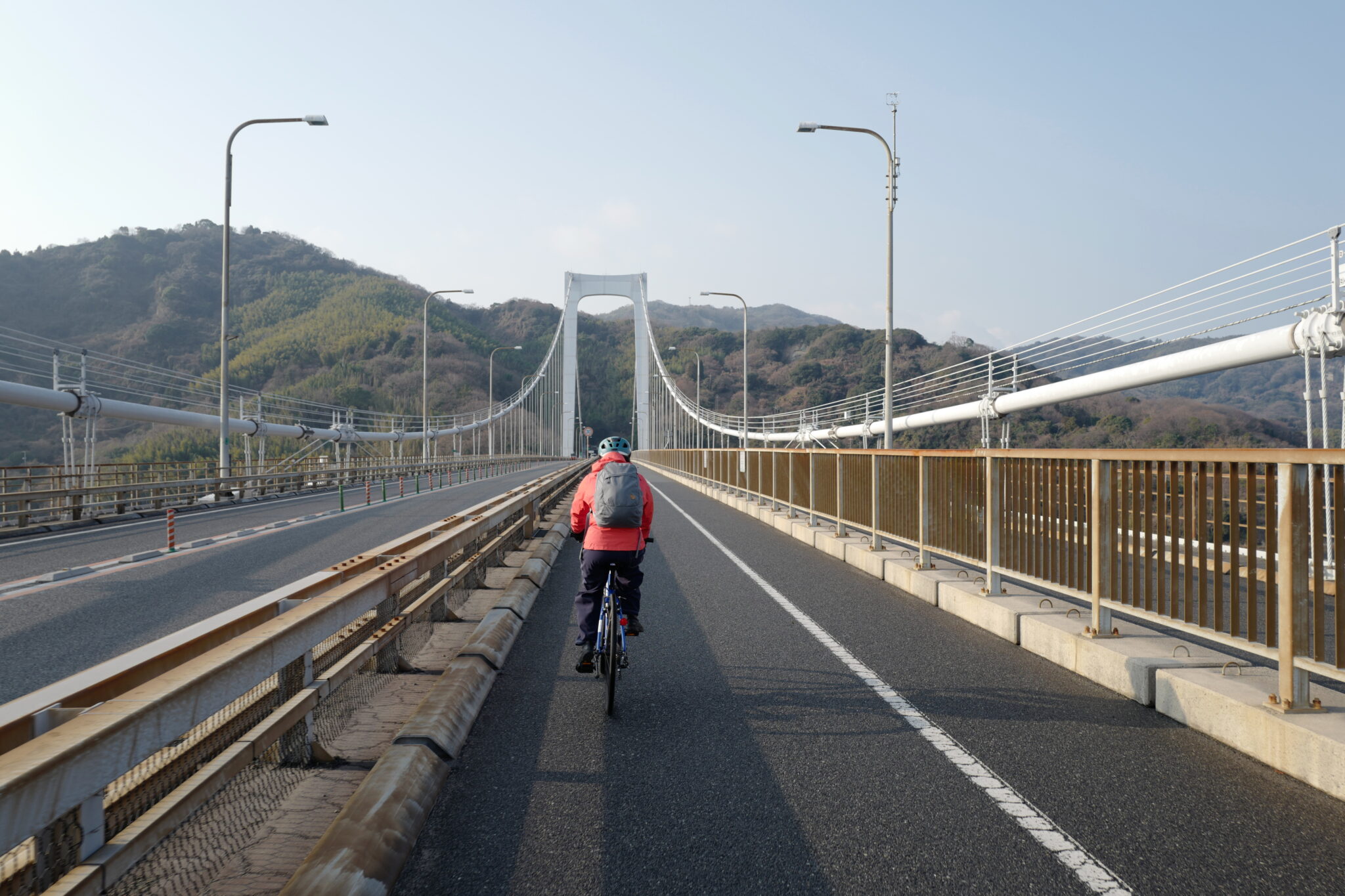
In the morning, still sore from the day before, we cycled back around to Hakata–Ōshima Bridge and across to Oshima, the last island on our tour.
Oshima Island (大島)
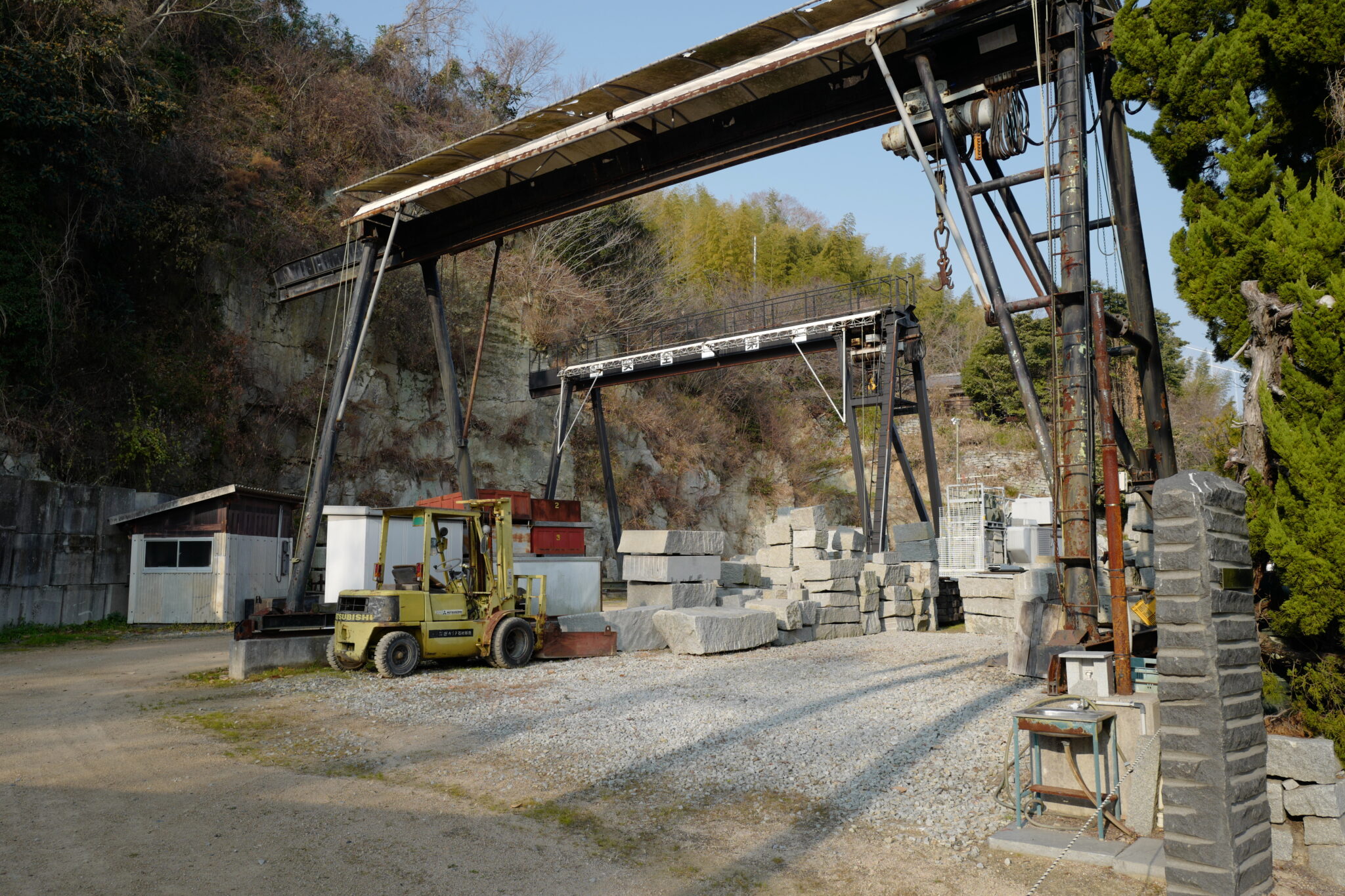
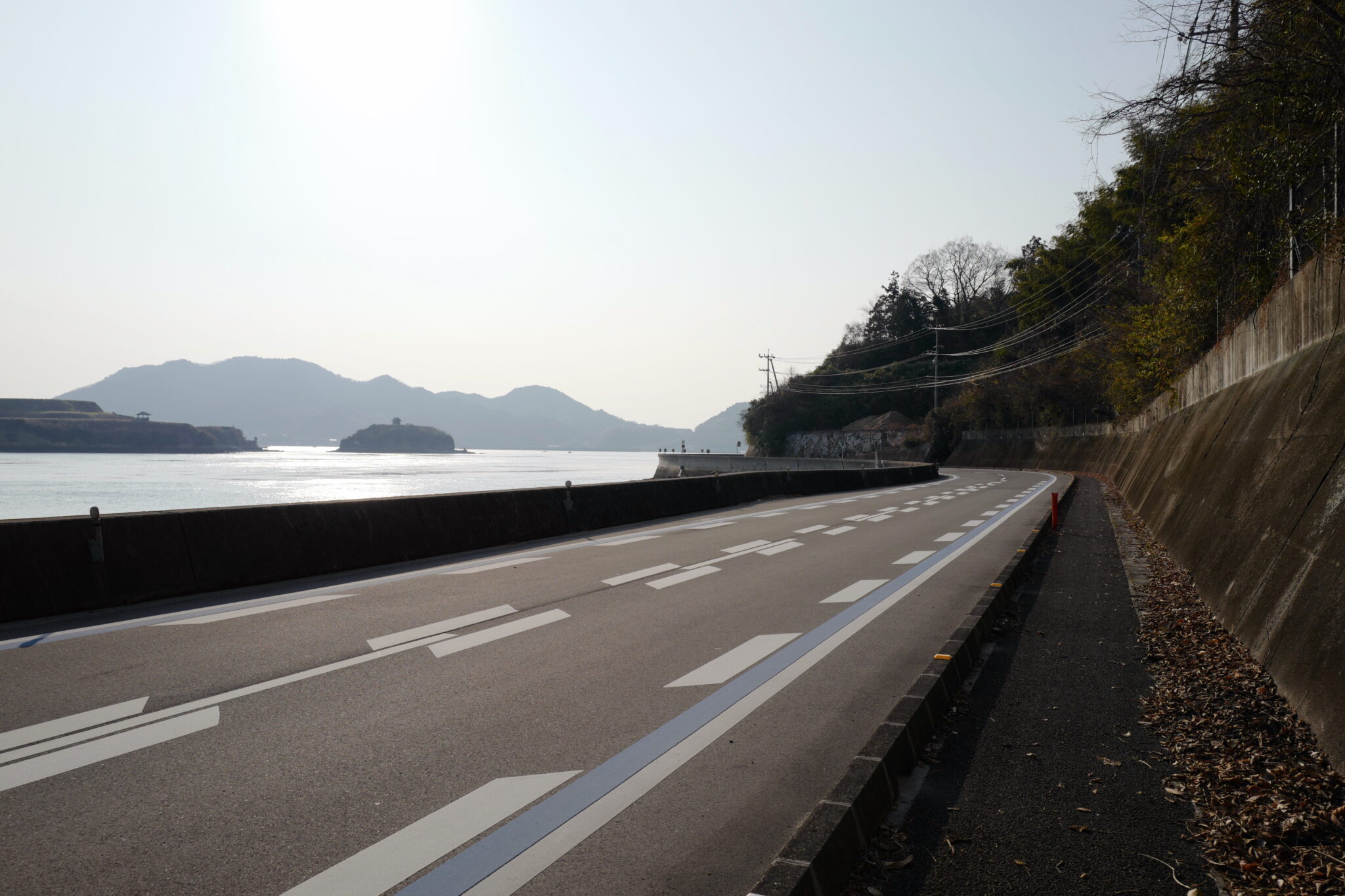
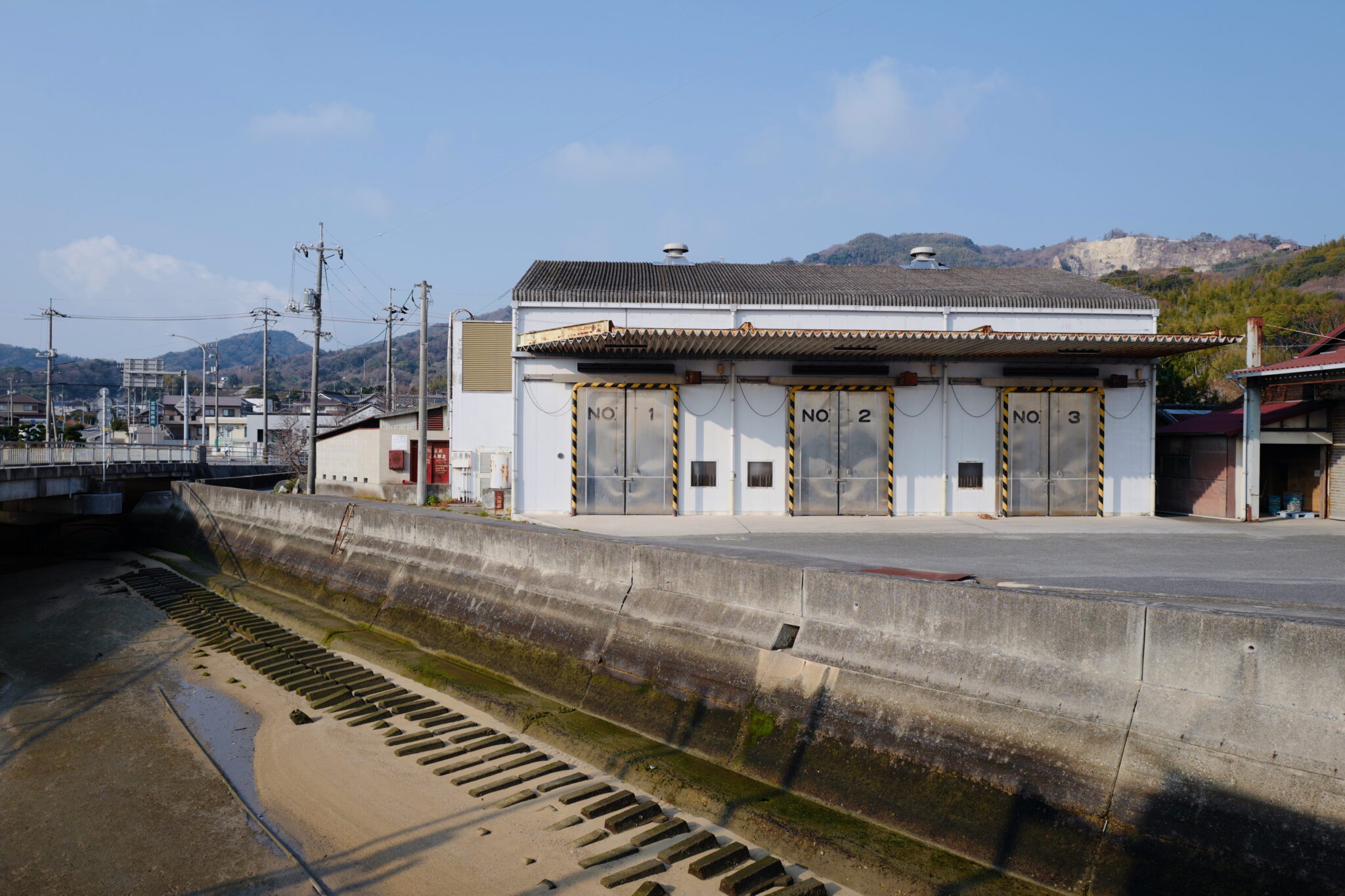
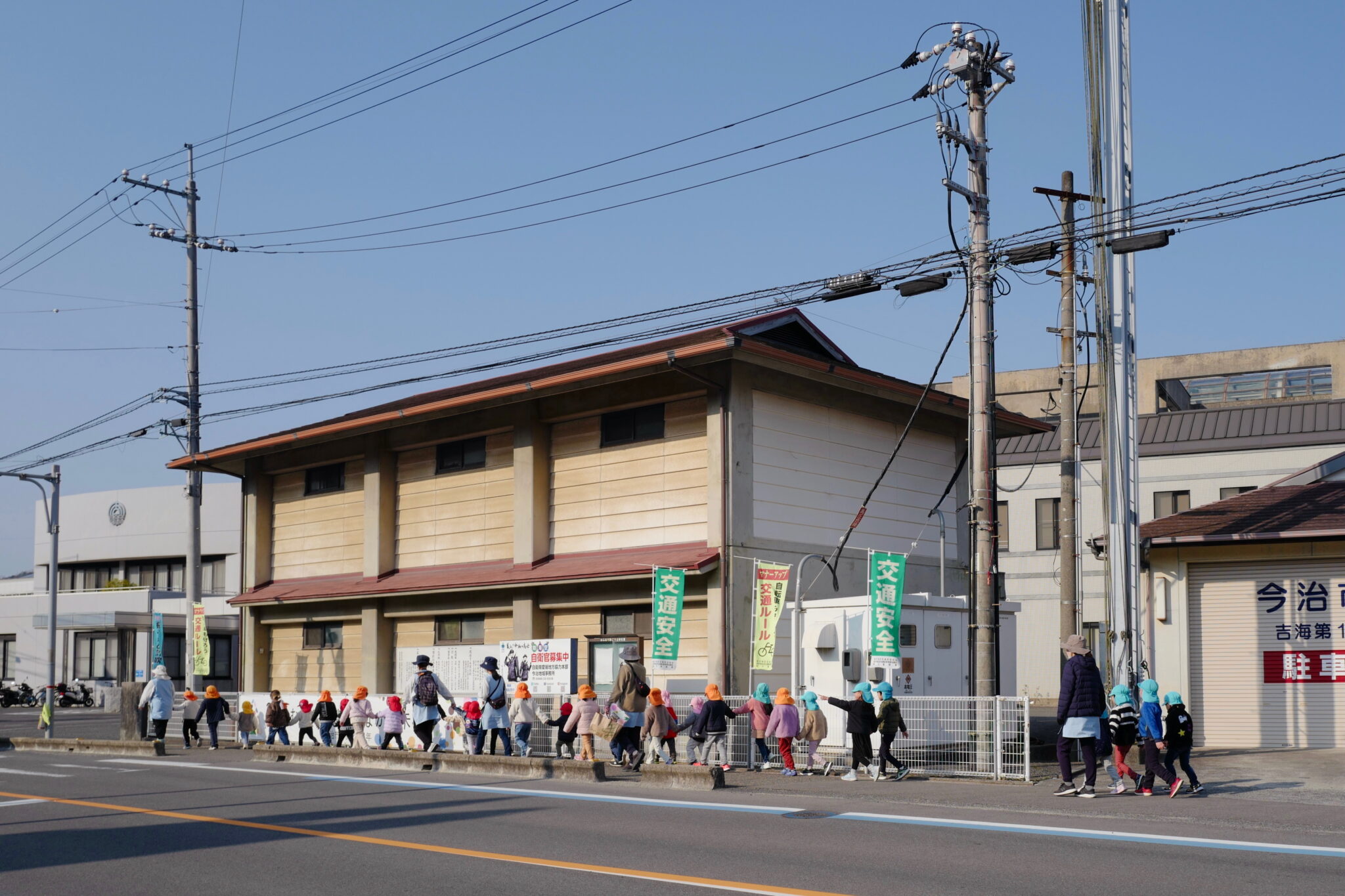
After a stretch of picturesque coastline, the route cuts inland from Miyakubo Port and passes through the middle of the island. Two long climbs lie between here and the entrance to the final gargantuan bridge. Although it passed quickly, this was the most physically taxing part of the journey.
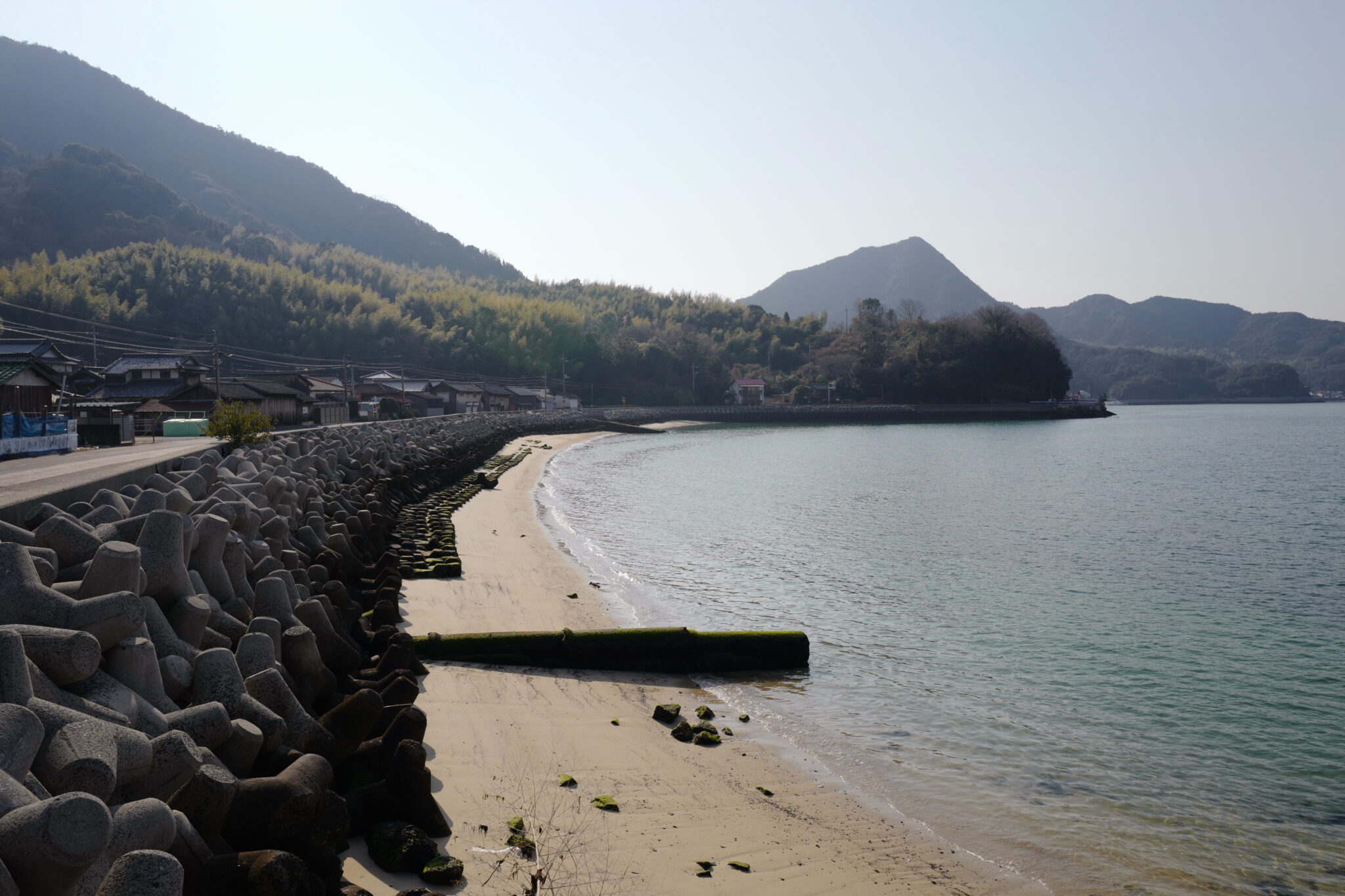
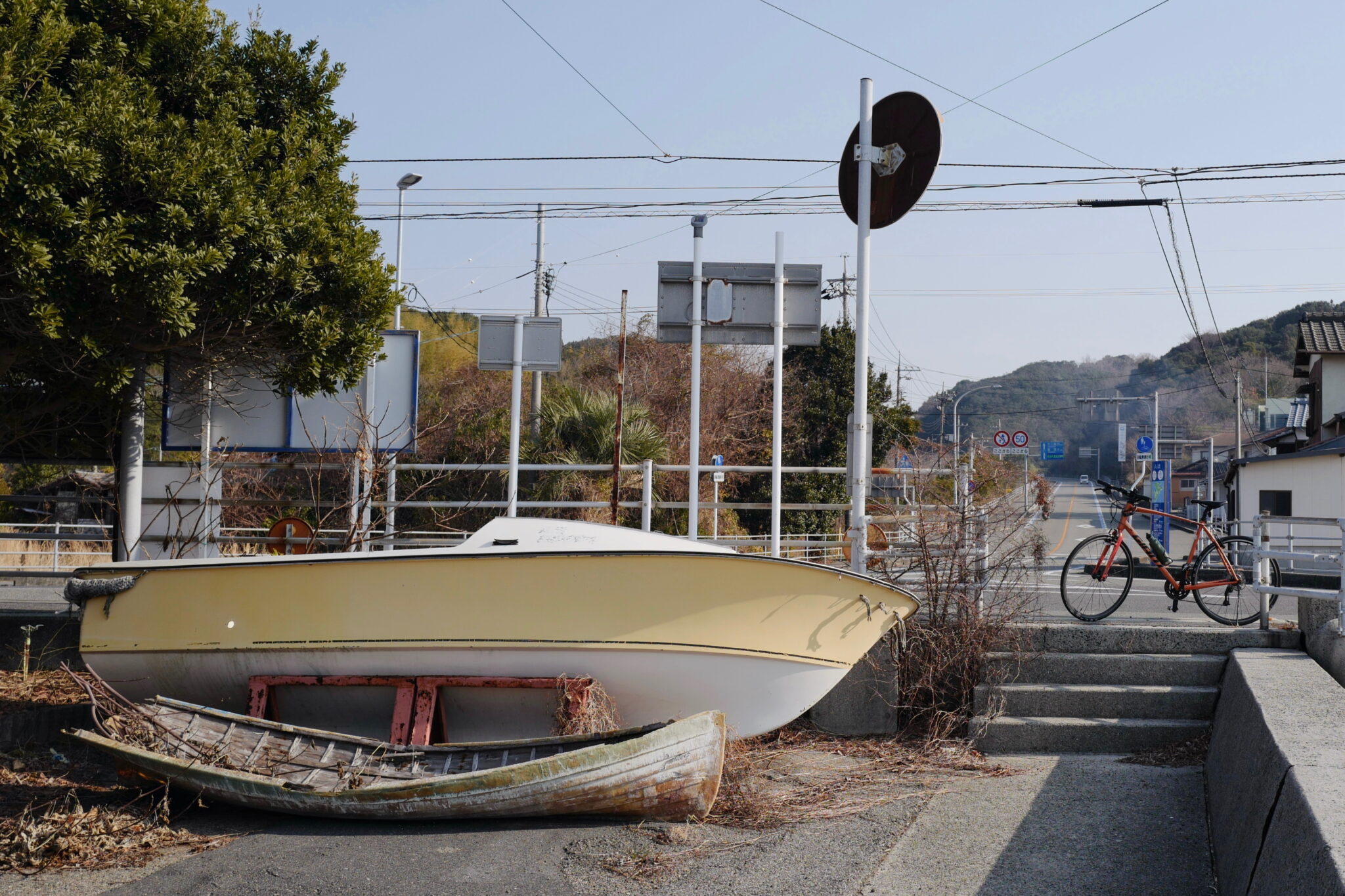
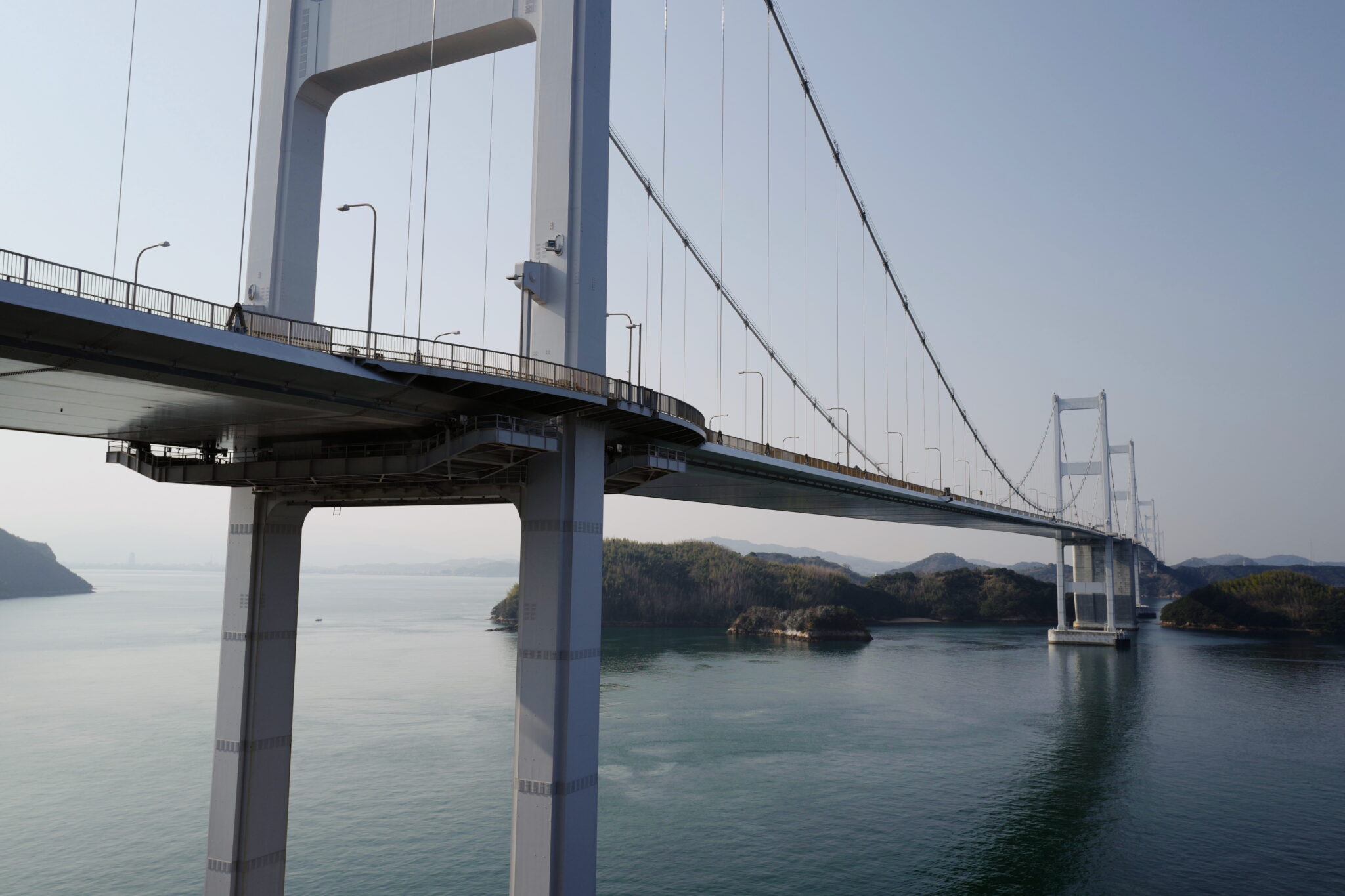
Kurushima Kaikyō Bridge is actually three suspension bridges connected together across a number of smaller islands. It’s an impressive structure that dominates the landscape but somehow feels graceful, with all three bridges floating 78 meters above the water.
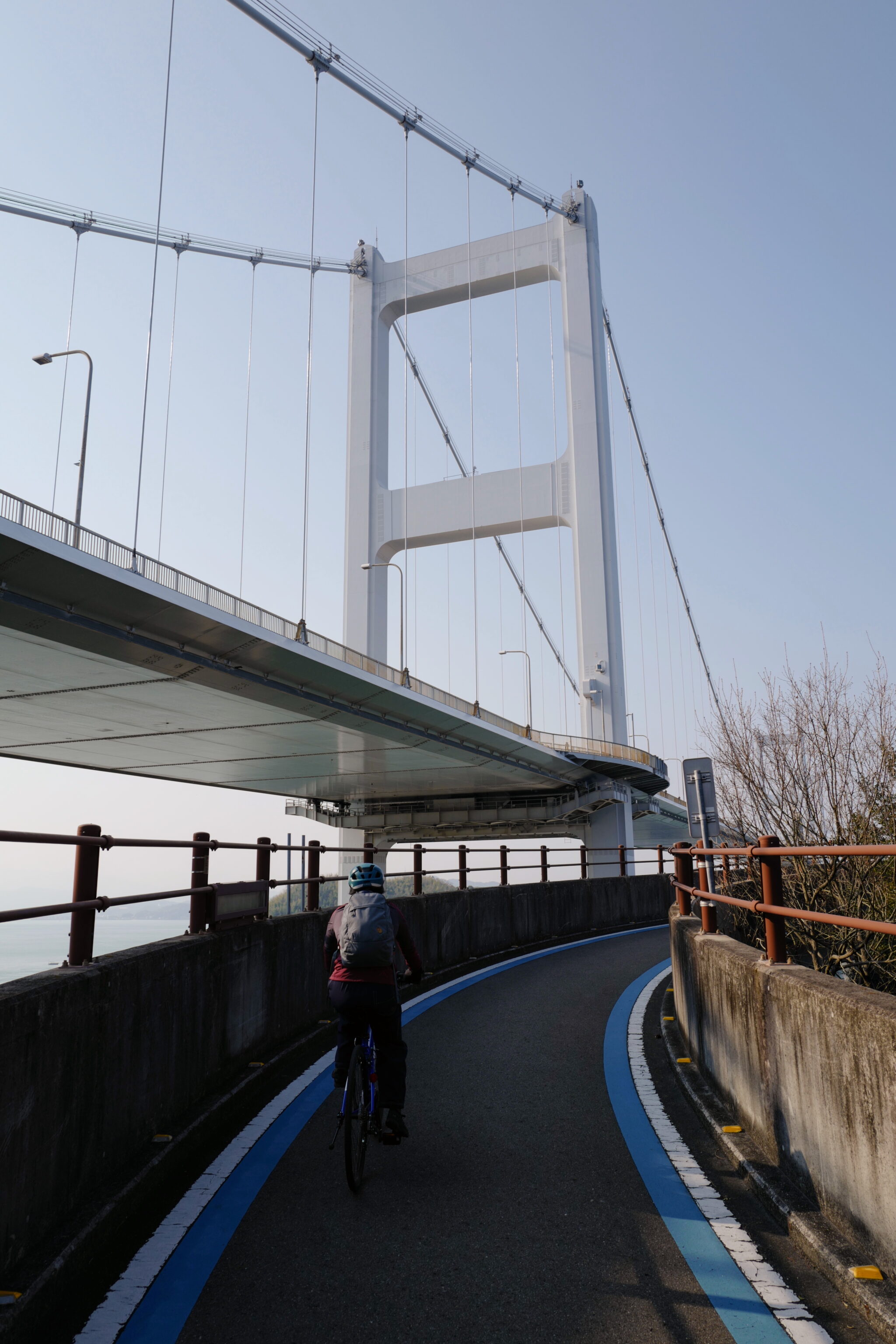
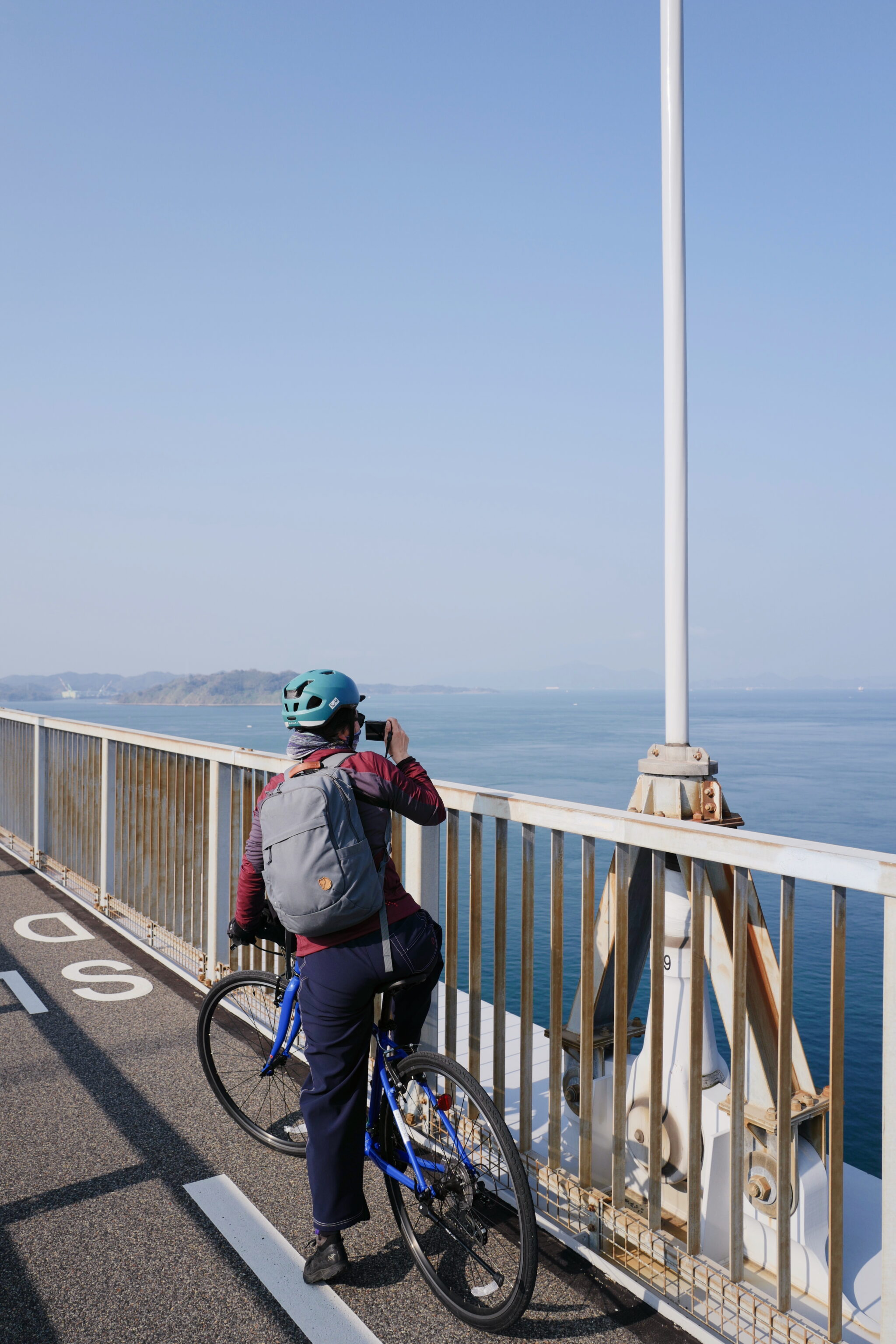
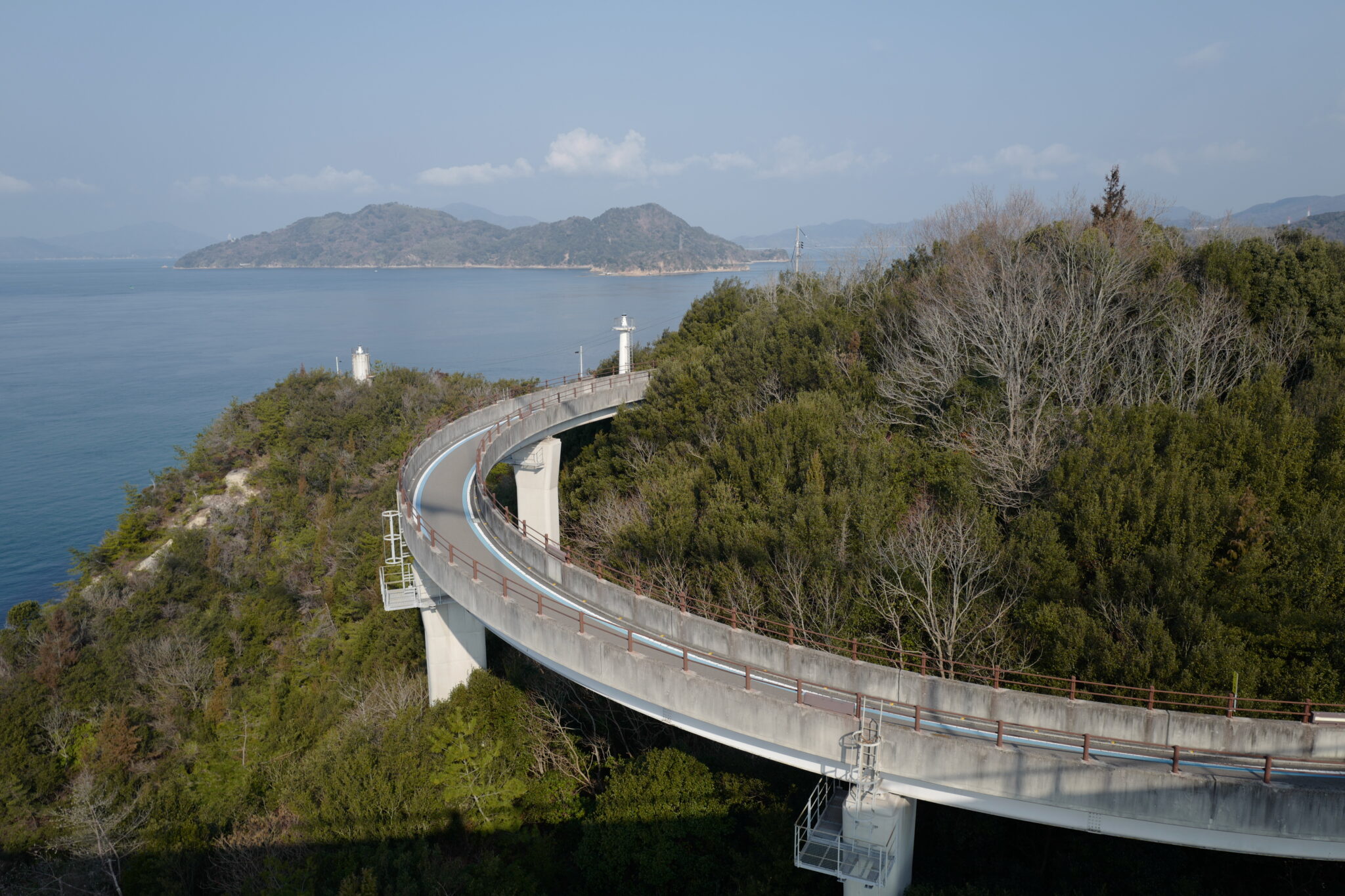
An enormous circular ramp leads you up to the dedicated cycle lane on the bridge, and there are two rest areas where you can stop for a break and enjoy the view along the 4km span.
If we had known about it in advance, I would have liked to have viewed the bridge from Kirosan Observatory Park (亀老山展望公園), where renowned architect Kuma Kengo has designed an observation deck.
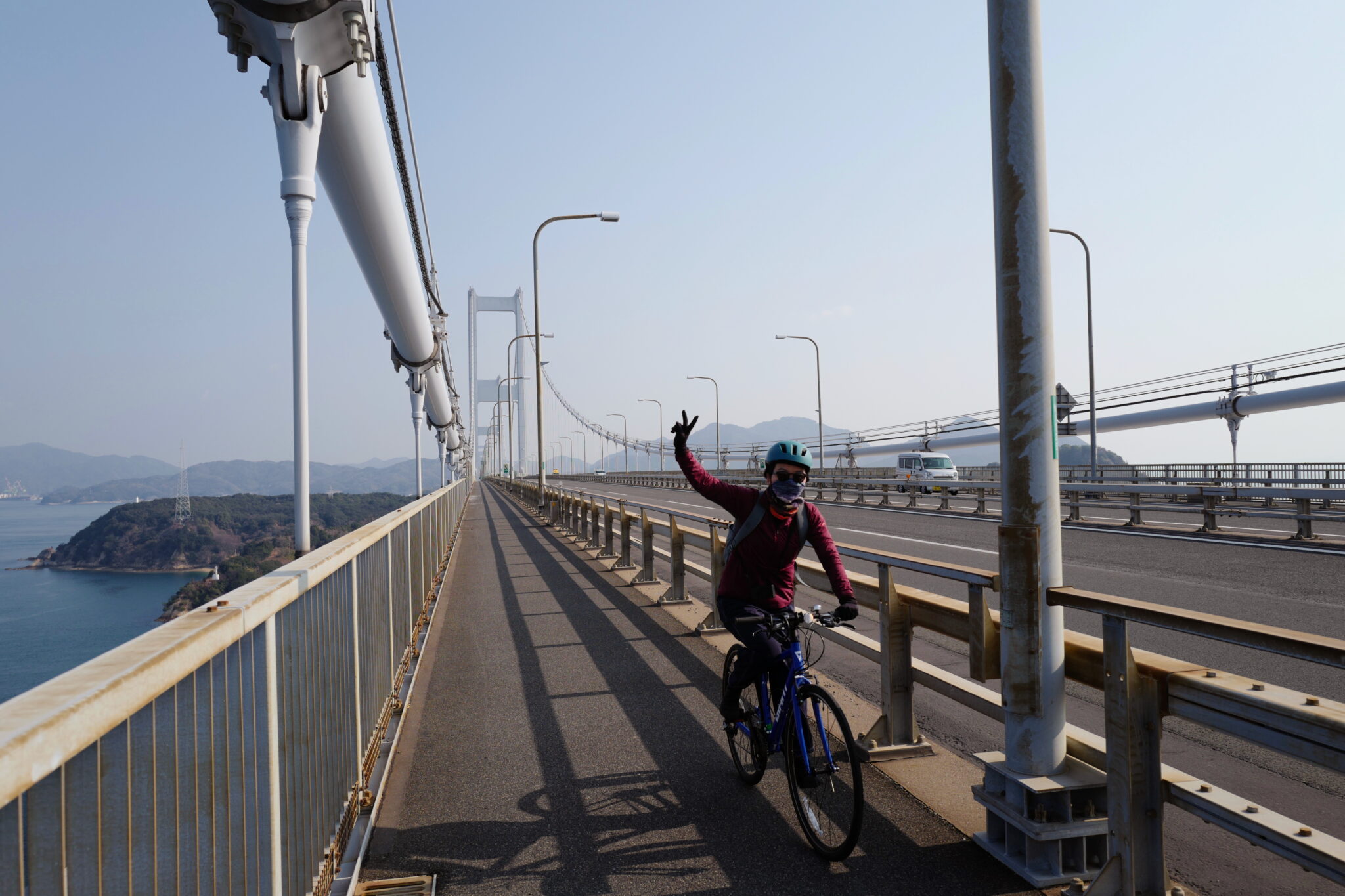
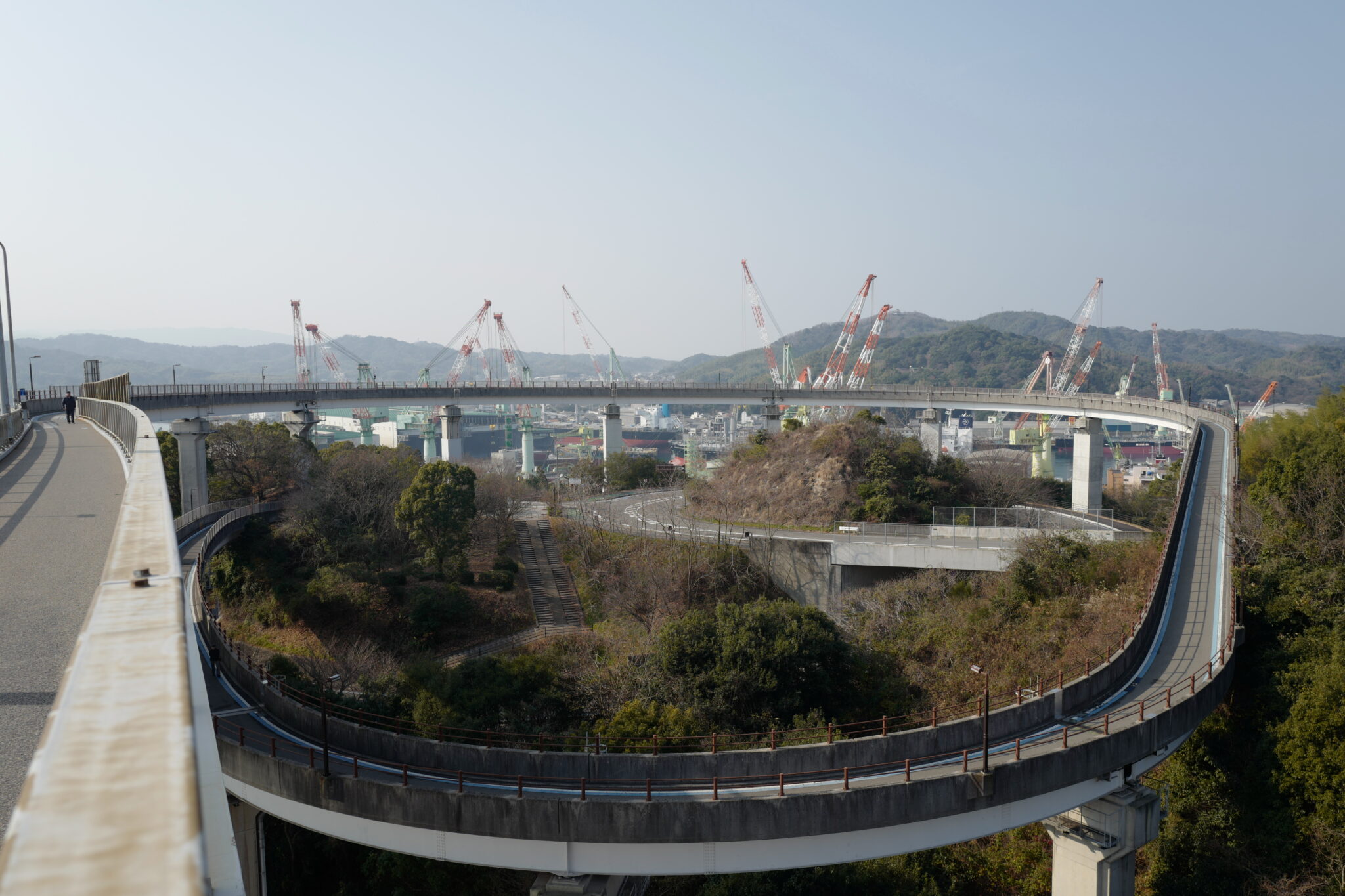
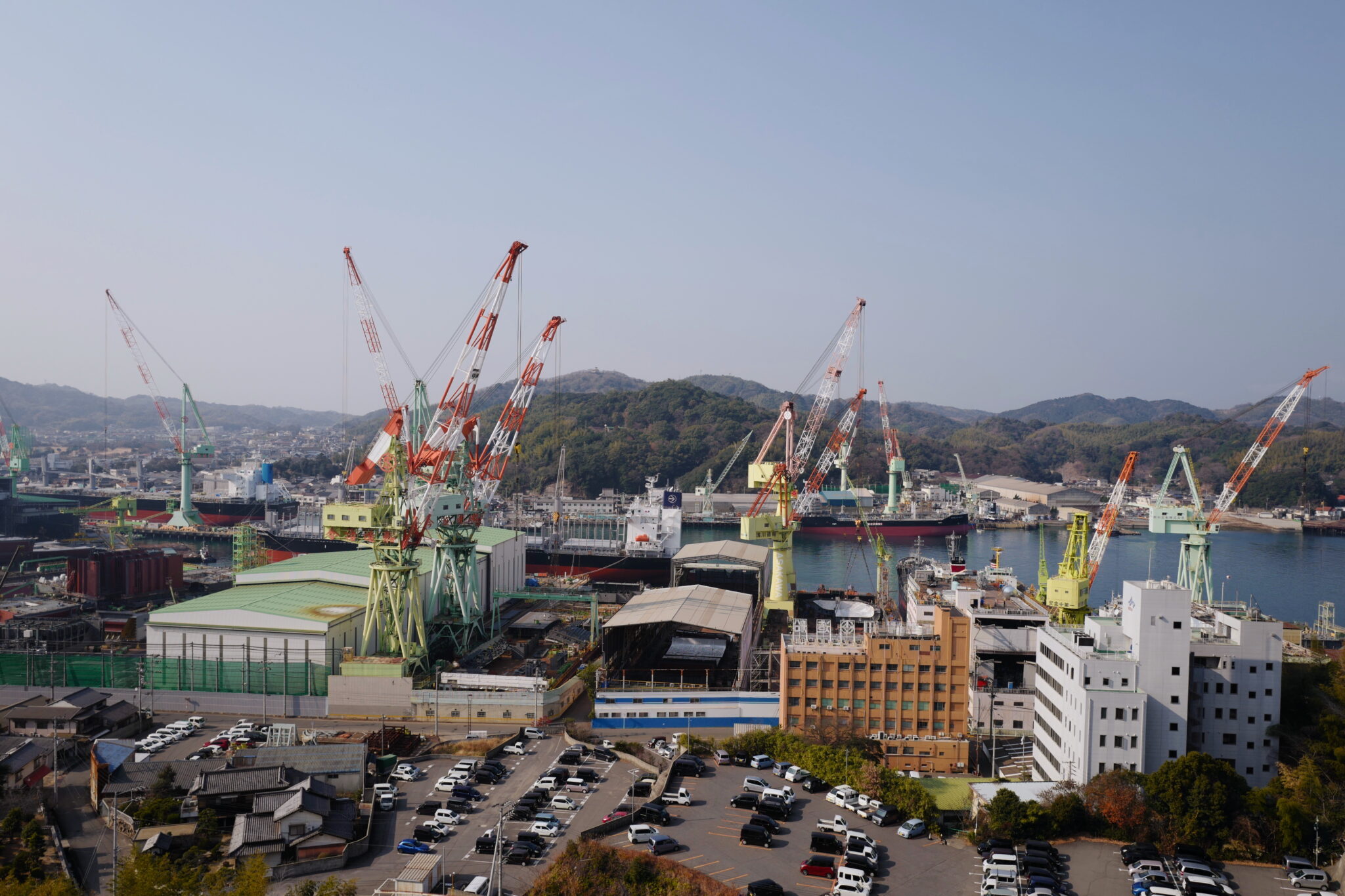
Imabari City (今治市)
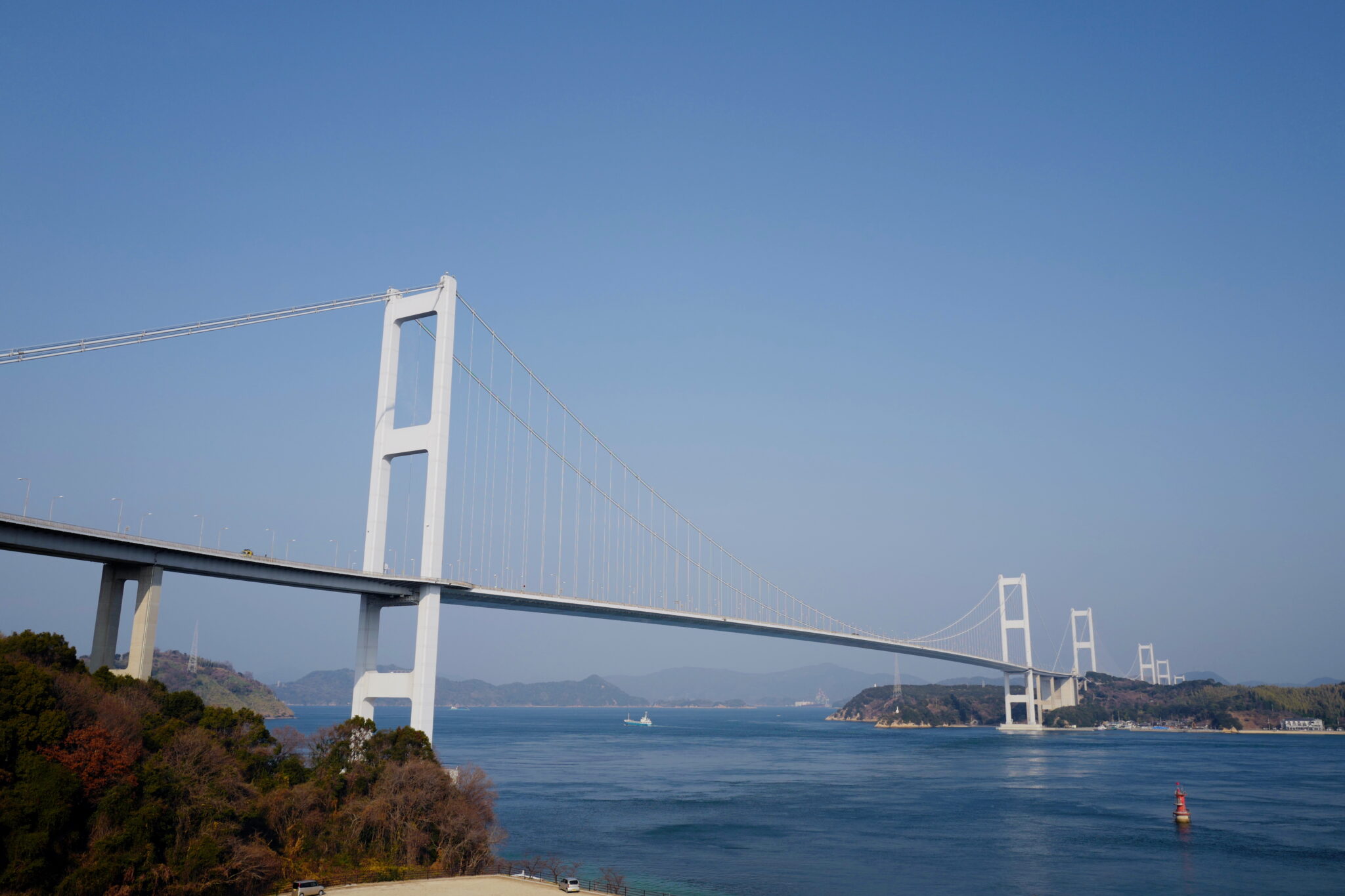
After crossing into Imabari and cycling down another enormous off-ramp, you reach Sunrise Itoyama, a rest stop with a restaurant, shower rooms, and a hotel. It also has great views of the bridge from a panoramic window.
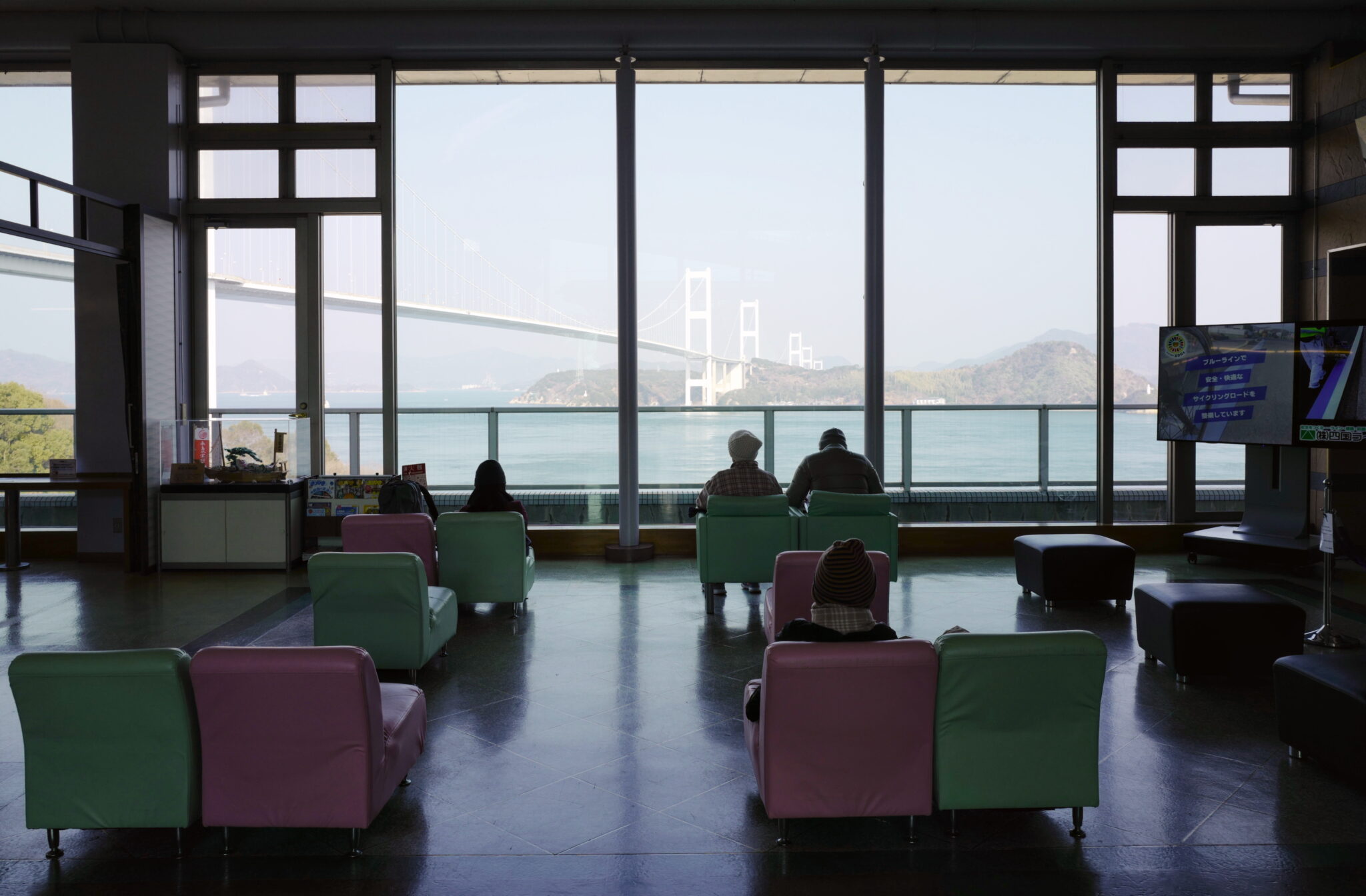
You can drop your bicycle off here and walk to nearby Hashihama Station (波止浜駅) or continue on two wheels to Imabari City (今治市) as we did since it was only 11 am.
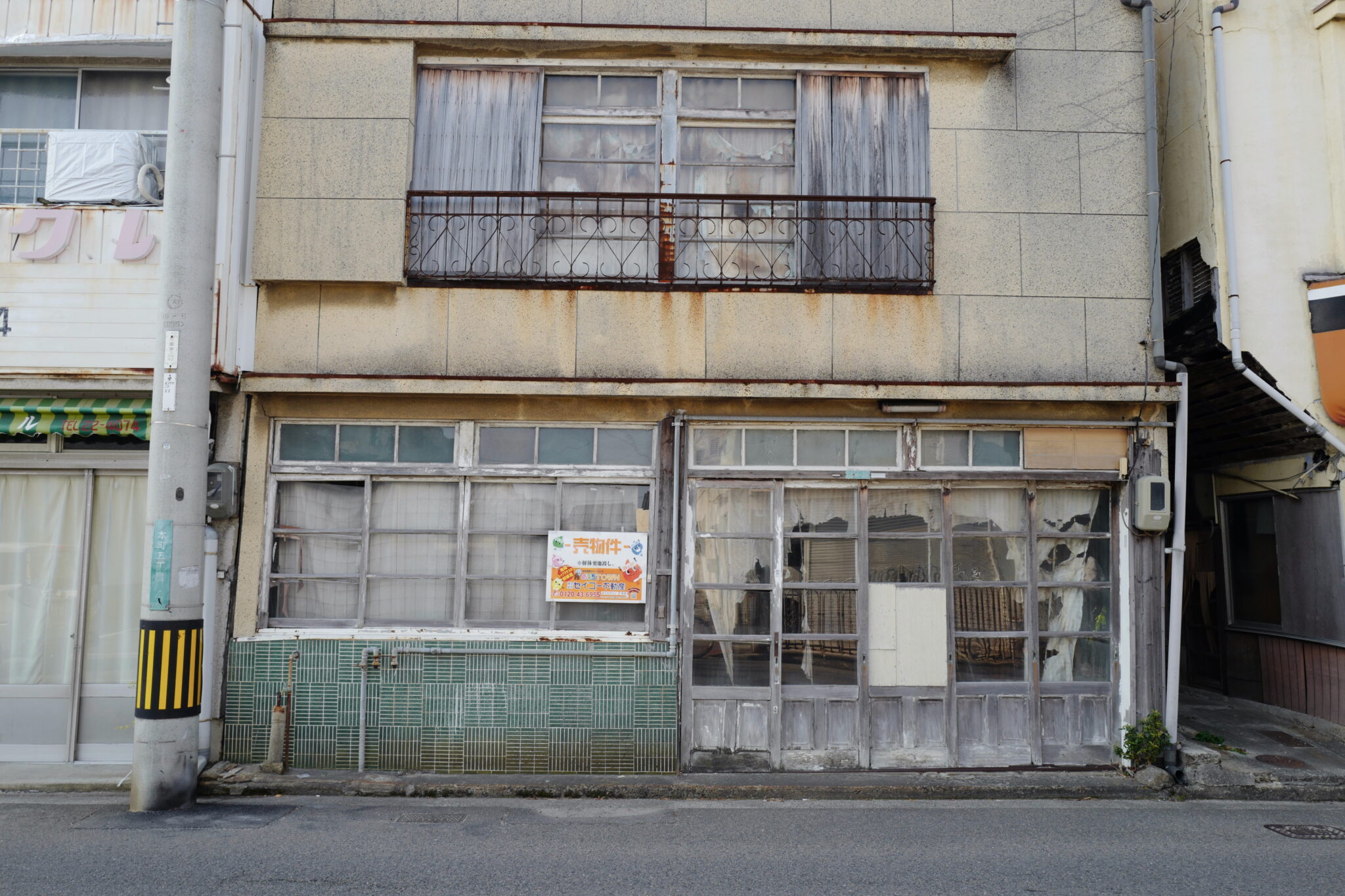
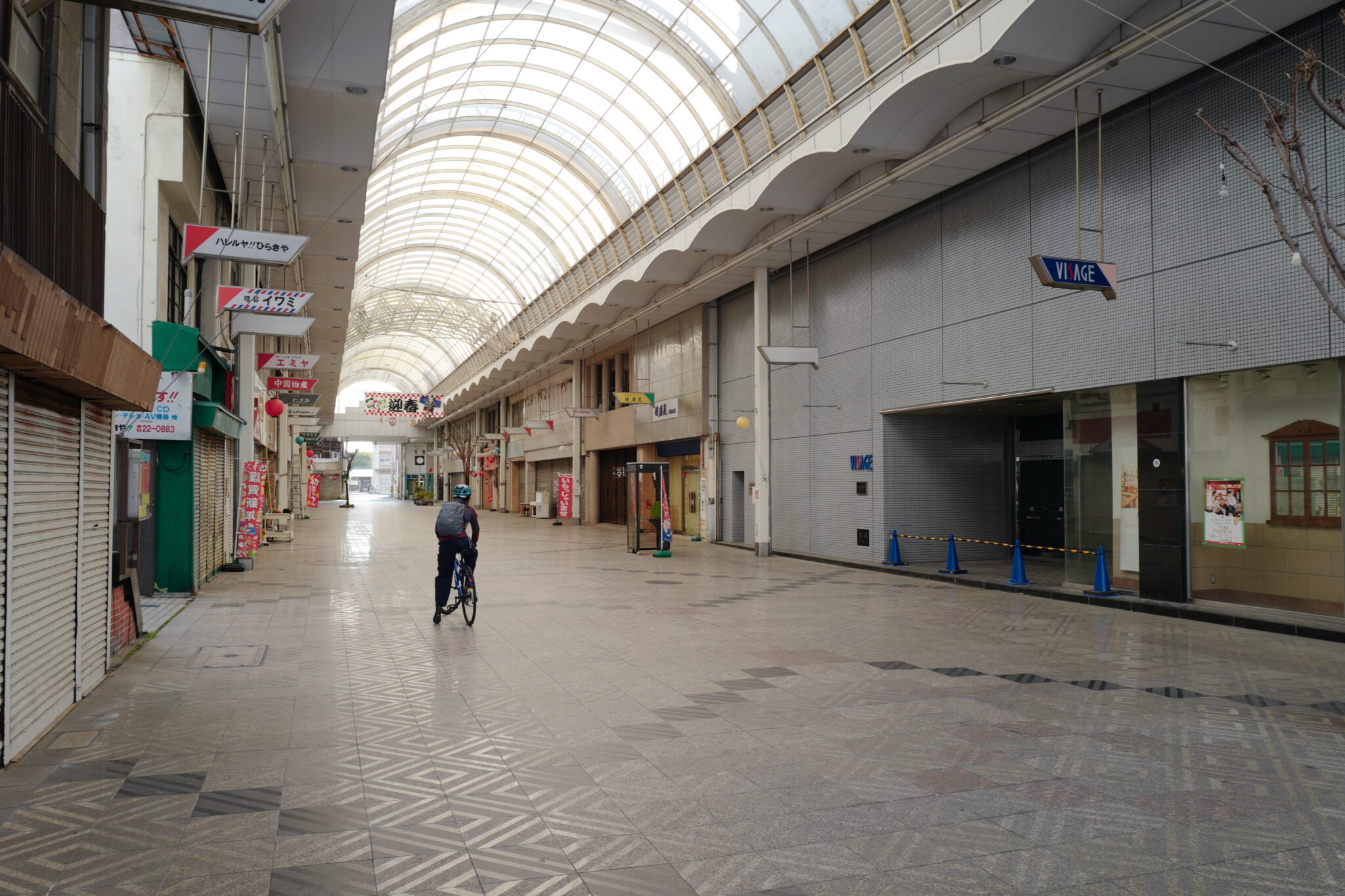
It was my second time visiting Imabari after passing through during the Shikoku 88 Temple Pilgrimage in 2016. As was also evident back then, Imabari City is in a state of managed decline, with many shops long closed and very few people to be seen. It is a very tidy ghost town.
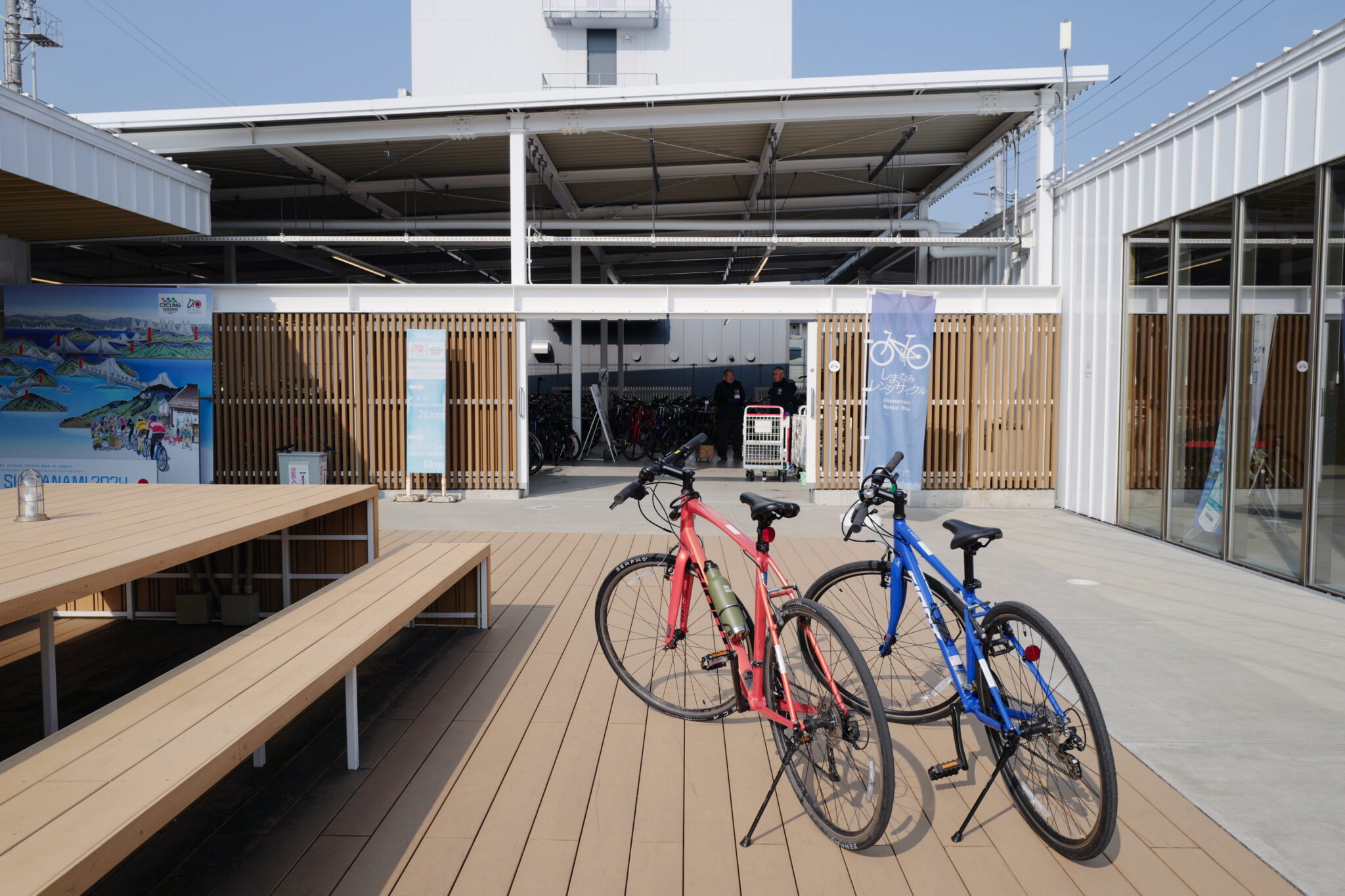
We dropped off our bicycles at the terminal outside Imabari Station at 11:30 a.m. Two elderly gentlemen received them and immediately got to work, giving them a thorough clean to prepare them for their next journey across the islands.
To celebrate the completion of the ride, we had a drink and a pastry at the adjacent Little Mermaid bakery.
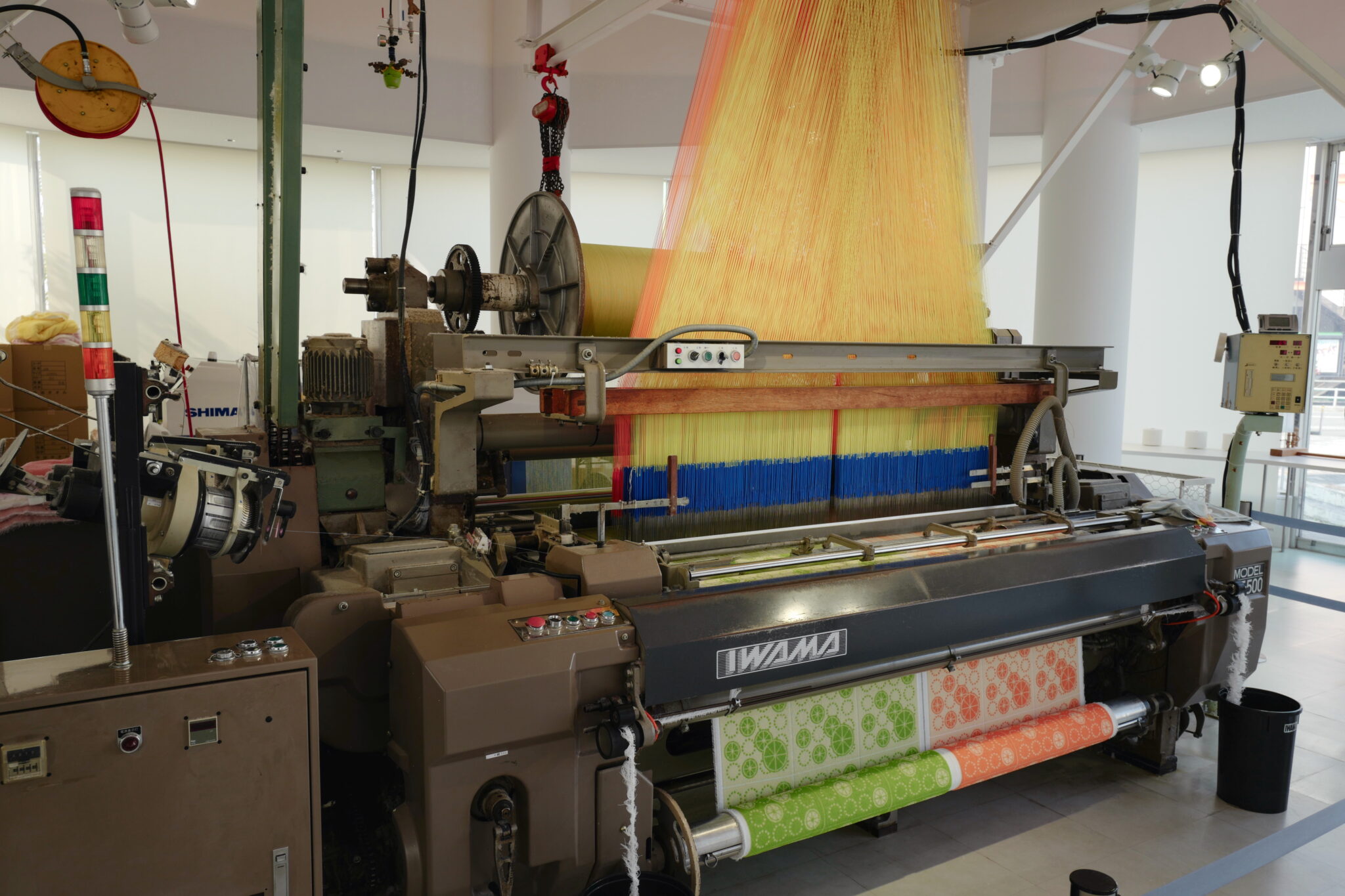
Imabari is known for its town manufacturing, with over 200 factories locally. With a bit of time to kill, we took a bus to the headquarters of Imabari Towel, where they have a store and a lab where you can see how their towels are manufactured.
After this, we caught a train to Matsuyama for the next leg of our journey.
Overall, the Shimanami Kaidō was a really enjoyable journey and the perfect cure for our jetlag. As with most things in Japan, it was impeccably well organised and safe. If I were doing it again, I’d stop overnight somewhere earlier in the first day so we could have spent more time exploring the islands.

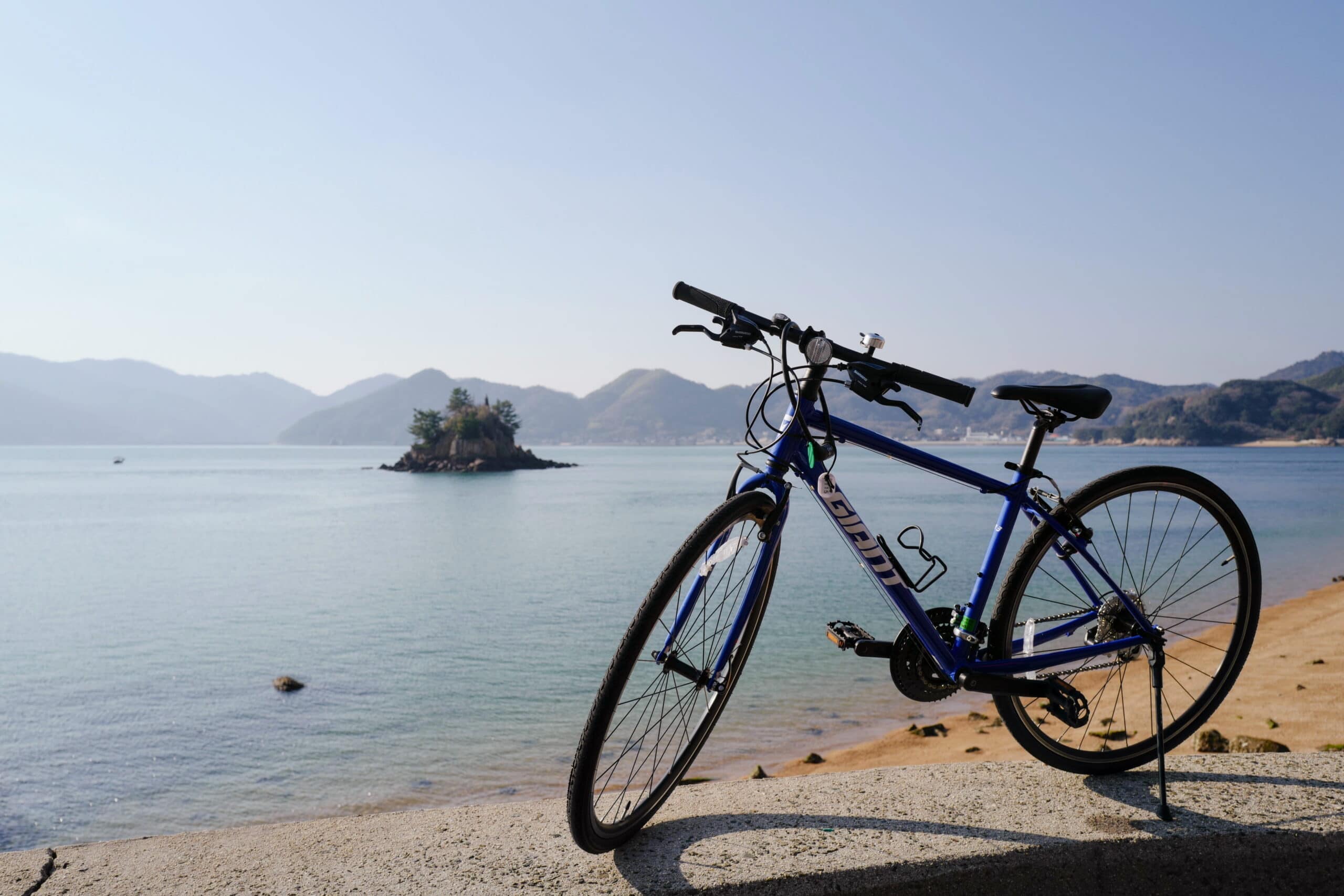
Reply